United States, History of the. The history of the United States is a story about the lives of many groups of people. It includes accounts of conquest and struggle, mistreatment and resistance, creativity, bold action, and courage on the part of millions of people. The men and women who came to America and built the new nation called the United States had many reasons for their actions. Some wanted to get rich. Others wanted to improve people’s lives. Still others wanted religious or other freedoms, or simply wanted to be left alone. Many found inventive ways to adapt to conditions they did not expect.
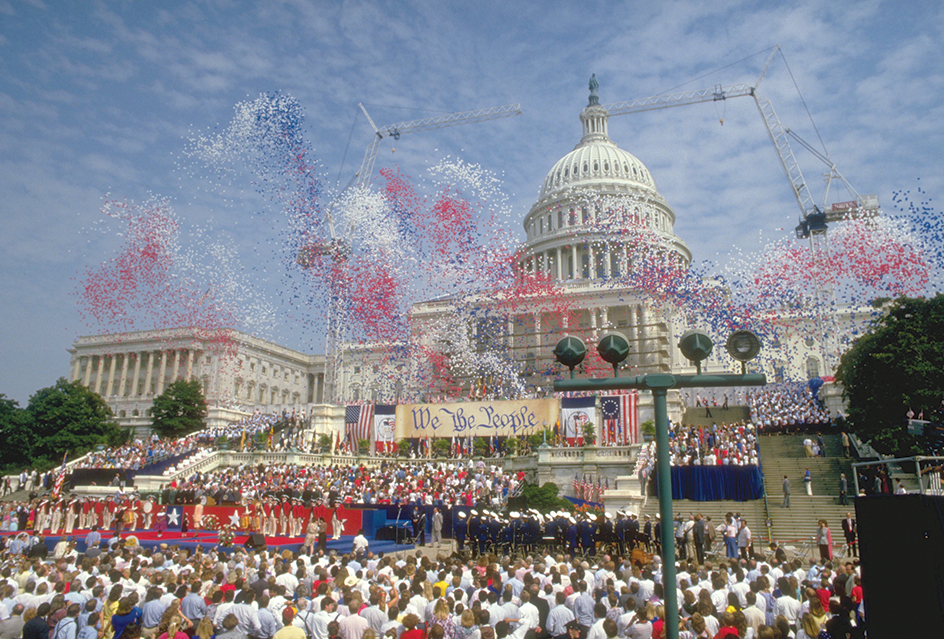
The United States has always been a place of diversity and variation. The first people to live in North America—now known as Indians or Native Americans—arrived thousands of years ago. Long before the arrival of the Europeans and Africans in the 1600’s, these peoples had established many different societies. Hundreds of separate Indigenous (native) groups spoke different languages, practiced their own religions, and pursued various economic activities. The groups maintained complex trading and diplomatic networks, some spanning the continent. The Europeans and Africans were similarly diverse, as were the Asians who began to arrive in the 1800’s.
Spain had started to colonize parts of North America in the 1400’s and 1500’s, mainly by sending soldiers and missionaries to enslave Native Americans and convert them to Christianity. In the 1600’s, England (which later became part of Great Britain and later still part of the United Kingdom) began sending settlers. These colonists took land from native peoples and, in many places, imported Africans as slave laborers. The British colonies expanded along the eastern coast of North America, eventually stretching from present-day Maine to Georgia. The settlers found British rule agreeable until conflicts in the 1760’s and 1770’s drove them to declare their independence from Britain. They established the United States of America in 1776. At the start, the survival of the new nation was in doubt. The colonists had to defeat the mighty British Empire in the American Revolution (1775-1783) to establish their claim to independence.
The American people dedicated their new nation to the principles of democracy, freedom, equality, and opportunity. From the start, these promises attracted people from other countries. Millions of immigrants, most of them from Europe, poured into the United States. At the same time, the slave trade brought hundreds of thousands of Africans against their will. Waves of white settlers invaded the lands of Indigenous peoples as they moved westward.
Rapid population growth, resulting from immigration and natural increase, was accompanied by rapid economic growth. Wherever they went, American settlers cut down forests and plowed vast stretches of prairie to establish farms. They found minerals and other valuable resources, and built towns nearby. Cities grew along the main transportation routes, and business and industry prospered. This rapid expansion made the United States one of the largest nations in the world in both size and population.
The United States has often been divided, largely because it has been so diverse. Americans have often found themselves separated by race, religion, and other differences. In the North, most states abolished slavery during and after the American Revolution. In the South, slavery expanded. In the West, settlers and Native Americans fought bitter wars when native groups resisted expansion into their lands. In the 1860’s—less than 100 years after the American Revolution—the very survival of the United States was threatened. Eleven Southern states withdrew from the Union and tried to establish an independent nation. The American Civil War (1861-1865) between the North and South followed. The North won the war, and the nation survived, though hundreds of thousands of people died in the fighting.
The economic growth of the United States, though rapid, has not always been smooth. At times, depressions brought the economy to a standstill. The worst depression struck in the 1930’s. Huge numbers of Americans lost their jobs and homes and fell into poverty.
In the 1900’s, the United States became one of the world’s strongest military powers. As such, it took a more active role in the world. This role led the United States into two world wars and a series of other conflicts. The Vietnam War (1957-1975) was the first foreign war in which U.S. combat forces failed to achieve their goals. After the war, many Americans questioned what the country’s role should be in world affairs. They asked the same question again after terrorists from the Middle East attacked New York City and Washington, D.C., in 2001.
In the early 2000’s, the United States faced many challenges. These challenges included the existence of poverty amid great wealth; continuing racial, ethnic, and religious discrimination; and pollution of the environment. The threat of terrorism heightened disputes over national security and the protection of civil liberties. Nevertheless, Americans held a deep pride in their country, and most believed it could overcome these challenges.
America before colonial times
For thousands of years, Native Americans were the only inhabitants of the Western Hemisphere. Most historians believe the first groups were hunters who came to North America from Asia at least 15,000 years ago by crossing a narrow strip of land that then linked Siberia to Alaska. After the land bridge sank underwater, people crossed the Bering Strait by boat. The migrants spread southward and eastward across North and South America. By A.D. 1000, ancestors of the Inuit—another Asian people—lived in what is now northern Alaska. The Inuit spread eastward across the Arctic but remained in the Far North, near the Arctic Circle.
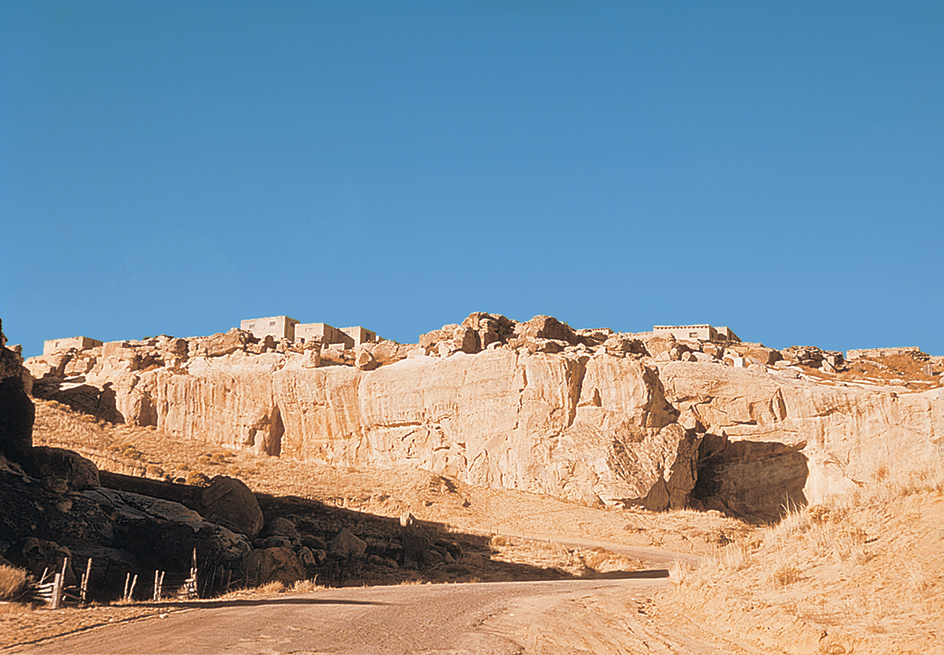
The Vikings were probably the first Europeans to reach America. A band of these seafarers explored and temporarily settled part of the east coast of North America about 1,000 years ago. But serious exploration and settlement of America by Europeans did not begin for another 500 years, until 1492. Then, the Italian navigator Christopher Columbus sailed westward from Spain, seeking a short sea route to Asia. He found, instead, a vast New World. After Columbus, European explorers, soldiers, and settlers flocked to America.
The first Americans.
Scholars do not know how many Indigenous people lived in the Americas in the 1400’s, when Europeans reached what they called the New World. Many experts believe there were from 30 million to 75 million people living in all of North and South America, with about 1 million to 5 million in what is now the United States. But some estimates run as high as 118 million for the Americas, including more than 15 million in the United States.
The Native Americans formed hundreds of cultures, with many different languages and ways of life. Some groups, including the Aztec, Inca, and Maya in the south, established advanced civilizations. They erected cities with huge, magnificent buildings. They also accumulated gold, jewels, and other riches. North of Mexico, most Native Americans lived in small villages and relied on hunting or farming. The main crops were corn, beans, and squash. In the dry Southwest, the Anasazi built large towns and vast irrigation systems. In the wetter and cooler climate of what is now the Midwest, the Mississippians also built large towns and complex cultures. The fortified city of Cahokia, in present-day Illinois, may have had a population of 10,000 to 20,000 at its peak. In the 1500’s, Spanish explorers visited flourishing Mississippian towns in present-day Alabama, Georgia, and Oklahoma.
In the Northeast, from Canada to North Carolina, most Indigenous people spoke either the Iroquoian or Algonquian languages. The Iroquois lived in permanent villages and combined farming with hunting and gathering wild plants. They had great military power. By the early 1600’s, five Iroquois nations had founded the Iroquois League, a diplomatic arrangement that increased their strength.
The Algonquian peoples were spread over a large area but were less powerful. Some Algonquian lived in permanent villages and mixed farming with fishing, hunting, and gathering. Others had more mobile lifestyles. The Algonquian were divided into many tribes. One of their largest organizations was the Powhatan Confederacy in Virginia. Under the Algonquian leader Powhatan, this confederacy had united more than 30 tribes with about 15,000 people by 1607, when the first Europeans reached their land.
European discoveries.
About A.D. 1000, a Norse people called the Vikings, who had settled in Greenland, became the first white people to reach the North American mainland. Led by Leif Eriksson, they sailed to what is now the Canadian province of Newfoundland and Labrador and explored the area. But they did not establish permanent settlements.
By the time of Columbus’s voyage in 1492, most Europeans did not know that the Viking expeditions had taken place, nor that the Western Hemisphere even existed. The Italian trader Marco Polo’s Description of the World (1298) had described fabulous wealth and advanced technologies in the Far East. Inspired by such reports, Europeans became interested in finding a short sea route to China, Japan, and India.
Columbus, an Italian navigator, believed he could find a short route to the East by sailing west. Financed by the Spanish king and queen, he set sail westward from Spain on Aug. 3, 1492. Columbus reached land on October 12 and assumed he had arrived in the Far East. Actually, he landed on an island in the Bahamas, just east of the North American mainland. He explored other Caribbean islands, still thinking he was in Asia. Leaving a crew on the island of Hispaniola, he returned to Spain and published a widely read account of his voyage. In 1493, Columbus returned to Hispaniola with a large army. Over the next few years, he conquered and enslaved the Taino people. The Taino were a subgroup of the Arawak, who lived on most of the Caribbean Islands. Many Indigenous people died from exposure to European diseases. The Arawak population of about 300,000 in 1492 fell to about 500 in 1548. Steep population drops—resulting from war, enslavement, and especially epidemics of European diseases—also struck other Indigenous peoples across the Americas.
Columbus died in 1506. He still believed he had sailed to an unknown land in the Far East. Other Europeans called this land the New World and honored Columbus as its discoverer. Europeans also called it America, after the Italian explorer Amerigo Vespucci, who claimed to have explored the land in 1497. However, many scholars have questioned Vespucci’s claims of discovery.
Exploration and early settlement.
The discovery of America caused great excitement in Europe. To many Europeans, the New World offered opportunities for wealth, power, and adventure. European rulers and merchants wanted to gain control of the hemisphere’s resources to add to their wealth. Rulers also sought New World territory to increase their power. Christian missionaries wanted to spread their religion to the Native Americans. Explorers saw the New World as a place to seek adventure, fame, and fortune. Before long, Europeans from several countries sailed across the Atlantic Ocean to explore America and set up trading posts and colonies. For details, see Exploration.
The Europeans often treated native people cruelly. But even when they were friendly, their arrival was disastrous for the Native Americans, who had never encountered many diseases that were common in Europe. Horrifying epidemics of smallpox, influenza, and other illnesses wiped out Indigenous populations across the Americas.
The Spanish and Portuguese.
During the 1500’s, the Spanish and Portuguese spread out over the southern part of the Western Hemisphere in search of gold, silver, and jewels. The Spaniards conquered the Inca of Peru, Maya of Central America, and Aztec of Mexico. The Portuguese gained control of the Guarani and other groups in what is now Brazil. By 1600, Spain and Portugal controlled most of the Western Hemisphere from Mexico southward.
Also during the 1500’s, Spaniards moved into what is now the southeastern and western United States. They did not discover riches there, but they took control of Florida and the land west of the Mississippi River. In 1526, the Spanish founded San Miguel de Gualdape, the first European settlement in the present-day United States. Historians believe the colony stood on the coast of what is now South Carolina or Georgia. The Spanish soon abandoned it because of disease or bad weather. In 1565, they founded St. Augustine, Florida, the oldest permanent European settlement in what is now the United States. They also founded missions and other settlements in the West and South. See Mission life in America; Spain (The Spanish Empire).
The English and French
began exploring eastern North America around 1500. At first, both nations sent only explorers and fur traders. But after 1600, they began founding permanent settlements. The French settlements were chiefly in what is now Canada, but also in the territory from the Great Lakes to Louisiana. The English settlements included the 13 colonies that formed the United States in 1776. 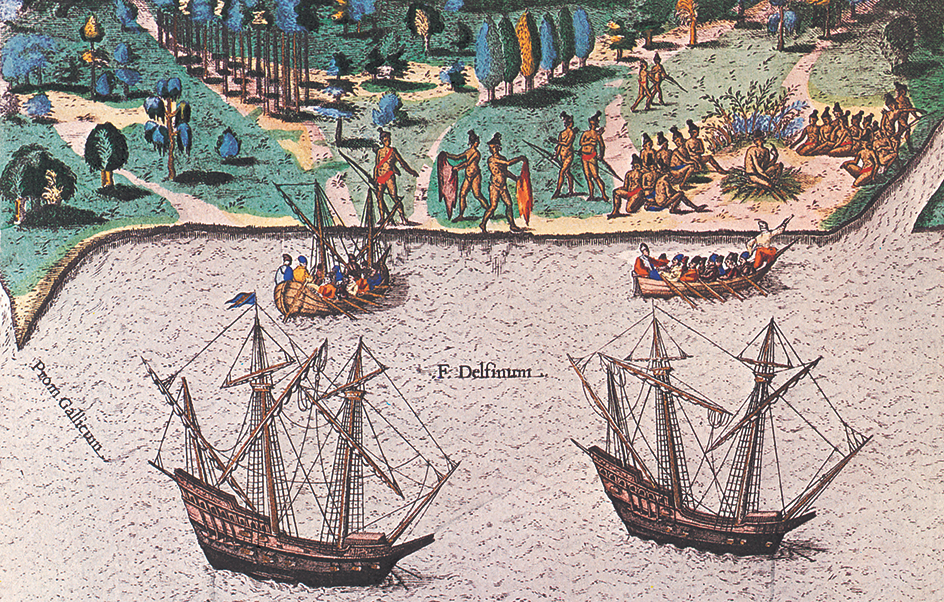
For years, Britain and France struggled for control of Canada and the land between the Appalachian Mountains and Mississippi River. They also competed with each other for trade with Native American groups.
Impact on Native Americans.
Because the early explorers spread diseases that caused huge epidemics among Indigenous people, the settlers who followed often moved onto lands that were sparsely populated. Some found cleared fields and recently abandoned towns that helped them recognize the best places to settle.
Many Native Americans traded with the early European settlers and helped them survive in the wilderness. At first, the Indigenous people did not realize how great a threat the Europeans were, mainly because the newcomers seemed unable even to feed themselves. As growing numbers of settlers pushed westward, Native Americans realized that they presented a grave threat, and white and Indigenous people became enemies. Even so, they maintained economic and diplomatic links.
Contact with the Europeans changed Native American life in many ways. Trade with the Europeans, who wanted furs and deerskins to export to Europe, caused Indigenous people to hunt and trap many more animals than before. Once they exhausted local supplies of beaver and other animals, they invaded the territories of other tribes, causing wars between Native American groups. Trade with the Europeans also led many Native Americans to replace their traditional technologies with imported ironwork, cloth, and guns. This switch made Native Americans dependent on trade with Europeans. Disease was the most devastating European import into the Americas. However, large supplies of cheap alcohol from European traders also brought harm to many Indigenous people.
The American Colonies (1607-1753)
The first English attempt to establish a colony in what is now the United States took place in 1585. Sir Walter Raleigh sent settlers to Roanoke Island, off the coast of North Carolina. But this attempt at colonization failed (see Lost Colony).
In 1607, a band of about 100 English colonists reached the coast near Chesapeake Bay. They founded Jamestown, the first permanent English settlement in North America (see Jamestown). During the next 150 years, a steady stream of colonists arrived and settled near the coast. Most were British, but they also included people from France, Germany, Ireland, and other countries. Many were Africans who were kidnapped from their homes and brought to the colonies as slaves.
The earliest colonists faced great hardship and danger. They suffered from lack of food and from disease. Sometimes, the colonists maintained peace and trade with native people. Other times, they fought fierce wars with them. Soon, however, the colonies prospered. They established small family farms and large slave-labor plantations; built towns, roads, and churches; and began many small industries. Their populations grew, and their wealth increased.
The colonists developed political practices and social beliefs that have had a major influence on the history of the United States. Some established democratic governments. Most placed a high value on individual liberty and respected hard work as a means of getting ahead. Many had the unsupported belief that white Europeans were superior to Native Americans and Africans. As a result, they felt they had the right to take Native American land by violence and to force African labor through the institution of slavery.
In the early 1600’s, the English king began granting charters, documents bestowing the right to establish colonies in America. The charters went to companies of merchants and to individuals called proprietors. The merchant companies and proprietors were responsible for recruiting people to settle in America and, at first, for governing them. By the mid-1700’s, most of the settlements had been formed into 13 colonies. Each had a governor and a legislature, but was under the ultimate control of the British government. 
The Thirteen Colonies stretched from what is now Maine in the north to Georgia in the south. They included the New England Colonies of Massachusetts, Connecticut, Rhode Island, and New Hampshire; the Middle Colonies of New York, New Jersey, Pennsylvania, and Delaware; and the Southern Colonies of Virginia, Maryland, North Carolina, South Carolina, and Georgia. (Some historians classify Virginia and Maryland, which lie along Chesapeake Bay, as Chesapeake Colonies.)
Virginia and Maryland
were among the earliest British colonies. They were established for different reasons, but they developed in much the same way.
Virginia was the largest of the Thirteen Colonies. It began with the Jamestown settlement of 1607. The Virginia Company of London (later shortened to Virginia Company), an organization of English merchants, sent settlers to America hoping they would find gold and other riches. But the settlers found no riches and faced great hardships. Captain John Smith played a major role in helping the colony survive its early days, mainly by forcing the colonists to grow food. In 1612, some Jamestown colonists began growing tobacco, which the Virginia Company sold in Europe. Virginia prospered as tobacco production increased in response to rising European demand. English settlers came in droves and established new farms and settlements. 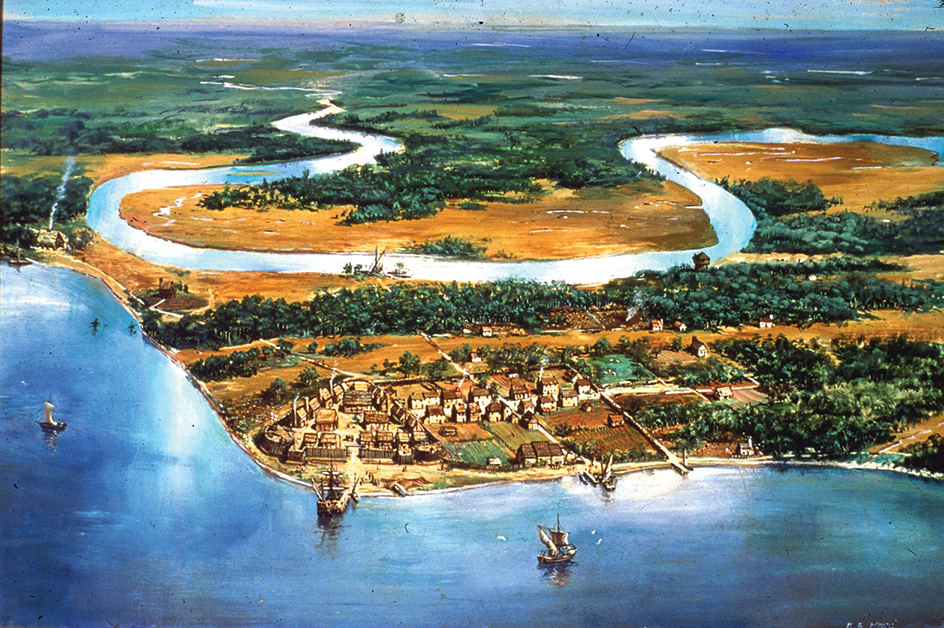
Maryland was founded by the Calverts, a family of wealthy Roman Catholics. Catholics were persecuted in England, and the Calverts wanted a place where they could have religious freedom. In 1632, Cecilius Calvert became proprietor of the Maryland area. Colonists, led by Cecilius’s brother, Leonard Calvert, established the first Maryland settlement in 1634. The Maryland settlers also raised tobacco. As production increased, their colony prospered.
The settlers of Virginia and Maryland made important strides toward self-government and individual rights. The Virginians appealed to the Virginia Company for a voice in their local government. The company wanted to attract newcomers to its colony, and so it agreed. In 1619, it established the House of Burgesses, the first representative legislature in America. Maryland attracted both Catholic and Protestant settlers. In 1649, the Calverts granted religious freedom to people of both faiths. This grant was the first law in North America calling for religious toleration.
Virginia and Maryland also began a practice that violated individual rights—slavery. By the 1680’s, planters in both colonies had begun to buy enslaved Africans and force the Africans to work on their lands.
New England.
Puritans, originally financed by English merchants, founded the New England Colonies. Puritans were English Protestants who faced persecution because of their opposition to the Church of England, their homeland’s official church. See Puritans.
In 1620, a group of Separatists (Puritans who had separated from the Church of England) and other colonists settled in New England. Called Pilgrims, they founded Plymouth Colony, the second permanent English settlement in North America. Between 1628 and 1630, Puritans founded the Massachusetts Bay Colony at what are now Salem and Boston. Plymouth became part of Massachusetts Bay Colony in 1691. See Plymouth Colony; Massachusetts Bay Colony. 
Settlers spreading out from Massachusetts founded the other New England Colonies. Connecticut was first settled in 1633 and became a colony in 1636. Colonists took up residence in Rhode Island in 1636, and Rhode Island became a colony in 1647. New Hampshire, first settled in 1623, became a colony in 1680. Important Puritan leaders included governors William Bradford of Plymouth and John Winthrop of Massachusetts, and Roger Williams, the founder of Rhode Island.
Life in New England centered on towns organized around churches. Each family farmed its own plot of land, but they all lived close together in a town so they could walk to church. Most of the New England colonists farmed for a living. But they also developed a thriving shipping business and started many small industries, including fishing, lumbering, and crafts. There were few enslaved Africans in New England. 
The Puritans of New England did not tolerate religious dissent, but they made important contributions to democracy in America. In 1620, the Pilgrims established the Mayflower Compact, an agreement among the adult males to provide “just and equal laws” for all (see Mayflower Compact). The Puritans created a democratic political system in which all officials were elected. At town meetings, most male adults could participate in decisions.
The Middle Colonies.
Soon after English settlement began, the Dutch founded New Netherland, a trading post and colony that included what are now New York and northern New Jersey. They started a settlement in New York in 1624 and in New Jersey in 1660. In 1638, the Swedes established New Sweden, a settlement in present-day Delaware and southern New Jersey. The Dutch claimed New Sweden in 1655. In 1664, the English took over New Netherland and New Sweden. 
King Charles II of England gave the New York and New Jersey territory to his brother, James, Duke of York. Friends of the duke founded huge farming estates in New York along the Hudson River. New York City developed from the Dutch city of New Amsterdam. It became a shipping and trading center. The Duke of York gave New Jersey to two of his friends. They allowed much political and religious freedom, and New Jersey attracted many settlers.
Swedes established a small settlement in what is now Pennsylvania in 1643. In 1681, a wealthy Englishman named William Penn received a charter that made him the proprietor of Pennsylvania. Penn was a member of the Quakers, a religious group that was persecuted in many countries (see Quakers). At Penn’s urging, Quakers and other settlers who sought freedom flocked to Pennsylvania. Penn carefully planned settlements in his colony, and Pennsylvania thrived. Philadelphia became the largest city in colonial America. Penn also became proprietor of the Delaware region. 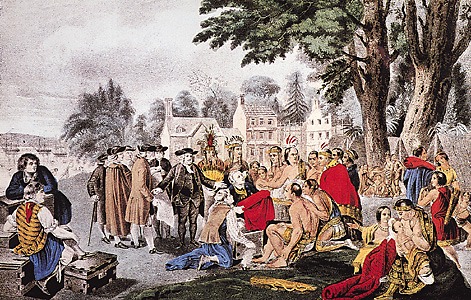
Most settlers in the Middle Colonies were farmers, whose main crop was wheat. The colonies developed thriving commerce and small industries. They had more enslaved Africans than New England had, but far fewer than the South. The Middle Colonies contributed to democracy and religious freedom in America. Adult white males could vote for most officials. Most colonists were Protestants but belonged to many different churches.
North Carolina, South Carolina, and Georgia.
About 1650, colonists from Virginia established a settlement in northern Carolina, the land between Virginia and Florida. In 1663, King Charles II gave Carolina to eight of his nobles. He called them lords proprietors (ruling landlords). Carolina soon attracted English settlers, French Protestants called Huguenots, and Americans from other colonies. In 1712, the northern two-thirds of the region was divided into two colonies, North Carolina and South Carolina. Much of North Carolina consisted of small farms. Many enslaved Africans also labored in the colony on tobacco plantations and in forest industries. In South Carolina, wealthy landowners purchased Black Africans and their descendants to work the large plantations where they grew rice and indigo. Indigo is a plant that produces blue dye for coloring textiles. South Carolina was the only colony that had more Black people than white people.
Few European settlers came to the southern one-third of Carolina until 1733. Then James Oglethorpe, a British social reformer, founded Georgia there. Oglethorpe hoped Georgia would become a colony of small farms. The colony’s charter banned the importation of Africans so that neither slavery nor plantations would develop. But Georgia later changed the law to allow settlers to bring in enslaved people, and plantations flourished.
Life in colonial America.
Reports of the economic success and religious and political freedom of the early colonists attracted a steady flow of settlers. Through immigration and natural increase, as well as the slave trade from Africa, the colonial population rose to 11/3 million. The colonies drew newcomers from almost every country of western Europe. Despite the varied backgrounds of the early settlers, the white Americans of the mid-1700’s had, as one writer said, “melted into a new race of men.” The slave trade brought in so many Africans that, by the 1750’s, Black people made up one-fifth of the population.
Why the colonists came.
A person who came to America faced hardship and danger. But the New World also offered the opportunity for a fresh start. As a result, many people were eager to become colonists. Some Europeans came seeking religious freedom. In addition to Puritans, Catholics, Quakers, and Huguenots, they included Jews and members of German Protestant sects.
Many Europeans became colonists for economic reasons. Some were well-to-do but saw America as a place where they could become rich. Many poor Europeans came to America as indentured servants. An indentured servant agreed to work for another person, called a master. In return, the master paid for the servant’s transportation across the Atlantic and provided food, clothing, and shelter. Most agreements between servants and masters lasted from four to seven years, after which the servants were freed.
Others who came to America had no choice in the matter. A few were convicts from overcrowded English jails. Most were Africans captured in intertribal warfare or kidnapped, and then sold to European traders. The convicts and enslaved people were sold into service in America.
At first, enslaved Black people had the same legal status as white indentured servants. But by about 1660, colonies began to enact laws that became known as slave codes, which stripped the Africans of basic human rights. All the American Colonies had enslaved people, but slavery became more common in the South than in the North. The South had plantations that required enormous labor, and their owners found it profitable to buy enslaved people to do the work. By the 1750’s, enslaved African Americans accounted for 2 percent of the population in Massachusetts and Pennsylvania, 40 percent in Virginia, and 60 percent in South Carolina.
Economic and social opportunity.
The earliest colonists struggled to produce enough food to stay alive. But before long, America had a thriving economy. Planters and the people they enslaved grew large crops of tobacco, rice, and indigo. Small farmers raised livestock and such crops as wheat and corn. Many colonists fished and hunted. Some cut lumber from forests to make barrels, ships, and other products. The colonists used part of what they produced, but they exported large quantities of goods. They traded chiefly with Britain and the British colonies of the British West Indies. The colonies exported tobacco, wheat, lumber, fish, rice, and indigo. They imported manufactured goods, especially clothing, furniture, and metal utensils from Britain. Their other major imports were sugar, tea, and African captives. The colonies traded with the French, Dutch, and Spanish as well. 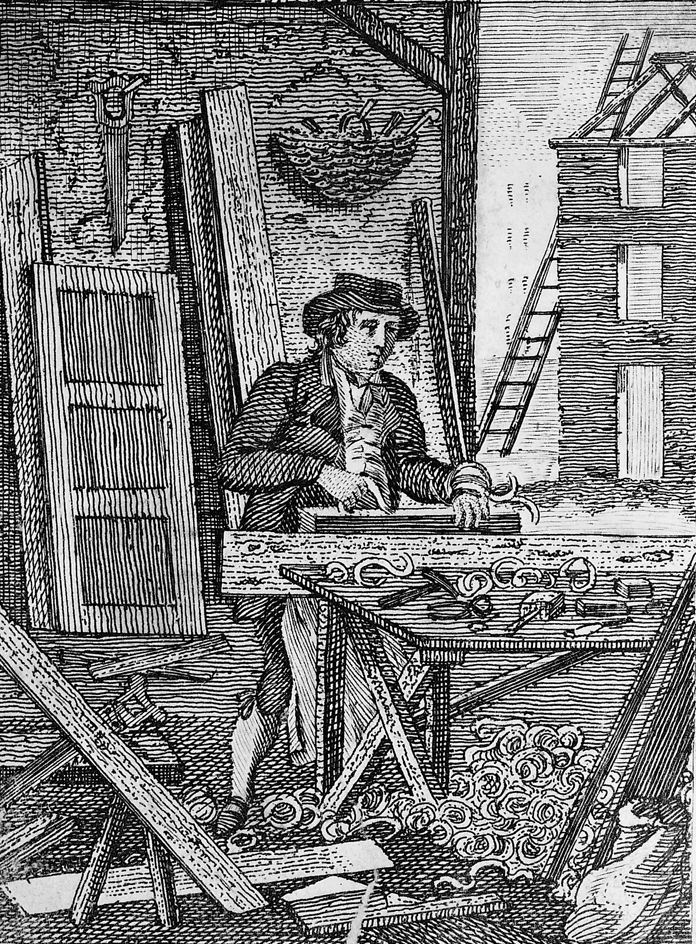
Colonial America, like Europe, had both wealthy upper-class and poor lower-class people. But in Europe, traditions designed to keep wealth concentrated among the upper classes made it difficult for anyone to achieve economic and social advancement. America had few such traditions. New waves of immigrants arrived all the time, and advancement was possible for most people. Land became more plentiful and easy to obtain as settlers took more of it from Indigenous groups. There were also many opportunities to start businesses. Many indentured servants acquired land or worked in a trade after their period of service ended. Some former servants or their sons became well-to-do merchants or landowners.
The colonies had a great need for professional people, such as lawyers, doctors, schoolteachers, and members of the clergy. Women were excluded from these careers and many other jobs. However, the professions were open to most white men because they required less specialized training than they do today.
Colonial government.
The colonists lived under British rule. Voters elected their own colonial legislatures, but the British king appointed governors and other top officials in most colonies. The British also passed many laws to regulate trade in ways that helped Britain and only sometimes helped the colonies. But the colonists often ignored British laws they disliked. The British found it hard to enforce laws across the Atlantic Ocean. The tightening of British control over the colonists after they had grown self-reliant led to a clash between the Americans and the British in the late 1700’s. For more information on life in the American Colonies, see Colonial life in America.
The movement for independence (1754-1783)
Relations between the American Colonies and Britain began to break down during the 1760’s. Suddenly, Britain tried to tighten its control over the colonies. Its leaders passed laws that taxed the colonists and restricted their freedoms. The colonists had become accustomed to governing themselves. As a result, they resented what they saw as British interference in their internal affairs. Friction between the Americans and British mounted until, in 1775, the Revolutionary War broke out. During the war—on July 4, 1776—the colonists declared their independence. In 1783, they defeated the British and made their claim to independence stick.
The French and Indian War.
Britain and France had struggled for control of eastern North America throughout the colonial period. As their settlements moved inland, both nations claimed the vast territory between the Appalachian Mountains and the Mississippi River. This struggle led to the French and Indian War (1754-1763), which the British won. Under the Treaty of Paris of 1763, Britain gained control of (1) almost all French territory in what is now Canada and (2) all French territory east of the Mississippi except New Orleans. Britain also received Florida from Spain in 1763. As a result, the British controlled almost all of North America from the Atlantic to the Mississippi.
The French and Indian War was a turning point in American history. It triggered a series of British policy changes that eventually led to the movement for colonial independence. See French and Indian wars (The French and Indian War).
Policy changes.
The French and Indian War created problems for Britain. It led to a huge Native American uprising in America in 1763, as colonists moved west into the territory Britain won from France. The uprising became known as Pontiac’s Rebellion, or Pontiac’s War. Also, Britain spent so much money fighting the French and Indian War that its national debt had nearly doubled. George III, who had become king in 1760, instructed Parliament to solve these problems. Parliament began passing laws that taxed the American colonists, restricted their freedom, or both.
In 1763, Parliament voted to station a standing army in North America to defend the colonists against the Indigenous people. Two years later, in the Quartering Act, it required the colonists to help pay for this army by providing the troops with living quarters and supplies. Britain also sought to keep peace with the Native Americans. In the Proclamation of 1763, it prohibited American colonists from settling west of the Appalachians, thus reserving that land for Native American peoples.
King George and Parliament believed the time had come for the colonists to start obeying trade regulations and paying their share of the cost of maintaining the British Empire. For that reason, in 1764, Parliament passed the Sugar Act. This law provided for the collection of taxes on molasses brought into the colonies. The Sugar Act also gave British officials the right to search the property of people suspected of violating the law. The Stamp Act of 1765 extended to the colonies the traditional English tax on newspapers, legal documents, and various other written materials (see Stamp Act). 
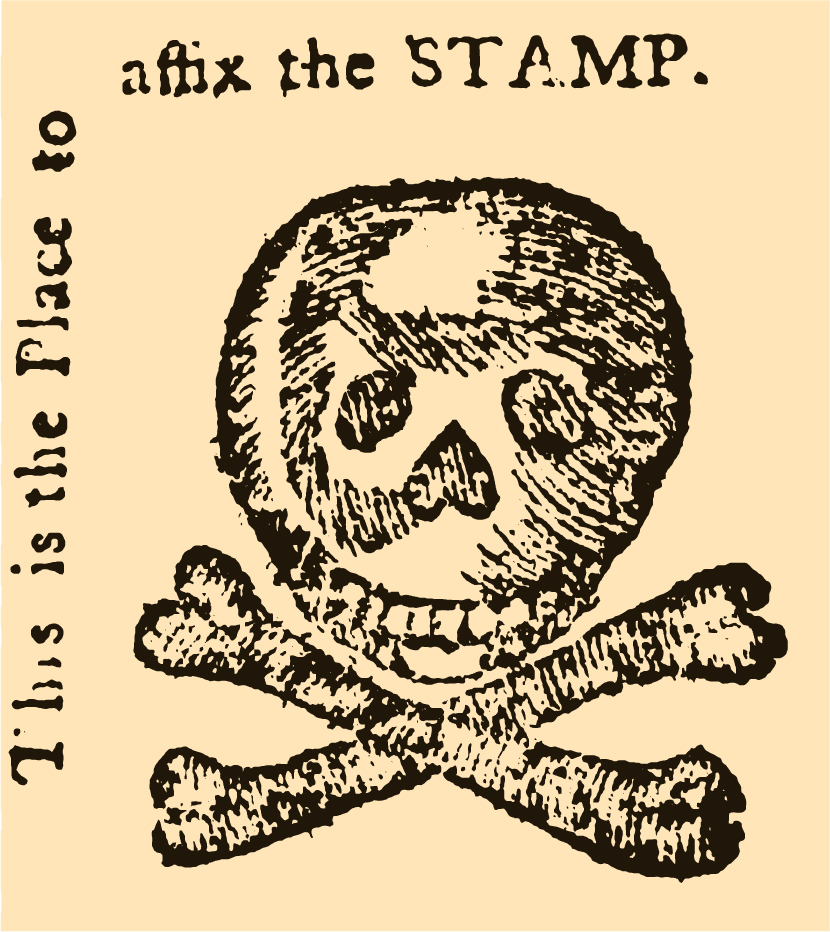
Colonial reaction.
The colonists opposed the new British policies. They claimed that the British government had no right to restrict their settlement or deny their freedom in any other way. They also opposed British taxes. The colonists were not represented in Parliament. Therefore, they argued, Britain had no right to tax them. The colonists expressed this belief in the slogan, “Taxation Without Representation Is Tyranny.”
To protest the new laws, colonists organized a boycott of British goods. Men joined secret clubs called Sons of Liberty that used threats of violence to prevent enforcement of the laws (see Sons of Liberty). Women made items for themselves and their families to avoid purchasing British goods. For example, they created and wore homespun garments instead of clothing imported from Britain. In 1765, representatives of nine colonies met in the Stamp Act Congress to consider joint action against Britain. The colonial boycott and other acts of resistance were successful. In 1766, Parliament repealed the Stamp Act. But at the same time, in the Declaratory Act, it insisted that Britain had the right to make laws for the colonies.
Renewed conflict.
The repeal of the Stamp Act eased tensions between the Americans and the British only briefly. In 1767, Parliament passed the Townshend Acts, which taxed lead, paint, paper, and tea imported into the colonies. Colonists responded with renewed protests and another boycott of British goods.
As tensions between the Americans and British grew, Britain sent troops into Boston and New York City. The sight of British troops in their streets aroused the colonists’ anger. On March 5, 1770, a crowd of Boston civilians taunted and attacked a small group of soldiers. The troops fired on the civilians, killing three people and wounding eight others, two of whom died later. This incident, the Boston Massacre, shocked Americans and disturbed the British. See Boston Massacre. 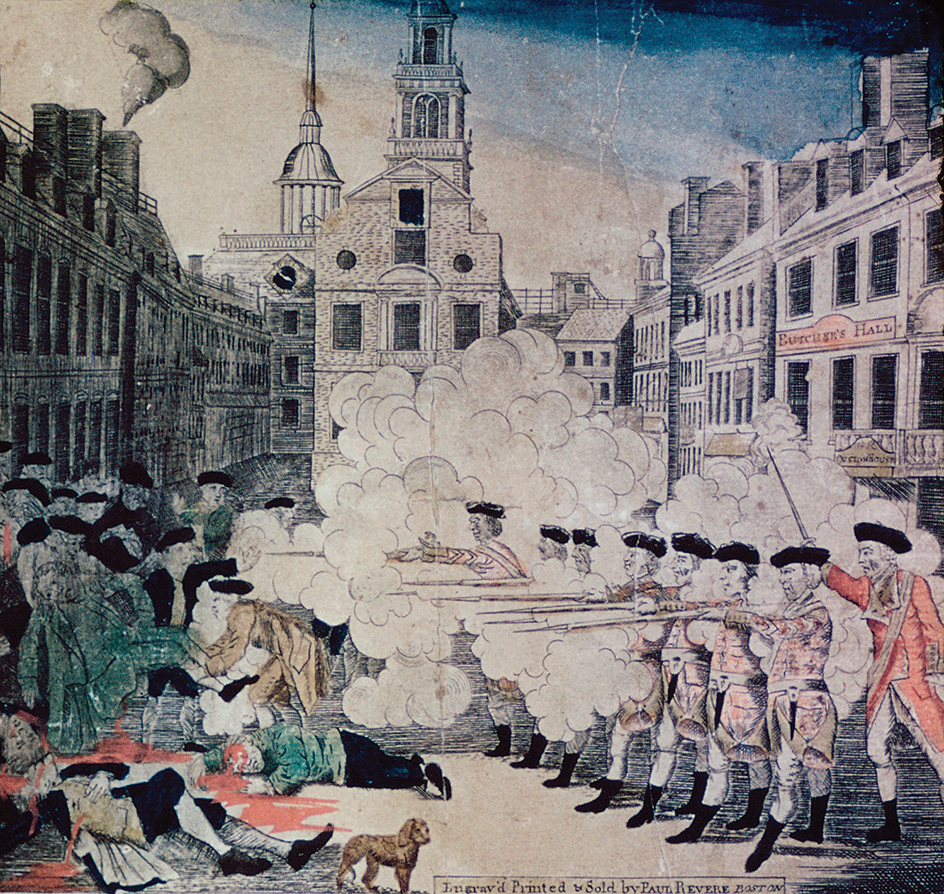
In 1770, Parliament repealed all provisions of the Townshend Acts except one, the tax on tea. Three years later, in the Tea Act, Parliament reduced the tax on tea sold by the East India Company, a British firm, and gave the company’s agents a monopoly on local tea sales in the colonies. The colonists saw these actions as taxing them and hurting American shopkeepers to benefit a big British company. Americans vowed not to drink tea, and mobs frightened the agents who tried to sell it. On Dec. 16, 1773, a group of colonists dramatized their opposition in the Boston Tea Party. Dressed as Native Americans, they boarded the East India Company’s ships and threw its tea into Boston Harbor. See Boston Tea Party. 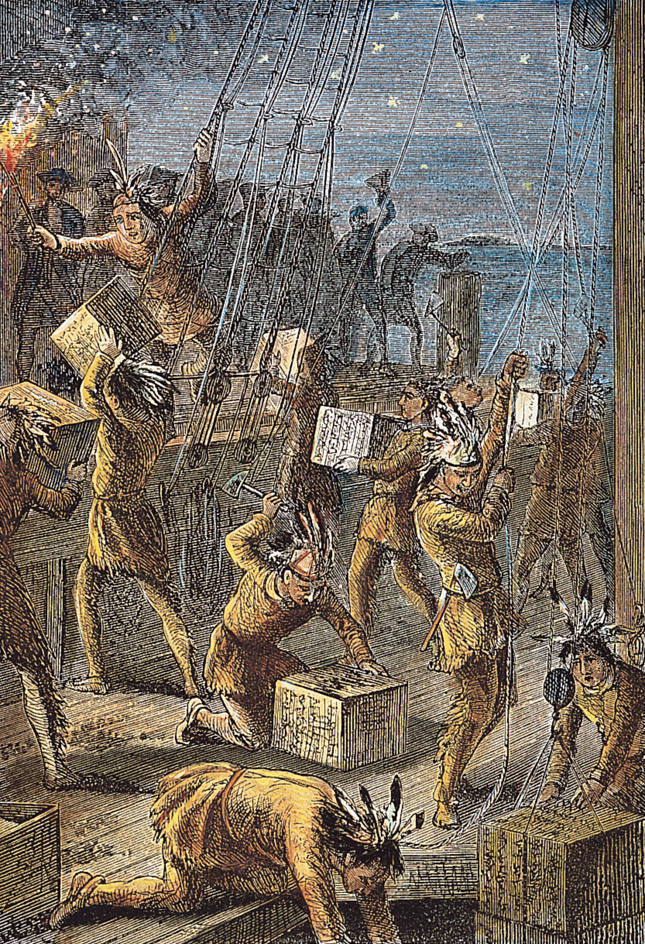
Angered by the Boston Tea Party, Parliament passed laws in 1774 to punish the colonists. Britain called these laws the Coercive Acts. Americans called them the Intolerable Acts. The laws included provisions that closed the port of Boston, suspended democratic government in Massachusetts, and required the colonists to house and feed British soldiers.
The First Continental Congress.
The Coercive Acts stirred colonial anger more than ever. On Sept. 5, 1774, delegates from 12 colonies met in the First Continental Congress in Philadelphia. The delegates were cautious men who disliked lawlessness and still hoped for a settlement with the British government. They reaffirmed American loyalty to Britain and agreed that Parliament could direct colonial foreign affairs. However, the delegates called for a boycott of all trade with Britain until Parliament repealed certain laws and taxes, especially the Coercive Acts. King George shattered hope for reconciliation by insisting that the colonies submit to British rule or be crushed. See Continental Congress.
The American Revolution begins.
On April 19, 1775, British troops tried to seize the military supplies of the Massachusetts militia. This action led to the start of the Revolutionary War. Colonists—first at Lexington, and then at Concord, Massachusetts—took up arms and inflicted numerous casualties on the British. Word of their success spread, and hope grew for victory over Britain. Colonial leaders met in the Second Continental Congress on May 10, 1775, to prepare for war. The Congress organized the Continental Army and, on June 15, chose George Washington of Virginia as its commander in chief. 
King George officially declared the colonies in rebellion on Aug. 23, 1775. He warned the Americans to end their rebellion or face certain defeat. But the threat had little effect on the colonists’ determination. Some Americans, called Loyalists, remained true to Britain, but a growing number of Americans supported the fight for independence. Many who had been unsure were convinced by Thomas Paine’s pamphlet Common Sense (1776). Paine called for complete independence from Britain and the creation of a strong federal union. 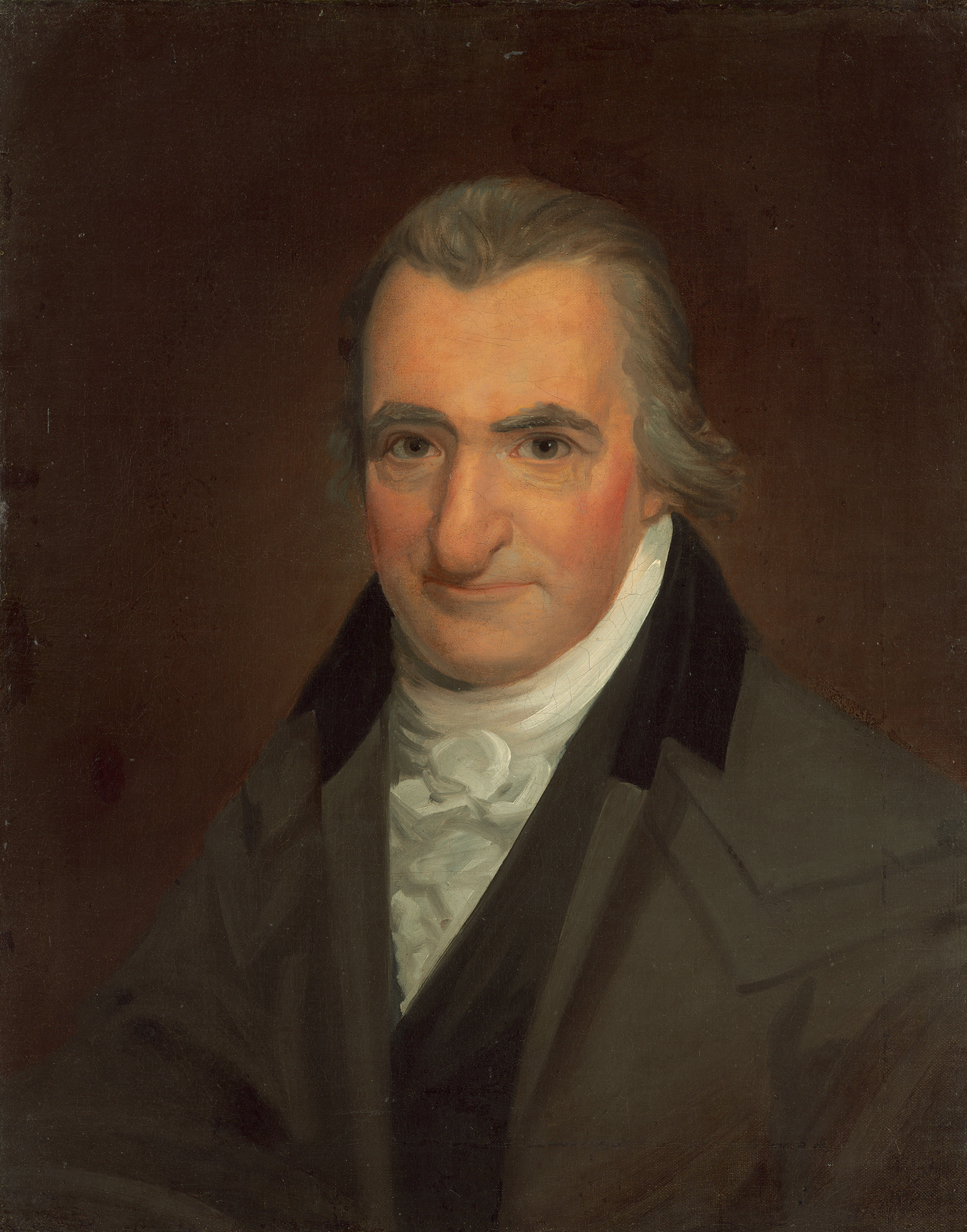
The Declaration of Independence.
On July 4, 1776, the Second Continental Congress adopted the Declaration of Independence and formed the United States of America. Drafted by Thomas Jefferson of Virginia, the Declaration was a sweeping indictment of King George and the British Parliament. It also set forth certain principles that were basic to the revolutionary cause. It says all men are created equal and are endowed by their Creator with inalienable rights—that is, rights which cannot be taken away—to life, liberty, and the pursuit of happiness. Governments exist to protect those rights and derive their powers from the consent of the governed. The Declaration also says that when a government ceases to preserve those rights, it is the people’s duty to change the government, or abolish it and form a new one.
American victory.
In the Revolutionary War, the Americans faced the world’s most powerful empire. They lacked a well-trained army, a navy, military supplies, and money. But they had the advantage of fighting on their home territory. The British, on the other hand, had well-trained and well-equipped troops and officers, a powerful navy, and Native American allies who wanted to prevent Americans from taking more of their lands. But the British were fighting far from home.
Foreign aid helped the American cause. France and other European nations who opposed Britain loaned money to the United States. In 1777, France entered the war on the American side. Its army and navy ultimately helped the United States win the war.
The Revolutionary War raged on through the 1770’s. Then, on Oct. 19, 1781, American and French troops won a decisive victory at the Battle of Yorktown in Virginia. Thousands of British soldiers surrendered. Within months, the British government decided to seek peace. Two years of peace negotiations and occasional fighting followed. Finally, on Sept. 3, 1783, the Americans and the British signed the Treaty of Paris. The treaty officially ended the Revolutionary War, with British recognition of American independence. For a detailed account of the war, see American Revolution.
Forming a new nation (1784-1819)
As a result of the Treaty of Paris of 1783, the new nation controlled all of North America from the Atlantic to the Mississippi between Canada and Florida. Canada remained British territory. Britain returned Florida to Spain, and Spain continued to control the area west of the Mississippi. The original Thirteen Colonies made up the first 13 states of the United States, which was only a loose confederation of states at first.
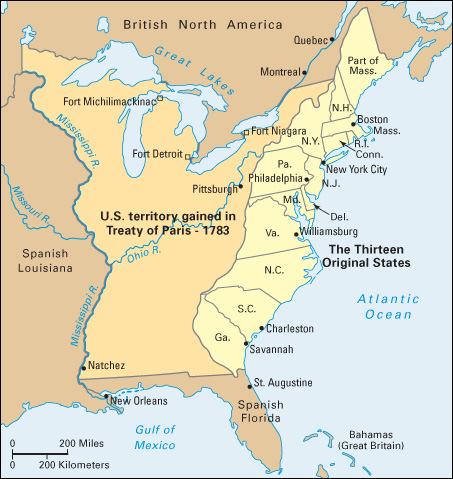
Establishing a government.
Americans began setting up a new system of government as soon as they declared their independence. Each of the new states had its own constitution before the Revolutionary War ended. The constitutions gave the people certain liberties, usually including freedom of speech, religion, and the press. In 1777, the Second Continental Congress designed a weak federal government under the Articles of Confederation. By the time the states finished ratifying the Articles in 1781, some Americans already thought the nation needed a stronger federal government.
The Articles of Confederation.
Under the Articles of Confederation, the federal government consisted of Congress. There was no president or federal court system. Congress organized the Revolutionary War effort and managed foreign diplomacy. But the Articles did not allow Congress to collect taxes, regulate foreign trade, or direct the activities of the states. 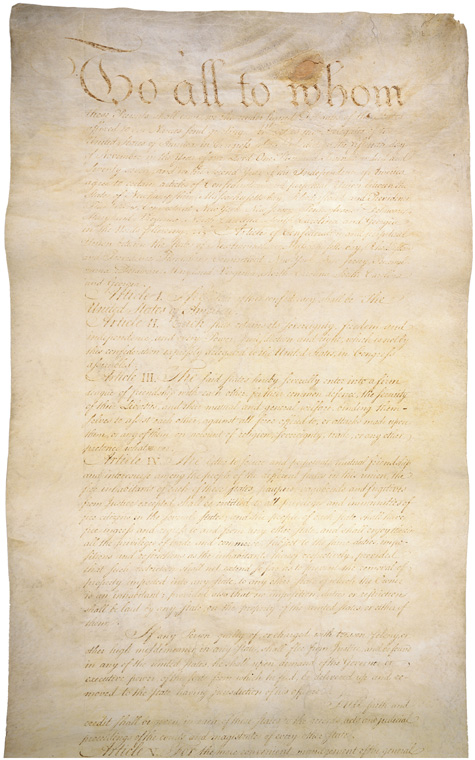
Under the Articles, each state worked independently for its own ends. Congress could make recommendations but could not enforce them. Yet the new nation faced problems that demanded a strong federal government. The United States had piled up a huge debt during the Revolutionary War. Because Congress could not collect taxes, the nation could not pay the interest on this debt to achieve a sound financial footing. Congress could not even pay the salaries of the Continental Army. It had no power to regulate the nation’s trade.
Some states issued their own paper money, causing sharp changes in the value of currency and economic chaos. In 1786 and 1787, this chaos led to Shays’s Rebellion in Massachusetts. Rebels led by Daniel Shays, a former army officer, shut down the state courts to stop them from hearing debt cases. Shays’s Rebellion scared many Americans and dramatized the weaknesses of the Articles of Confederation. See Articles of Confederation; Shays’s Rebellion.
Writing the Constitution.
In 1787, delegates from every state except Rhode Island met in Philadelphia’s Independence Hall to consider amendments to the Articles of Confederation. Rhode Island did not take part because its leaders worried about outside interference in the state’s affairs. The convention decided not to draft amendments to the Articles. Instead, the delegates wrote an entirely new Constitution for the United States. 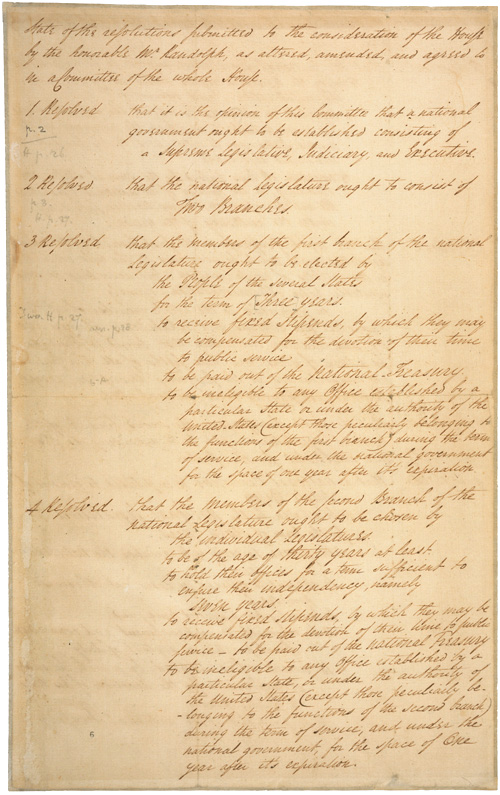
The delegates debated long and hard over the provisions of the Constitution. Some of them wanted a document that gave much power to the federal government. Others wanted to protect the power of the states and called for a weak central government. Delegates from large states said their states should have greater representation in Congress than the small states. But small-state delegates demanded equal representation in Congress. Delegates from the Southern States insisted that enslaved Black people be counted in determining the representation of each state in Congress. Northern delegates answered that because enslaved people could not vote, counting them would give white Southerners an unfair advantage.
The delegates finally reached an agreement on a new Constitution on Sept. 17, 1787. The authors worked out a system of government that satisfied the opposing views of the delegates to the convention. At the same time, they created a system that was flexible enough to continue in its basic form to the present day.
The men who wrote the Constitution included some of the most famous and important figures in American history. Among them were George Washington and James Madison of Virginia, Alexander Hamilton of New York, and Benjamin Franklin of Pennsylvania. The authors of the Constitution, along with such other early leaders as Thomas Jefferson of Virginia, won lasting fame as the Founding Fathers of the United States.
Provisions of the Constitution.
The Constitution established a two-house legislature, consisting of a House of Representatives and a Senate. In the House, representation was based on population to satisfy the large states. In the Senate, each state had two seats, regardless of its size, which pleased the small states. In a compromise between the Northern and Southern states, the Constitution provided that the population count for the House of Representatives would include all free people plus three-fifths of the enslaved Black population. The three-fifths clause caused resentment in the North because it gave the South extra power in Congress.
The Constitution also created the office of president of the United States. The president was elected by an Electoral College, a group of men chosen by the states (see Electoral College). Each state had a number of electors equal to its number of members in the House of Representatives plus its two senators. Because the House was based on the three-fifths clause and no enslaved people could vote, the Electoral College effectively granted white Southerners extra votes in presidential elections.
The Constitution gave many powers to the federal government, including the power to collect taxes and regulate trade. But the document also reserved certain powers for the states. The Constitution provided for three branches of the federal government: (1) the executive, headed by the president; (2) the legislative, made up of the two houses of Congress; and (3) the judicial, consisting of the federal courts. The authors of the Constitution created a system of checks and balances among the three branches of government. Each branch received specified powers and duties to ensure that the other branches did not have too much power.
Adopting the Constitution.
Before the Constitution became law, it needed ratification (approval) by nine states. Some Americans opposed the Constitution, and a fierce debate broke out. Hamilton, Madison, and John Jay responded to criticism of the document in a series of 85 newspaper essays published in 1787 and 1788. Called The Federalist, the essays gained much support for the Constitution (see Federalist, The). On June 21, 1788, New Hampshire became the ninth state to ratify. 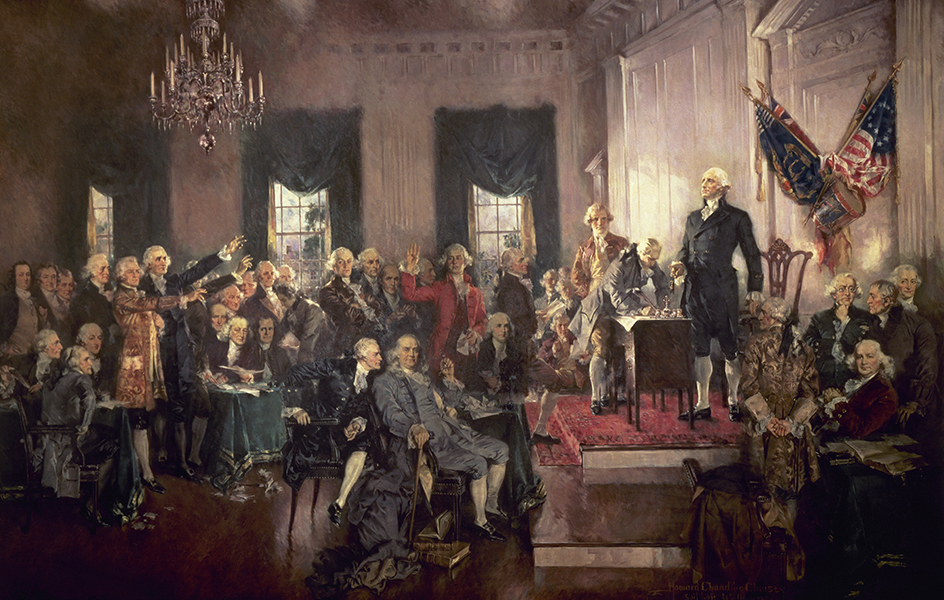
The Bill of Rights.
Much opposition to the Constitution stemmed from fears that it did not guarantee enough individual rights. In response, 10 amendments called the Bill of Rights were added. The Bill of Rights became part of the Constitution on Dec. 15, 1791. Among other things, it guaranteed freedom of speech, religion, and the press; and the rights to trial by jury and peaceful assembly. For more details, see Constitution of the United States; Bill of rights.
Setting up the government.
In 1789, the Electoral College unanimously chose George Washington to serve as the first president. It reelected him unanimously in 1792. Local voters elected members of the House of Representatives, as they do today. But state legislatures chose the members of the Senate, a practice that continued until the early 1900’s. The government went into operation in 1789, with its temporary capital in New York City. The capital moved to Philadelphia in 1790, and to Washington, D.C., in 1800. Loading the player...
Washington, the first President of the United States of America
Financial problems
plagued the new government. The national debt piled up during the Revolutionary War threatened the financial health of the United States. Americans split over how to deal with the financial problems. One group, led by Secretary of the Treasury Alexander Hamilton, wanted the federal government to take vigorous action to pay off the debt and foster economic growth. Another group, headed by Secretary of State Thomas Jefferson, wanted the government to proceed more cautiously on the debt and opposed government participation in economic affairs.
Hamilton proposed that the federal government increase tariffs (taxes on imports) and that it tax certain products made in the United States, such as liquor. The government would use the money to pay its own debts and those of the states. The government would also use the funds for ongoing expenses and internal improvements, such as roads and bridges. Hamilton proposed a national bank, an agency that would be authorized to issue currency and perform other financial services for the federal government.
Jefferson and his followers, who included many Southerners, denounced Hamilton’s plans. But Jefferson later agreed to support some of Hamilton’s proposals. In return, Hamilton agreed to support a shift of the national capital to the South. Congress approved the financial plan and moved the capital to Washington, D.C. Jefferson continued to oppose the bank proposal. But in 1791, Congress chartered a national bank to handle the government’s finances for 20 years (see Bank of the United States).
The new tax program led to an uprising called the Whiskey Rebellion. In 1794, farmers in Pennsylvania who made whiskey refused to pay the liquor tax. President Washington sent in troops who ended the rebellion. Washington’s action did much to establish the federal government’s authority to enforce its laws within the states. See Whiskey Rebellion.
Problems in foreign affairs.
The new government faced serious problems in foreign affairs. In 1793, France went to war against Britain and Spain. Americans were grateful to France for its help in the American Revolution, but they also wanted to reestablish trade with Britain and its colonies in the British West Indies. Americans disagreed over which side to support. Jefferson and his followers wanted to back France. Hamilton and his group favored Britain.
President Washington insisted that the United States remain neutral in the European war. He rejected French demands for support, and he also sent diplomats to Britain and Spain to clear up problems with those countries. Chief Justice John Jay, acting for Washington, negotiated the Jay Treaty with Britain in 1794. The treaty included a trade agreement and a British promise to remove troops still stationed on U.S. territory. In 1795, Thomas Pinckney negotiated the Pinckney Treaty, or Treaty of San Lorenzo, with Spain. This treaty settled a dispute with Spain over the Florida border. Spain also granted the United States free use of the Mississippi River. See Jay Treaty; Pinckney Treaty.
In 1796, Washington refused to seek a third term as president, in part because he thought staying too long would make him resemble a king. John Adams of Massachusetts succeeded Washington in 1797. At about that time, French warships began attacking U.S. merchant vessels. Adams, like Washington, hoped to use diplomacy to solve foreign problems. He sent diplomats to France to try to end the attacks. But three agents of the French government insulted the diplomats by demanding a bribe. The identity of the agents was not revealed. They were called X, Y, and Z, and the incident became known as the XYZ Affair. Reports of the French action created uproar in the United States. But Adams was determined to keep peace. In 1799, he again sent diplomats to France. This time, the United States and France reached a peaceful settlement. See XYZ Affair.
Establishing political parties.
Washington and many other American leaders opposed political parties, believing that they caused disagreement and ill will. But in the 1790’s, the disputes over government policies led to the establishment of two parties. Hamilton and his followers, chiefly Northerners, formed the Federalist Party. The Federalist Party favored a strong federal government and generally backed Britain in international disputes. Jefferson and his followers, chiefly Southerners, created the Democratic-Republican Party, also known as the Republican Party. It had no relation to today’s Republican Party. The Democratic-Republicans wanted a weak central government and generally sided with France in foreign disputes. See Federalist Party; Democratic-Republican Party.
The Alien and Sedition Acts.
It took a while for Americans to accept the idea that taking strong political positions was a normal part of democratic politics. The Federalists and Democratic-Republicans could not believe their opponents had the country’s best interests at heart. After the XYZ Affair, for example, the Federalist Party denounced the Democratic-Republicans for their support of France. The Federalists had a majority in Congress. They set out to silence their critics, including Democratic-Republicans and foreigners living in the United States. In 1798, Congress passed the Alien and Sedition Acts, with the approval of President Adams, who was also a Federalist. These laws made it a crime for anyone to criticize the president or Congress, and subjected foreigners to unequal treatment. 
These attacks on freedom caused a nationwide outcry. The protests included the Kentucky and Virginia Resolutions. The resolutions were statements by the Kentucky and Virginia state legislatures that challenged the constitutionality of the Alien and Sedition Acts. The most offensive parts soon expired or were repealed. But the Alien and Sedition Acts gave the Federalists the reputation as a party that restricted freedom. See Alien and Sedition Acts; Kentucky and Virginia Resolutions.
The Jeffersonian triumph.
Public reaction to the Alien and Sedition Acts helped Jefferson defeat John Adams to win election as president in 1800. Supporters of Jefferson called his election a triumph for his political philosophy, which became known as Jeffersonian democracy. Jefferson envisioned the United States as a nation of small farmers. In his ideal society, the people would lead simple but productive lives and direct their own affairs. As a result, the need for government would decline. Jefferson hoped that slavery would eventually die out but doubted that the government could do anything to restrict it. Despite his views, Jefferson took actions as president that expanded both slavery and the role of the government.
The Louisiana Purchase,
the first major action of Jefferson’s presidency, almost doubled the size of the United States. It also led, ultimately, to the westward expansion of slavery. In 1801, Jefferson learned that France had taken over from Spain a large area between the Mississippi River and the Rocky Mountains called Louisiana. After France failed to crush a revolution by enslaved people in Haiti, the French ruler, Napoleon I, abandoned his plans to exert influence in the Western Hemisphere. He decided to sell Louisiana to the United States. Jefferson arranged to buy it for about $15 million in 1803. The Constitution did not authorize the government to buy foreign territory. Jefferson agreed that he had created a new power. 
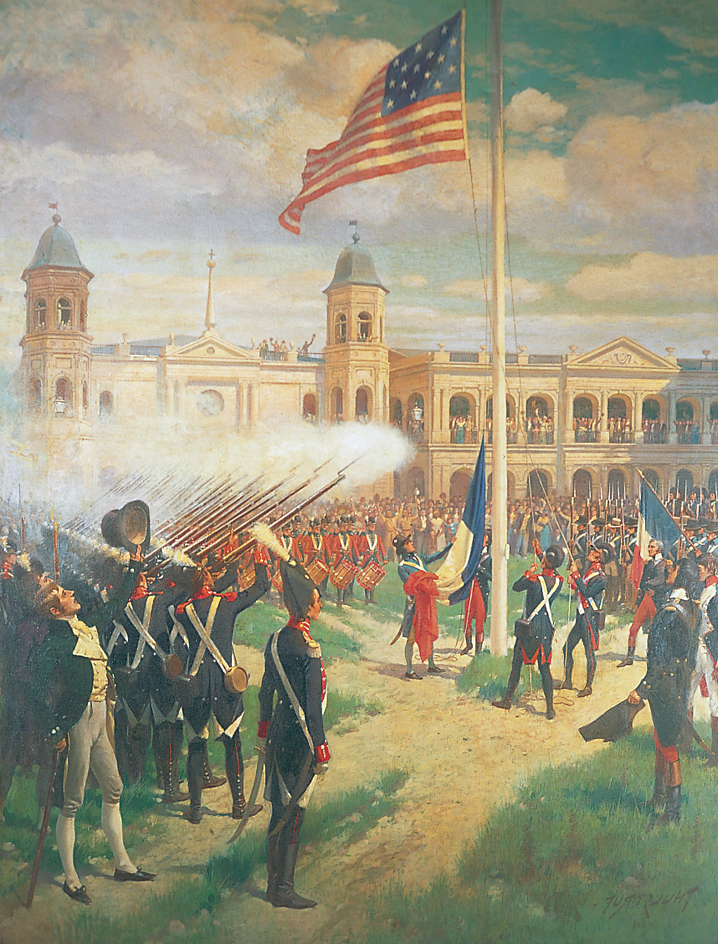
The Louisiana Purchase added 827,987 square miles (2,144,476 square kilometers) of territory to the United States. The first states to be carved out of the Louisiana Purchase were Louisiana (1812), Missouri (1821), and Arkansas (1836). All three were slave states.
The power of the federal government
increased during Jefferson’s presidency as a result of rulings by the Supreme Court. John Marshall had become chief justice of the United States in 1801. Under Marshall, the court became a leading force in American society. In 1803, in the case of Marbury v. Madison, the Supreme Court asserted its right to rule on the constitutionality of federal laws (see Marbury v. Madison). From then to Marshall’s death in 1835, the court reviewed about 50 cases that involved constitutional issues.
Marshall’s court expanded the power of the federal government. For example, in the case of McCulloch v. Maryland (1819), it ruled that Congress has implied powers in addition to the powers specified in the Constitution. The Supreme Court also said that federal authority prevails over state authority when the two come into conflict (see McCulloch v. Maryland).
Jefferson’s foreign policy.
In 1803, Britain, by then known as the United Kingdom, went to war again with France. Both nations began seizing U.S. merchant ships. The British also captured American seamen and forced them into the British Navy. Jefferson again expanded the government’s powers, this time to protect U.S. shipping. At his request, Congress passed laws designed to end British and French interference. The Embargo Act of 1807 made it illegal for American goods to be exported to foreign countries. The embargo threatened to ruin the nation’s economy, and the law was repealed in 1809. The Non-Intercourse Act of 1809 prohibited Americans from trading with the United Kingdom or France. But the warring nations still interfered with U.S. trade.
The War of 1812.
James Madison succeeded Jefferson as president in 1809. France soon promised to end its interference with U.S. shipping, but the United Kingdom did not. Also, in the Ohio River Valley, the Shawnee chief Tecumseh helped unite Native American tribes to try to stop westward expansion by white settlers. Americans believed the British were supplying the Native Americans. For these reasons, many Americans demanded war against the United Kingdom. They were led by members of Congress from the West and South called War Hawks. The War Hawks included Henry Clay of Kentucky and John C. Calhoun of South Carolina. Other Americans, especially New Englanders, opposed the War Hawks’ demand. But on June 18, 1812, at Madison’s request, Congress declared war on the United Kingdom, and the War of 1812 began.
The two sides struggled to gain an advantage in the war. The United Kingdom was busy fighting the French in Europe, and the United States was poorly prepared for war. American forces killed Tecumseh in a battle in Canada in 1813 and won a naval victory on Lake Erie near Detroit, but the Americans also suffered major setbacks. On Aug. 24, 1814, the British captured Washington, D.C., and burned the White House and other government buildings. Eventually, American troops drove back the British. 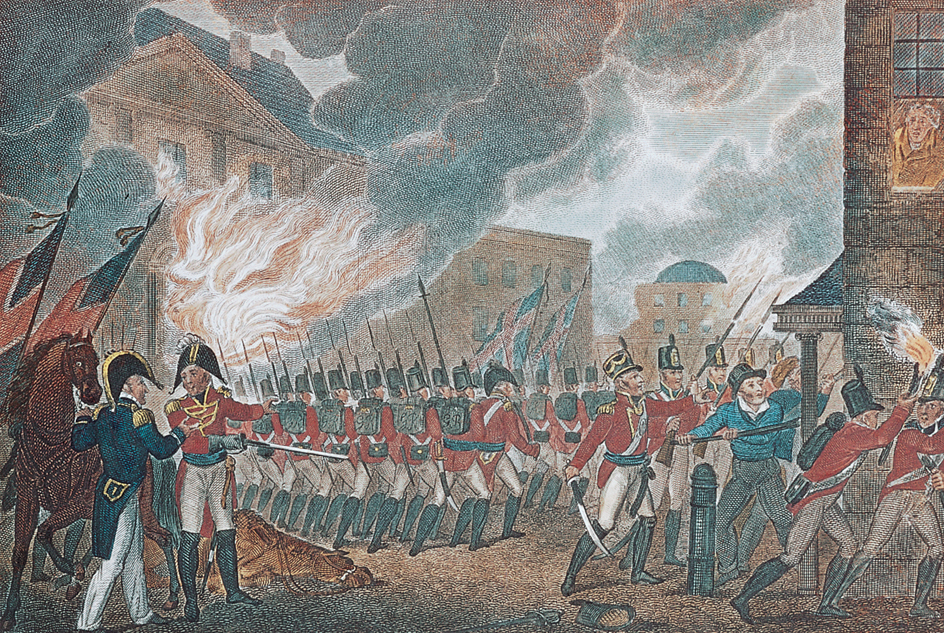
Neither side won the War of 1812. The Treaty of Ghent, signed in 1814 and ratified (approved) in 1815, ended the war. See War of 1812.
Decline of the Federalists.
In 1814 and early 1815, New England Federalist leaders who opposed the War of 1812 held a meeting called the Hartford Convention. They were angry about the war and Southern domination of the federal government. They demanded seven amendments to the Constitution, including one removing the three-fifths clause and another making it harder for Congress to declare war. Opponents charged that they threatened the secession (withdrawal) of the New England States from the Union. The Federalists never recovered from this charge or their opposition to the War of 1812. Democratic-Republicans called them disloyal, and the Federalist Party broke up as a national organization after 1816. The breakup left no party to oppose the Democratic-Republicans. The Democratic-Republican candidate for president in 1820, James Monroe of Virginia, ran unopposed. See Hartford Convention.
The Era of Good Feeling.
A spirit of nationalism swept through the nation following the War of 1812. The war increased feelings of self-confidence. The defeat of Tecumseh made it easier for settlers to move west. Peace in Europe led to expanded trade and allowed Americans to concentrate on their own affairs. The nation acquired new territory, and new states entered the Union. The economy prospered. Historians sometimes call the period from 1815 to the early 1820’s the Era of Good Feeling because of its relative peace, unity, and optimism about the future.
The American System.
After the War of 1812, Henry Clay and other nationalists said the government should actively foster the economy’s growth. They proposed a set of measures called the American System. They said the government should raise tariffs to protect American manufacturers from foreign competition so that industries would grow and employ more people. The government should spend the tariff revenues on transportation projects and other internal improvements to help farmers ship their crops to market and knit the country together. A national bank should regulate the nation’s currency and take care of the government’s finances.
Congress soon put the American System into practice. In 1816, it enacted a high tariff and chartered the second Bank of the United States. The federal government also increased its funding of internal improvement projects, the most important of which was the National Road. Begun in 1811, the road stretched from Maryland to Illinois when completed. It became an important route for the shipment of goods and the movement of settlers westward. 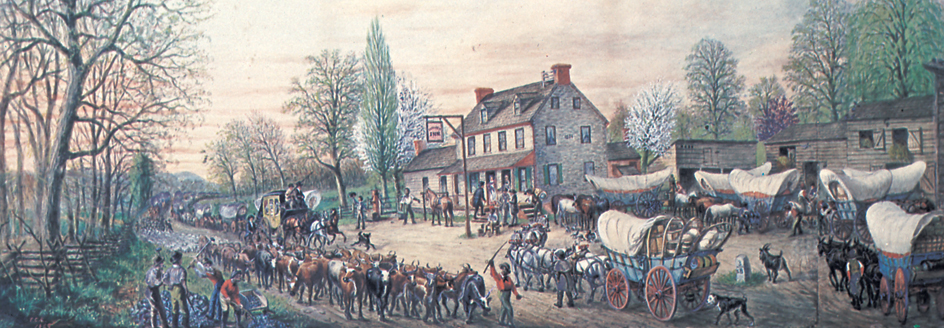
Other transportation improvements included the development of the steamboat. In 1807, the American inventor Robert Fulton demonstrated the first commercially successful steamboat, the Clermont. The steamboat soon became the fastest way to ship goods and carry passengers by river. 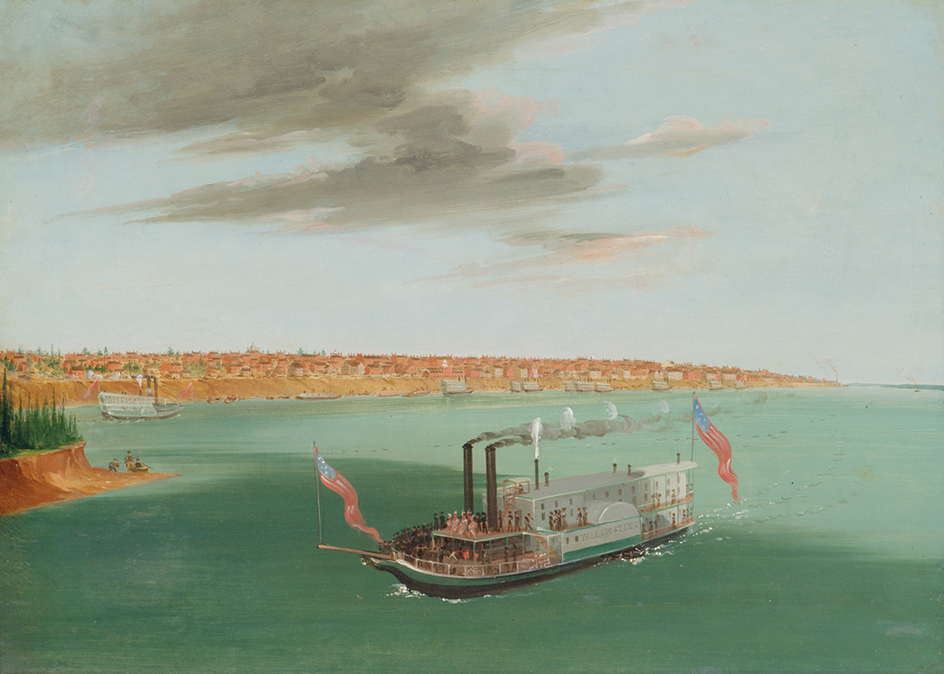
The state governments as well as the federal government financed transportation improvements. The states built many canals to connect natural waterways. The Erie Canal, the most important, was built by New York state. Completed in 1825, it connected Albany, on the Hudson River, to Buffalo, on Lake Erie. It led to the growth of farms and towns across New York. By establishing a water route from New York City to the Great Lakes, the Erie Canal made it profitable for settlers to start farms in the Midwest. Canal boats carried manufactured goods from east to west and farm produce from west to east. See Erie Canal.
A national culture.
Americans had patterned their culture largely after European civilization. Architects, painters, and writers tended to imitate European models. In the early 1800’s, however, the writer Ralph Waldo Emerson and other thinkers called for an art and culture based on uniquely American experiences. Architects began to design simple houses that blended into their surroundings. Craftworkers built sturdy furniture that was suited to frontier life, yet elegantly simple. The nation’s literature also flourished when it began to reflect American experiences. The writings of Washington Irving, a leading early author, helped gain respect for American literature.
Cotton and slavery.
In the 1700’s, the main crops in the South were tobacco and rice. In the 1800’s, however, cotton became the region’s leading crop. In 1793, the American inventor Eli Whitney devised the cotton gin, a machine that separated cotton fiber from the seeds as fast as 50 people could by hand. This machine helped cause a boom in cotton production across the South (see Cotton gin). Cotton planters, who used enslaved African Americans to work their fields, poured into the new states of Louisiana, Alabama, and Mississippi. In 1819, the United States acquired Florida in a treaty with Spain, and cotton growers also went there. New Orleans, Louisiana, prospered as the nation’s leading slave market. Slaveholders farther east in Virginia, Maryland, and other states sold hundreds of thousands of enslaved people into what was soon known as the Cotton Kingdom. Slave traders and owners often separated African American families by selling children, parents, and other relatives away from each other. 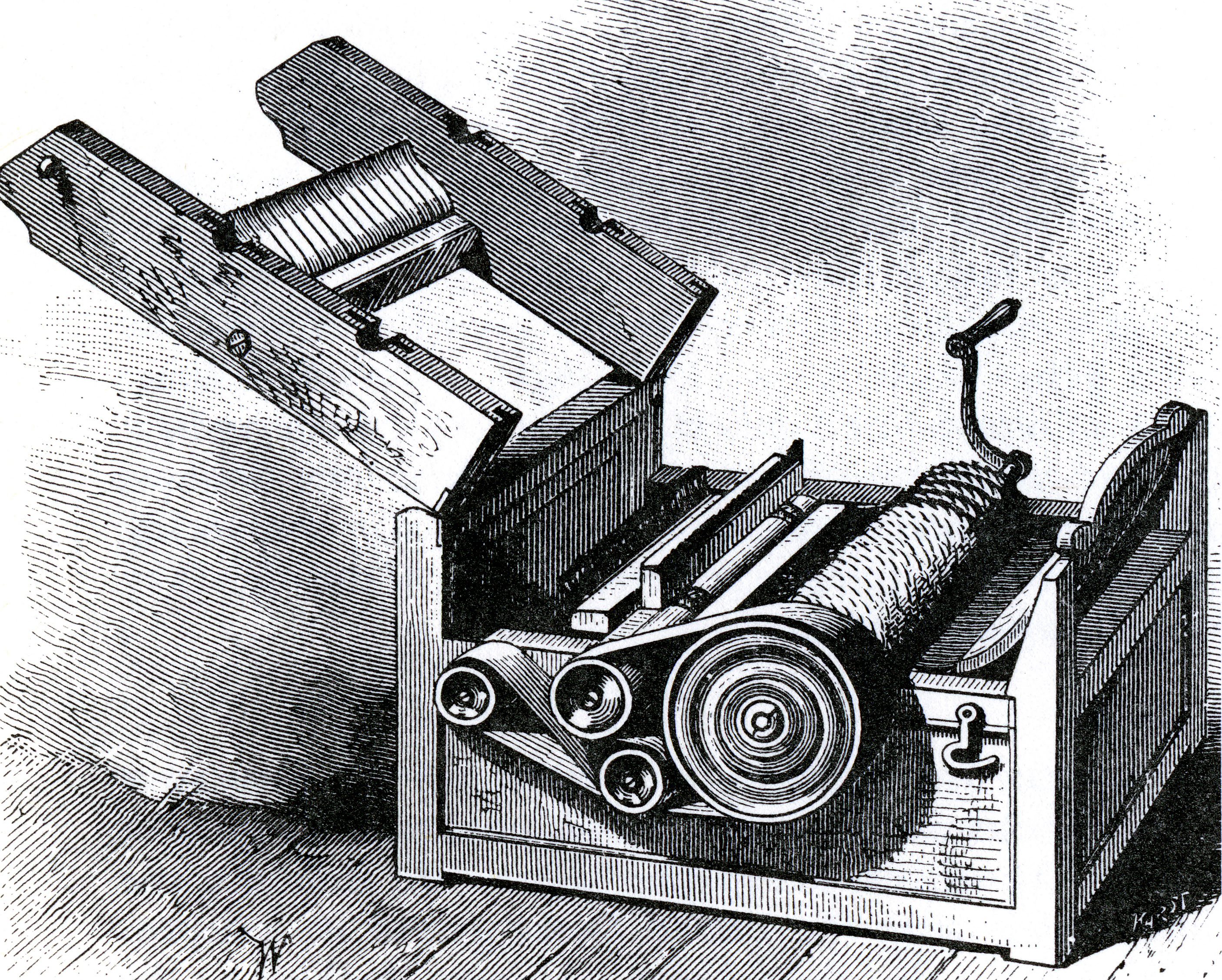
The Missouri crisis.
The Era of Good Feeling did not mean an end to all the country’s political disputes. The westward expansion of slavery caused a bitter fight between Northerners and Southerners in Congress from 1819 to 1821. By 1819, every Northern state had outlawed slavery. But the plantation system had spread throughout the South, and the economy of the Southern States depended on the labor of enslaved people. The question of whether to encourage or limit the westward expansion of slavery became a hotly disputed political issue. Through the years, the United States had kept a balance between the number of free states, where slavery was prohibited, and slave states, where it was allowed. This balance meant that both sides had the same number of members in the U.S. Senate. By 1819, there were 11 free states and 11 slave states.
When the Territory of Missouri applied for admission to the Union as a slave state, most Northern members of Congress insisted that it enter as a free state instead. Either way, the balance in the Senate between free and slave states would be upset. After almost two years of angry debates, Congress worked out the Missouri Compromise, which temporarily maintained the balance. Massachusetts agreed to give up the northern part of its territory. This area became the state of Maine, and entered the Union as a free state in 1820. In 1821, Missouri entered as a slave state, and so there were 12 free and 12 slave states.
The Missouri Compromise also had another important provision. It provided that slavery would be “forever prohibited” in all territory gained from the Louisiana Purchase that was north of Missouri’s southern border, except for Missouri itself. See Missouri Compromise.
Expansion (1820-1849)
From the 1820’s to the 1850’s, the United States grew greatly in land, population, and wealth. Thousands of settlers moved westward into new states and territories. Immigration from Europe brought hundreds of thousands of newcomers. British, Irish, German, and Scandinavian immigrants settled in Eastern cities and across the West. In the 1850’s, Chinese immigrants also began to arrive on the West Coast. The federal government made more land available to white settlers through the policy of removal, in which the U.S. Army forced Native Americans to leave their lands in both Eastern and Western states. In the South, the cotton industry grew so rapidly that cotton accounted for half the value of all U.S. exports. Meanwhile, in the Northeast, the nation’s first large factories appeared. Some of the factory workers were women and children, and many were immigrants.
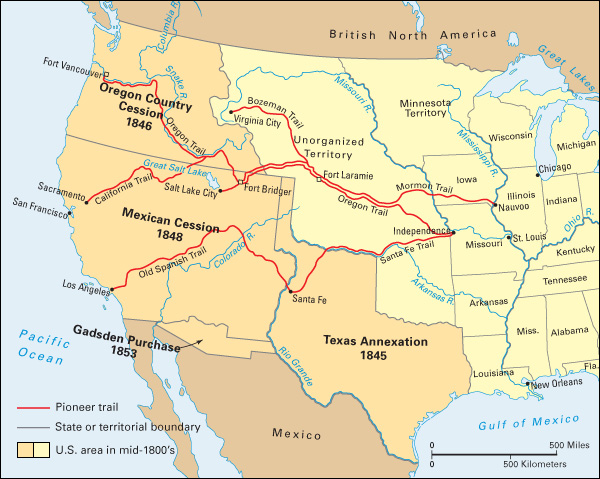
The United States moves west.
By 1820, Americans had established settlements as far west as the Mississippi River. By the 1830’s, they had pushed the frontier across the river, into Iowa, Missouri, Arkansas, and eastern Texas. The land beyond, called the Great Plains, was dry and treeless, and it seemed to be poor farmland. But explorers, traders, and others who had journeyed farther west told of rich land and forests beyond the Rocky Mountains. In the 1840’s, large numbers of settlers made the long journey across the Great Plains to the Far West.
The Western settlers included Easterners from both the North and South. Many other settlers came from Europe. Some people went west in search of religious freedom. The best known of these were the Mormons, who settled in Utah in 1847. Enslaved African Americans often went west against their will.
Most of the settlers became farmers who owned their own plots. But urban life also moved westward with the frontier. Bustling towns and cities grew up in the West. There, traders in farm equipment and other supplies carried on a brisk business. The towns had banks, churches, hotels, and stores. The townspeople included craftworkers, doctors, lawyers, government officials, schoolteachers, and members of the clergy.
Westward expansion of the United States gave rise to changes in American politics. It revived conflict over slavery because Congress had to decide whether to allow slavery into new states and territories. Western settlers joined up with Easterners who wanted the government to improve the country’s transportation system with new roads, canals, and railroads. For more details, see Westward movement in America. 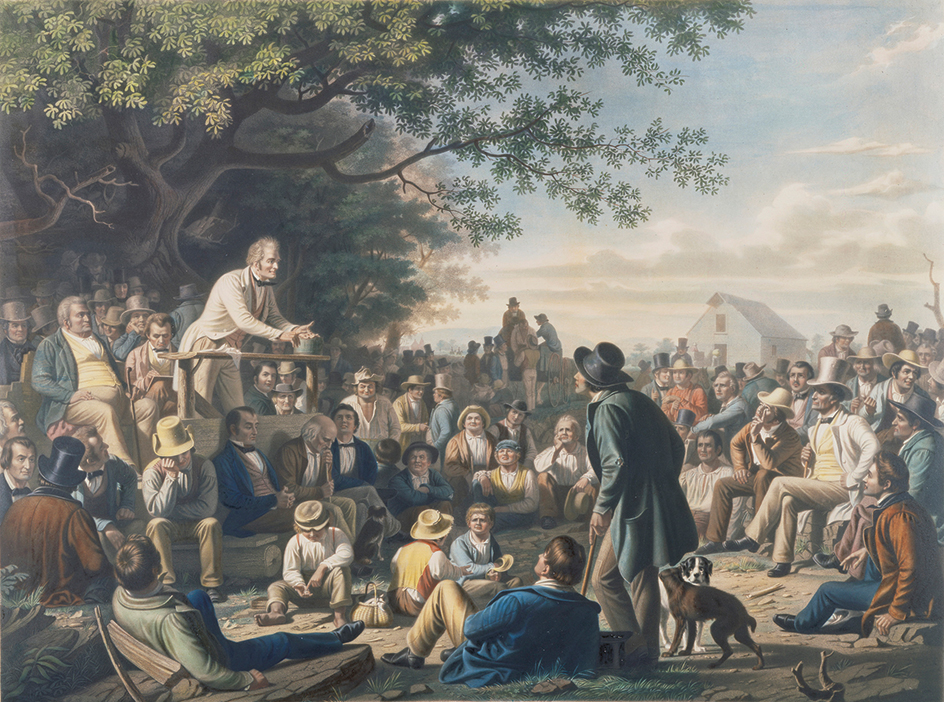
The Monroe Doctrine.
The United States maintained peaceful relations with Europe during the era of expansion. But as Mexico and the nations of Central and South America won independence from Spain in the 1820’s, Americans worried that Europeans might interfere. In 1823, President Monroe issued the Monroe Doctrine, a statement warning European countries not to interfere with the nations in the Western Hemisphere (see Monroe Doctrine).
Manifest destiny.
Some settlers moved beyond the western boundary of United States territory. They flocked to Texas, California, and other lands belonging to Mexico. Americans also settled in the Oregon Country, a large territory between California and Alaska claimed by both the United Kingdom and the United States. By then, many Americans had come to believe that westward expansion was the manifest destiny of the United States—that is, the clear future of the nation. According to the belief of manifest destiny, the United States had the right to take all of North America. For many, manifest destiny justified the idea that white Americans were superior to Native Americans and Mexicans. Stirred by this belief, Americans demanded control of the Oregon Country and much of Mexico.
The conflicting claim with the United Kingdom over Oregon was settled fairly easily. The British decided the effort needed to hold on to all of Oregon was not worthwhile. In 1846, they turned over to the United States the part of Oregon south of the 49th parallel, except Vancouver Island. See Oregon Territory.
The struggle over Mexican territory was more complicated. It began in Texas in 1835, when American settlers, who had been invited to settle there by the Mexican government, revolted against Mexican rule. In 1836, these settlers proclaimed Texas an independent republic. Nine years later, the United States annexed Texas and made it a state, despite Mexico’s opposition.
The Mexican War.
The United States gained additional Mexican territory in the Mexican War. In 1846, President James K. Polk sent General Zachary Taylor to occupy land near the Rio Grande that both the United States and Mexico claimed. Fighting broke out between Taylor’s troops and Mexican soldiers. On May 13, 1846, at Polk’s request, Congress declared war on Mexico. The United States quickly defeated its neighbor. The Treaty of Guadalupe Hidalgo, signed on Feb. 2, 1848, officially ended the war. The treaty gave the United States a vast stretch of land from Texas west to the Pacific and north to Oregon. The nation then extended from coast to coast. See Mexican War. 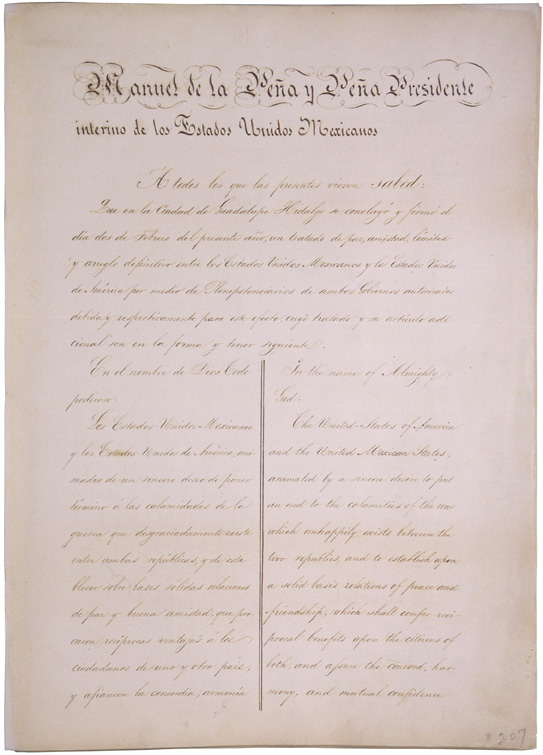
In 1853, in the Gadsden Purchase, the United States bought from Mexico the strip of land on the southern edge of Arizona and New Mexico. Although many Native Americans disagreed, the United States now claimed to own all the territory of its present states except Alaska (purchased from Russia in 1867) and Hawaii (annexed in 1898). See Gadsden Purchase.
Economic growth.
Expansion into the rich interior of the continent enabled the United States to become the world’s leading agricultural nation. Southern cotton was in great demand as a raw material for textile mills in Europe and the northeastern United States. Planters, enslaved workers, and family farmers in the South as far west as Texas raised cotton to supply the mills. Many planters in Kentucky and Tennessee prospered by growing tobacco and hemp, used for making rope. Midwesterners and Westerners produced large crops of corn and wheat, and also raised livestock. New machines boosted the output of U.S. farms. Eli Whitney’s cotton gin had already transformed Southern agriculture. The reaper, patented by the American inventor Cyrus McCormick in 1834, allowed Northern farmers to harvest grain much quicker than before.
The discovery of minerals in the West also boosted the economy. The most famous mineral strike took place in 1848, when gold was discovered at Sutter’s Mill in California. See Forty-Niners; Gold rush. 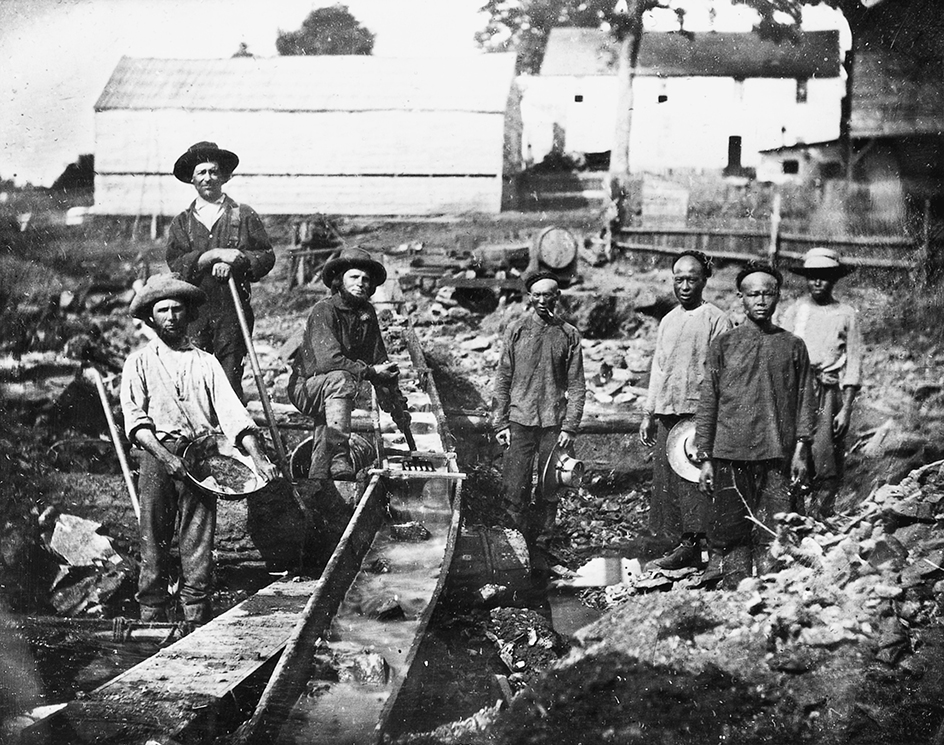
The period also marked the beginning of large-scale manufacturing in the United States. Previously, most manufacturing was done by craftworkers at home or in small shops. But in the early 1800’s, businesses began to erect factories with machinery that enabled them to produce goods more rapidly and cheaply.
Advances in transportation and communications
contributed to the economic growth of the United States. New or improved roads, such as the National Road in the East and the Oregon and Santa Fe trails in the West, eased the difficulty of traveling and shipping goods by land. The increased use of steamboats and the construction of canals improved water transportation. The steam-powered railroad soon rivaled steamboats and canal boats. By 1850, about 9,000 miles (14,500 kilometers) of railroad lines were in operation. 
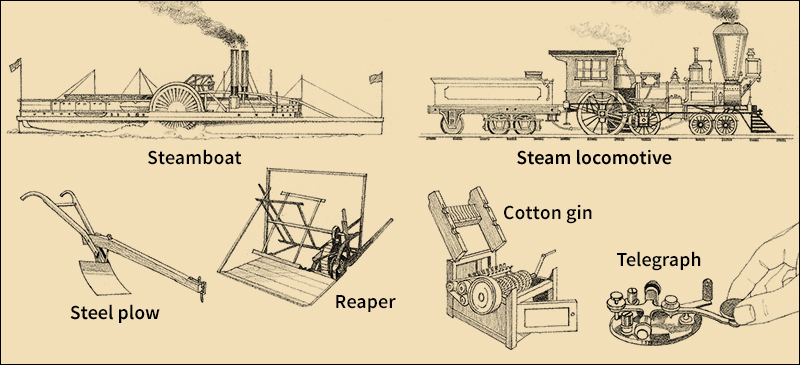
In 1837, the American inventor Samuel F. B. Morse demonstrated the first successful telegraph in the United States. The telegraph gave businesses the fastest means of communication yet known.
The election of 1824
destroyed the one-party rule of the Era of Good Feeling. Four Democratic-Republicans sought to succeed James Monroe as president. Andrew Jackson received the most electoral votes, and John Quincy Adams came in second. But nobody won a majority, and the House of Representatives had to select the new president. The House chose Adams. Embittered, Jackson and his followers formed a separate wing of the Democratic-Republican Party, which soon developed into the Democratic Party.
The rise of Andrew Jackson.
Historians often call the 1830’s and 1840’s the Age of Jackson, after Andrew Jackson of Tennessee, the most influential political leader of the era. Jackson, a rich slaveholder and a general in the War of 1812, was famous for success in battles against Native Americans and the British. He created a new kind of politics in which appeals to the “common man” drew enthusiastic mass support. By the 1820’s, most white men had gained the right to vote, as states abolished requirements that voters own land. Yet most states barred African American men and all women from voting. Even so, high turnouts at elections—up to 80 percent of the men who were eligible to vote—made U.S. politics more democratic than ever before.
Jackson ran for president for a second time in 1828. He appealed for support from Western farmers and Eastern city laborers and craftworkers. His reputation as a war hero and “Indian fighter” made him popular. He promised to end what he called a “monopoly” of government by the rich and to protect the interests of the “common man.” Jackson was elected by wide margins in 1828 and again in 1832.
Jackson as president.
When Jackson became president, he fired many federal officials and gave their jobs to his supporters. He called this policy “rotation in office” and said it was democratic because it allowed more men to hold federal positions. His opponents called it the “spoils system” and said it was corrupt because it distributed federal jobs to reward men for their party loyalty instead of their qualifications.
One of Jackson’s main crusades as president involved the second Bank of the United States. The bank held the government’s deposits and regulated the nation’s money supply by controlling how much currency was issued. Jackson thought that the bank favored the wealthy and that it was unfair for one bank to have a monopoly on holding the government’s money. In 1832, Congress voted to recharter the bank, but Jackson vetoed the bill. He soon withdrew the government’s money from the bank, and the bank later collapsed.
Another great issue of Jackson’s administration involved tariffs and nullification (action by a state to cancel a federal law). In 1828, Congress passed a bill that placed high tariffs on goods imported to the United States. The South believed the bill favored Northern manufacturing interests and denounced it as a “tariff of abominations.” Speaking for South Carolina, John C. Calhoun (then the vice president) claimed that any state could nullify (declare invalid) a federal law it deemed unconstitutional. In 1832, Congress lowered tariffs somewhat, but not enough to please South Carolina. South Carolina declared the tariff act “null and void” and threatened to secede from the Union if federal officials tried to collect tariffs in the state. This action created a constitutional crisis. Jackson believed in states’ rights, but he also thought the Union must be preserved. In 1833, he persuaded Congress to pass a force bill, a law that allowed him to use the armed forces to collect tariffs. But Congress lowered tariffs to a point acceptable to South Carolina, and the nullification crisis faded away.
Politics after Jackson.
Jackson’s influence on politics continued after he left office. As undisputed leader of the Democrats, Jackson chose Martin Van Buren to be the party’s candidate in the 1836 presidential election. Jackson’s opponents had formed the Whig Party four years earlier. In an effort to attract Jackson followers, most Whigs supported William Henry Harrison against Van Buren. Harrison, like Jackson, had won fame as an Indian fighter. But American voters, loyal to Jackson, elected Van Buren.
A depression called the Panic of 1837 crippled the U.S. economy shortly after Van Buren took office. The presidential election of 1840 again matched Van Buren and Harrison. In their campaign, the Whigs blamed Van Buren’s economic policies for the depression. They also promoted Harrison as a war hero and associated him with hard cider, the log cabin, and other symbols of the frontier. This time, Harrison won the election.
Immigration.
The United States had always been made up mainly of immigrants. But from 1845 through 1860, more than 100,000 immigrants arrived in the country every year. Most came to find opportunities in the growing U.S. economy. A majority settled in the North because slavery reduced the opportunities available to free workers in the South. The immigrants made major contributions to the economic growth of the United States. They came from many countries, but the largest numbers were from Ireland and Germany. 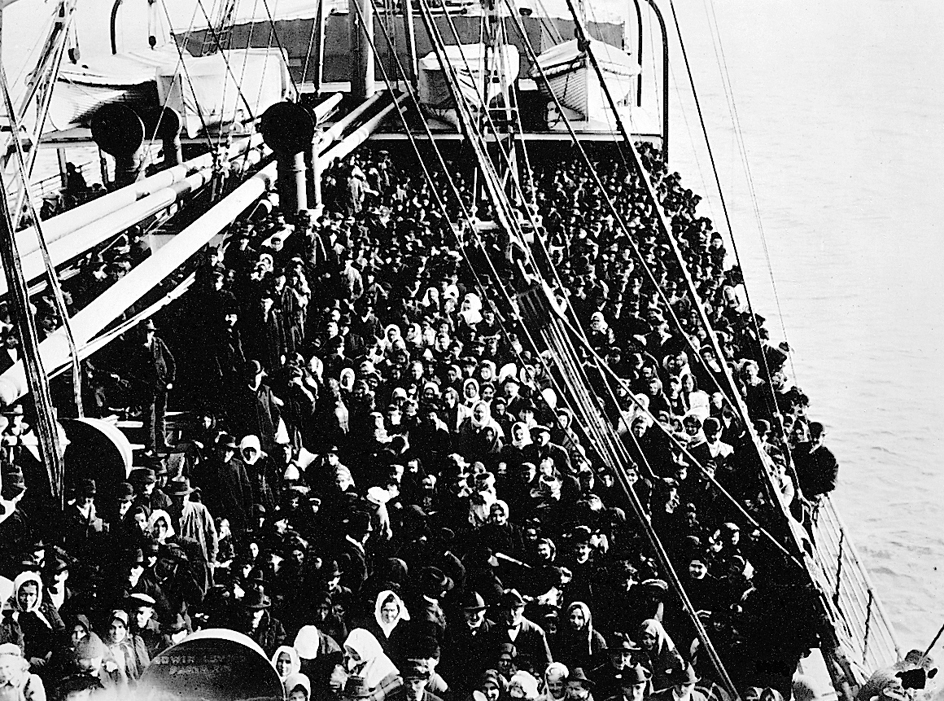
Irish men and women had been coming to the United States since the 1600’s, many as indentured servants. In the mid-1840’s, a famine in Ireland caused mass starvation. Huge numbers of Irish used meager savings to leave Ireland on ships bound for North America. Some Irish landlords paid for their tenants’ passage on these vessels. Relatives already in America sent others ticket money. Having paid fares enabled Irish famine refugees to cross the ocean without selling themselves into servitude.
Irish immigrants often settled in such Eastern cities as Boston and New York City, though some also moved to the West. They worked on the canals and railroads, on the docks, in the new factories, and as domestic servants. The Irish faced great discrimination in the United States, in part because they were poor and Catholic.
German immigrants had been coming to America in large numbers since the early 1700’s. In the 1840’s and 1850’s, many came because it was easier to buy farms in the growing West than in Europe. Some Germans settled in Eastern cities, but many built farms in the Midwest or moved to such cities as St. Louis, Chicago, and Milwaukee. Most big American cities had robust German communities in the 1800’s, with German-language newspapers, athletic clubs, and other institutions. Some had heavily German industries, such as breweries.
Removal of Native Americans.
As settlers moved westward, they took over huge tracts of land that belonged to Native Americans. Fighting often broke out between the settlers and Indigenous people, and the U.S. government sent soldiers to battle the Native Americans. U.S. soldiers also fought two bloody wars in Florida against the Seminole. The United States won most of these so-called Indian wars (see Indian wars).
The Cherokee, Creek, Choctaw, and Chickasaw still held onto their lands in the Southeast. At the urging of President Jackson, Congress passed the Removal Act of 1830. The idea of removal was that Indigenous groups in the East would trade their lands for other lands in the West. The United States would guarantee that Native American people could keep the new lands “forever.”
The Native Americans of the Southeast developed several strategies to prevent white people from taking their lands. In what is now Georgia, for example, the Cherokee nation established a strong tribal government that included a written constitution. The Cherokee constitution forbade individual Cherokees to sell land to Americans. These actions enraged white people in Georgia, who wanted this land. The Georgia legislature declared Native American laws void and began distributing the Cherokee land to white people. The Cherokee appealed these actions to the Supreme Court of the United States. In the 1831 case of Cherokee Nation v. Georgia, the court refused to strike down Georgia’s laws. A year later, however, in Worcester v. Georgia, the Supreme Court decided that Cherokee law, rather than Georgia law, applied on Cherokee land. President Jackson supported Georgia and refused to enforce the court’s decision.
In 1835, some Cherokee signed a treaty agreeing to removal, though most of the Cherokee people and their leader, John Ross, objected. In 1838, the U.S. Army rounded up the Cherokee and forced them to march to Oklahoma. Thousands of Cherokee died on what became known as the Trail of Tears. The government also relocated the Creek, Choctaw, and Chickasaw, whose lands were mainly in Alabama and Mississippi, as well as some Native Americans from Ohio and other Northern areas. 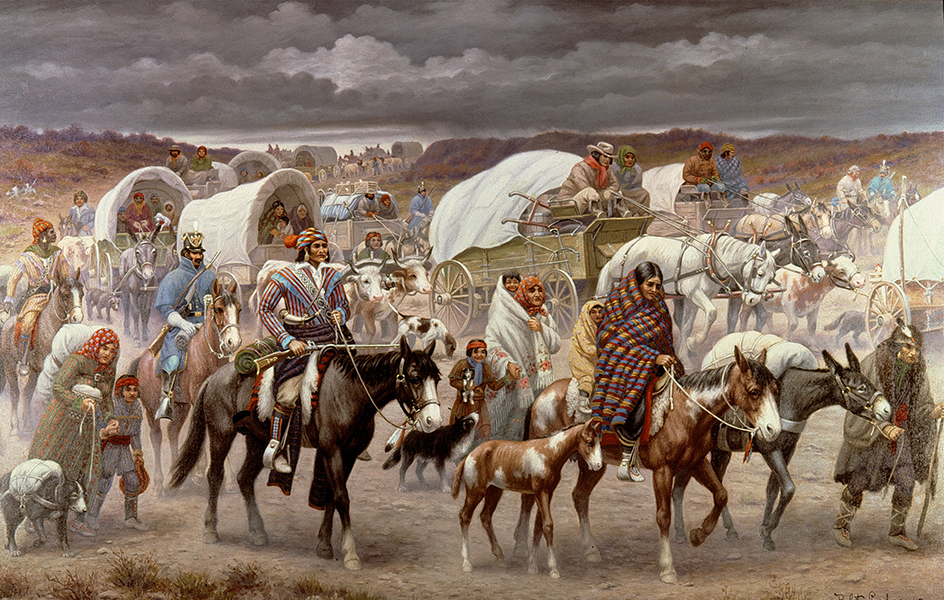
Cultural changes.
After 1820, the wilderness seemed less and less hostile to the people of the United States. Increasingly, writers and artists glorified the frontier and nature. The public eagerly read the novels of James Fenimore Cooper, which described Native Americans and pioneers as pure of heart and noble in deeds. Ralph Waldo Emerson and other American philosophers praised nature as a source of truth and beauty for all.
Developments in printing spread art and information to more people than ever before. A new printing process called lithography enabled artists to produce many copies of their works cheaply. The popular lithographs of Nathaniel Currier and James Merritt Ives depicted everyday American scenes, often in a sentimental style. Faster printing presses and cheaper paper reduced the cost of newspapers. After 1835, many newspaper publishers lowered the cost of their papers to one cent, a price even poor people could afford.
The spoken word remained an important means of mass communication. Large numbers of people attended gatherings where political candidates and famous lawyers, writers, and members of the clergy made speeches. Improved transportation, especially by rail, made it easier for speakers to travel across the country.
City people flocked to theaters to see plays and other forms of entertainment. P. T. Barnum, the most famous showman of the time, fascinated the public by exhibiting performers with dwarfism, “fat ladies,” and other unusual attractions. Blackface minstrel shows were especially popular. In these shows, white performers blackened their faces to impersonate Black people. The shows reinforced scornful images of Black Americans that lasted long after the shows had disappeared. The American songwriter Stephen Foster wrote some of his most famous songs for minstrel shows. See Barnum, P. T.; Minstrel show.
Social reform.
A wave of Protestant religious revivalism had swept the United States in the 1820’s and 1830’s. Church membership shot up. Churches and other reform groups set up charities to aid the poor. Many people joined social reform movements to improve society. People concerned about the extent of alcohol use urged temperance—that is, the reduction or elimination of the use of alcoholic beverages. In the mid-1800’s, prohibitionists pressed states to outlaw the sale of liquor. Women’s participation in activities outside the home became more socially acceptable, especially in the North. An American teacher named Dorothea Dix and other reformers campaigned to improve the dismal conditions in the nation’s prisons and “insane asylums,” as mental hospitals were called. Workers joined labor unions to pressure employers to raise wages, to improve working conditions, and to reduce the workday to 10 hours from the usual 12 to 14 hours. Reformers also worked for better education, women’s rights, and the abolition of slavery. 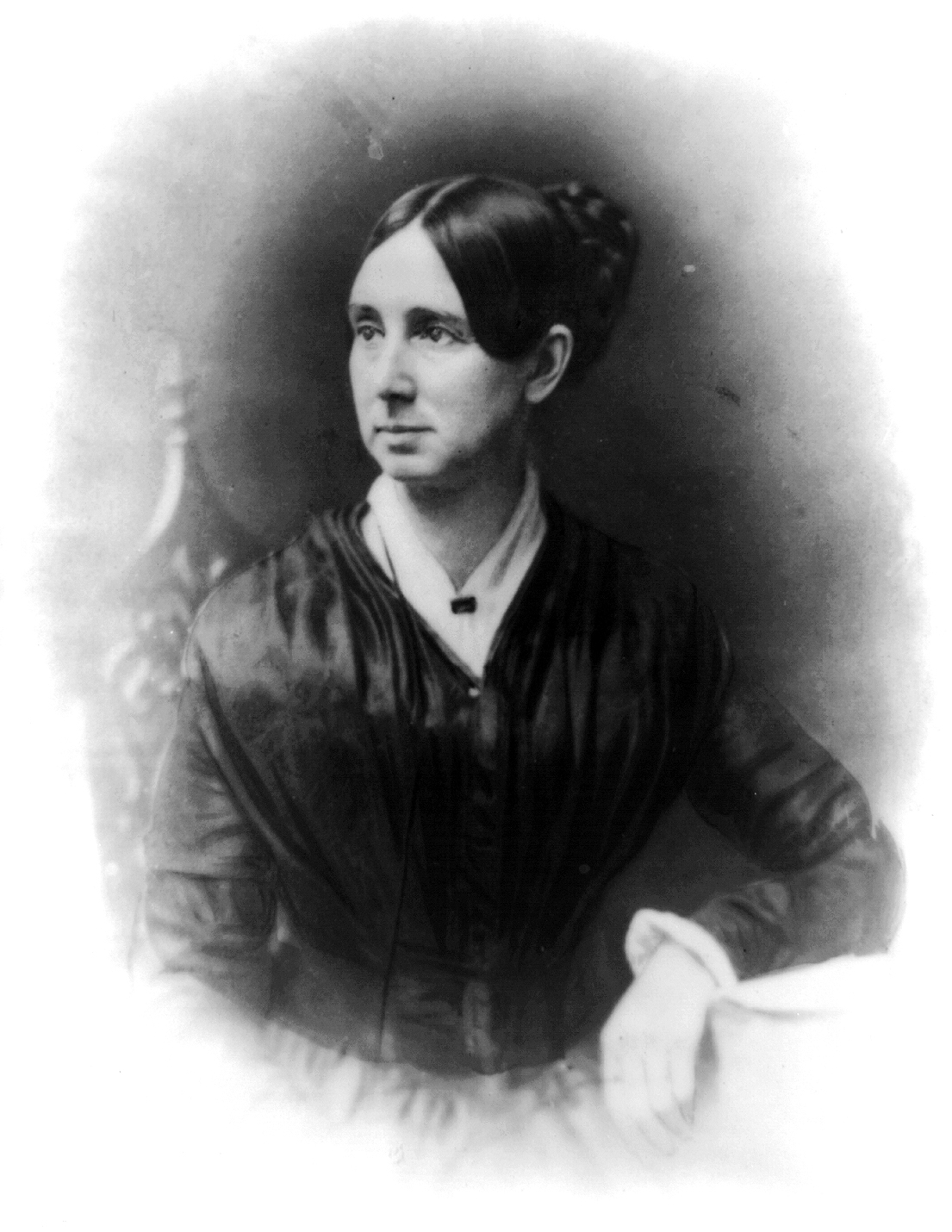
Better education.
In the early 1800’s, most good schools in the United States were expensive private schools. Poor children went to second-rate “pauper,” or “charity,” schools, or did not go at all. African American children were not allowed to attend most schools in the North, and in the South it was a crime to teach enslaved people to read. Prudence Crandall, a Connecticut educator, set up a school for African American girls, but she was forced to close it. Enslaved Black people sometimes found white people who taught them to read and write. Others managed to teach themselves. But racial discrimination in education persisted.
Poor white people made more progress than Black people did in gaining opportunities for education. During the 1830’s, Horace Mann of Massachusetts and other reformers began demanding better education and public schools open to both the rich and poor. States started establishing public school systems, more children enrolled, and students attended longer. Colleges began training teachers for a more standardized system of public education. As a result, schoolchildren throughout the country received much the same lessons. For example, many studied the McGuffey Readers to learn to read. These books taught patriotism and morality as well as reading.
Women’s rights.
In the 1800’s, American women had few rights. There were almost no colleges for women, and most professional careers were closed to them. A married woman could not own property. Instead, any property she had belonged to her husband. Women could not vote in most elections. Many Americans believed in the idea of “separate spheres.” This idea held that women’s sphere was the home and men’s area of activity was the larger world outside the home.
As women participated in the reform movements of the period, they began to realize that they could work to improve their own situations. A women’s rights movement developed after 1820. In 1833, the Oberlin Collegiate Institute (now Oberlin College) opened as the first coeducational college in the United States. In 1848, New York passed a law allowing women to keep control of their property after marriage. Also in 1848, two reformers named Lucretia Mott and Elizabeth Cady Stanton organized a Women’s Rights Convention that met in Seneca Falls, New York. The convention issued the first formal appeal for woman suffrage (the right to vote).
The abolition movement
was the most intense and controversial reform activity of the period. Since colonial times, some Americans, called abolitionists, had demanded an end to the institution of slavery. By the early 1800’s, the Northern States had begun to outlaw the practice. But the plantation system had spread across the South. White Southerners depended on slavery, got rich from it, and had no intention of allowing anyone to abolish it.
The westward expansion of slavery had already caused bitter political conflicts. In the 1820’s and 1830’s, abolitionists began to demand an end to slavery in the South. In 1821, Benjamin Lundy, a Quaker editor, called for gradual abolition in a journal called The Genius of Universal Emancipation. William Lloyd Garrison, a fiery Boston journalist, went much further. Garrison demanded the immediate and unconditional abolition of slavery throughout the United States. He founded The Liberator, a leading abolitionist journal, in 1831. Some African Americans who had gained their freedom became important speakers for the abolition movement. They included Frederick Douglass and Sojourner Truth. See Abolition movement. 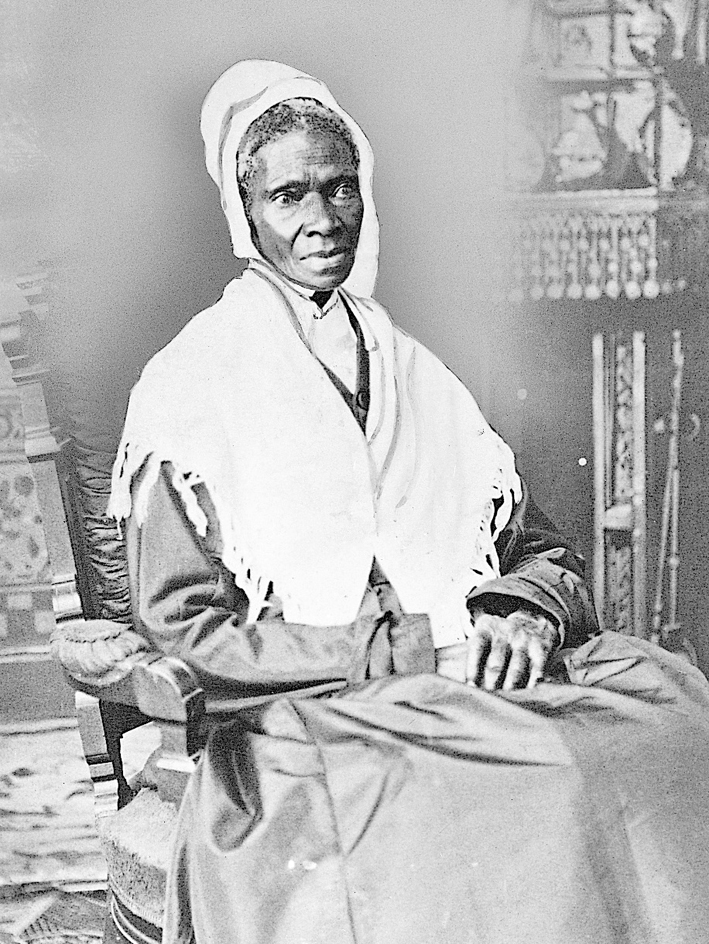
Also in 1831, Nat Turner led the largest slave rebellion of the period. Turner was an enslaved man and a preacher in Southampton County, Virginia. He and his followers killed 60 white people before the Virginia militia arrived. The militia captured and hanged 20 rebels, including Turner. Then, local white citizens killed about 100 Black people who likely had not taken part in the rebellion (see Turner, Nat). The radical abolitionists in the North and rebellious enslaved people in the South terrified Southern white people. Southern legislatures passed laws to tighten white control over African Americans. Some even made it a crime to criticize slavery.
The growing strength of the abolition movement made Southerners fear that the federal government would outlaw slavery. Southerners had always argued that slavery was necessary to the plantation economy. Now, they stressed the unsupported belief that Black people were inferior to white people, and therefore fit only to be slaves. Even many white Southerners who were not enslavers took comfort in the belief that they were superior to Black people. White Southerners also knew that many Northerners, even those who disapproved of slavery, shared their beliefs about Black people.
The nation divided (1850-1869)
The long dispute between the North and South over the expansion of slavery came to a head after the Mexican War ended in 1848. The vast new area the United States acquired in the West in the 1840’s created a problem Americans could not avoid. It was obvious that the new land would be split up into territories, and then into states. Southerners argued against any restraints on slavery in the new territories and states. Northerners wanted the federal government to ban slavery in the newly acquired lands. Some politicians tried to compromise by proposing the rule of popular sovereignty. Under this rule, the people of the territories and states would decide for themselves whether to allow slavery.
Members of Congress represented various views about slavery. Calhoun, then a senator from South Carolina, expressed the views of Americans who believed in the right to own enslaved people. Senator William H. Seward of New York spoke for people with antislavery beliefs. He said the government could not expand slavery because moral law, a higher law than the Constitution, favored freedom. Senator Clay of Kentucky represented Americans who held views between those of Calhoun and Seward. Clay urged the North and South to compromise because the alternative was the end of the Union.
California applied for admission as a free state in 1849. The application triggered a huge debate because it would upset the balance of free and slave states. Southerners recognized that the faster growth of the Northern population meant that Northerners would control the House of Representatives. Southerners insisted on maintaining their power in the Senate by blocking the admission of new free states. They threatened a civil war if Congress admitted California without slavery. 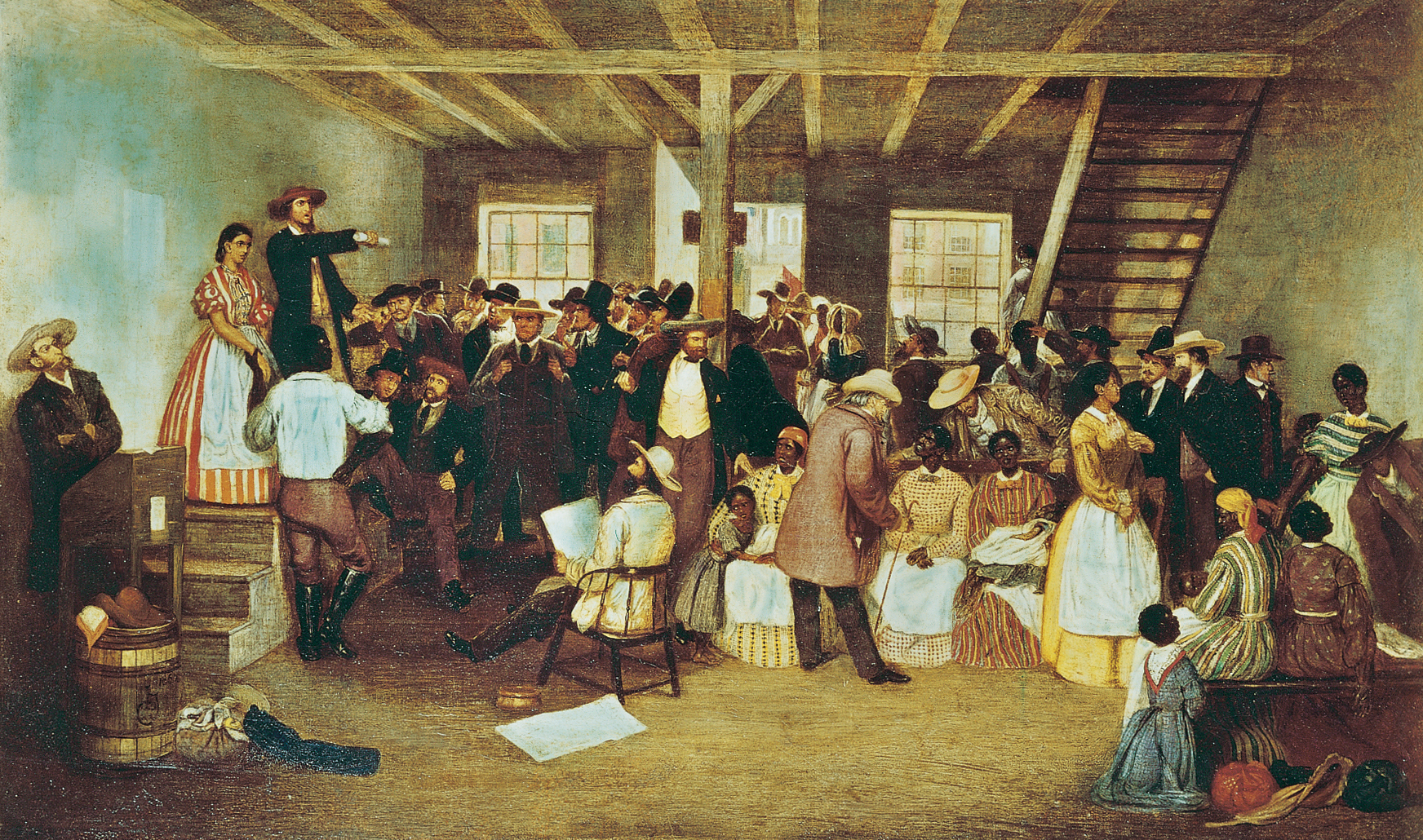
The Compromise of 1850.
Clay and others brought about a compromise to admit California. They won approval of the Compromise of 1850, a series of laws that made concessions to both the North and South. Measures designed to satisfy the North included the admission of California as a free state and the abolition of the slave trade, but not slavery itself, in Washington, D.C. As part of the compromise, Congress created the territories of New Mexico and Utah under the rule of popular sovereignty. This meant that when these territories became states, their voters would decide whether or not to allow slavery.
To satisfy the South, Congress enacted the Fugitive Slave Act to stop Northerners from helping enslaved people who escaped into Northern states. It required federal marshals to capture suspected fugitives and return them to the South. The Fugitive Slave Act enraged Northerners, as they watched the federal government enforce slavery everywhere in the country. The American author Harriet Beecher Stowe wrote the novel Uncle Tom’s Cabin (1851-1852) in protest against the Fugitive Slave Act. This powerful work about the horrors of slavery soon became one of the most widely read books in the United States. See Compromise of 1850; Uncle Tom’s Cabin.
The Kansas-Nebraska Act.
The Compromise of 1850 did not solve the problem of the expansion of slavery into the West. In the early 1850’s, Congress began considering the creation of new territories in the area roughly between Missouri and present-day Idaho. Again, there was bitter debate over whether the new territories should ban or allow slavery. Those who called for a ban cited the Missouri Compromise to back their position. The land under consideration was part of the area where the Compromise had “forever prohibited” slavery. But in 1854, Congress passed the Kansas-Nebraska Act, a law that allowed slavery to spread into this area. The act created two territories west of Missouri—Kansas and Nebraska. It applied the rule of popular sovereignty by providing that the settlers in each territory would decide whether or not to allow slavery.
The Kansas-Nebraska Act was a political disaster. Violence broke out between Northern and Southern settlers in the Kansas territory. Across the country, antislavery Northerners denounced the politicians who had supported the Kansas-Nebraska Act. Others strongly defended the act. Everywhere, attitudes toward the slavery issue hardened, and the capacity for further compromise diminished. The United States was on the road to war. See Kansas-Nebraska Act.
Party splits.
Angered by the Kansas-Nebraska Act, antislavery Northerners formed the Republican Party in 1854. Many Democrats and Whigs who opposed slavery left their parties and became Republicans. Other Americans, disturbed by the turmoil, sought simple answers to the country’s problems. They joined the Know-Nothing (or American) Party, which blamed the problems on immigrants and Roman Catholics. The stability of the two main political parties before the early 1850’s had helped keep the country together. Thus, the splits in political parties deprived the country of an important unifying force.
By the mid-1850’s, the Supreme Court seemed the only institution to command nationwide respect. But in 1857, the court ruled in the Dred Scott Decision that African Americans could not be citizens of the United States and that laws limiting the spread of slavery were unconstitutional. The court then lost much of its influence. More important, many Northerners came to believe that the government was controlled by a “slave power conspiracy” to expand slavery across the country, including into the North. See Dred Scott Decision.
The “irrepressible conflict.”
The dispute over slavery turned out to be an “irrepressible conflict,” as Senator Seward termed it. During the 1850’s, the North and South drew further and further apart over the issue. After 1854, more and more Southerners saw themselves as a separate group. In the North, abolitionists stepped up their campaign against slavery, and their message was more popular than before. Even Northerners who thought Black people were inferior to white people resented the recent proslavery actions of the federal government. They thought Southern slaveowners were violating the political rights of Northern white citizens as well as the human rights of Black Americans. In Kansas, fighting broke out in 1856 between proslavery and antislavery settlers. Newspapers were filled with accounts of violence in “Bleeding Kansas.” See Kansas (“Bleeding Kansas”).
On Oct. 17, 1859, the abolitionist John Brown and a small band of followers seized the federal arsenal at Harpers Ferry, Virginia (now West Virginia). Brown intended the action as the first step in a general slave uprising. But federal troops easily captured him, and, after a trial, he was hanged. Brown’s plan had almost no chance of success. The odds against him were so great that many people believe he was insane. Even so, many Northerners thought of him as a martyr, while many Southerners believed his attack was part of an organized movement to end slavery. 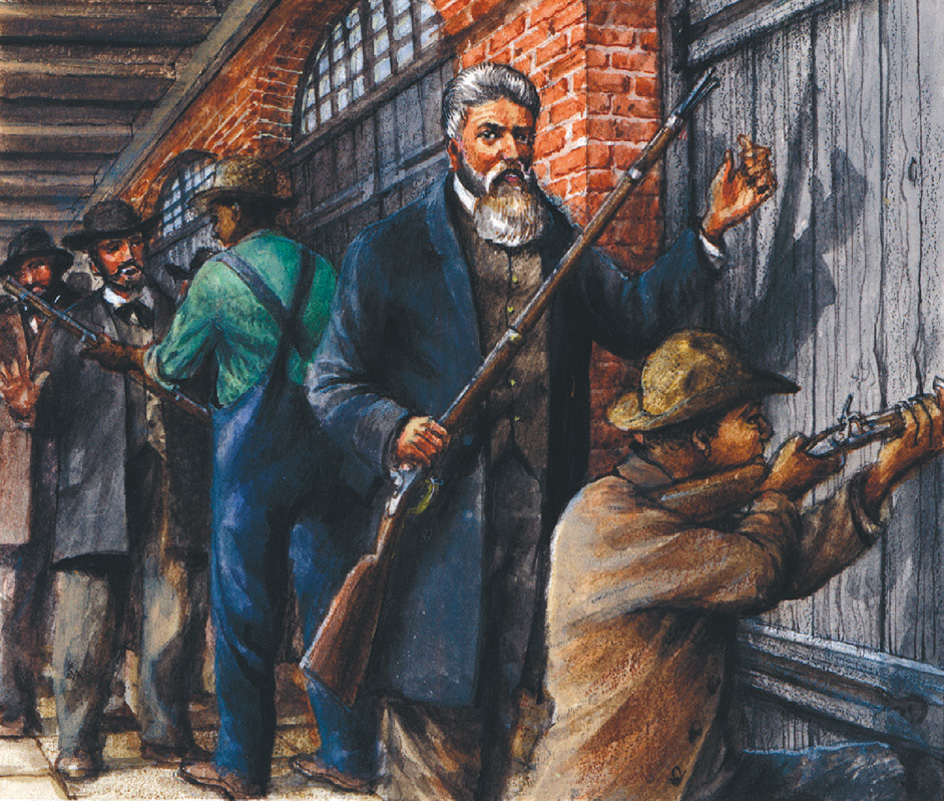
The election of 1860
reflected the nation’s deep division. On paper, there were four candidates for president. But in reality, there were two separate elections. In the South, voters chose between two candidates who were defenders of “Southern rights,” John Breckenridge and John Bell. In the North, voters chose between Republican Abraham Lincoln and Democrat Stephen Douglas. On Nov. 6, 1860, Lincoln won the election. He got a majority of the electoral vote even though he received no votes from Southern states. Loading the player...
Abraham Lincoln
Secession.
Lincoln, a lawyer from Illinois, had earned a reputation as an opponent of slavery. His election was unacceptable to the South. Southerners feared the new president would restrict or even end slavery. Alarmed by this prospect, South Carolina seceded from the Union on Dec. 20, 1860, well before Lincoln took office. Alabama, Florida, Georgia, Louisiana, and Mississippi seceded in January 1861. The six seceded states formed the Confederate States of America in February. Later in 1861, Arkansas, North Carolina, Tennessee, Texas, and Virginia seceded and joined the Confederacy. 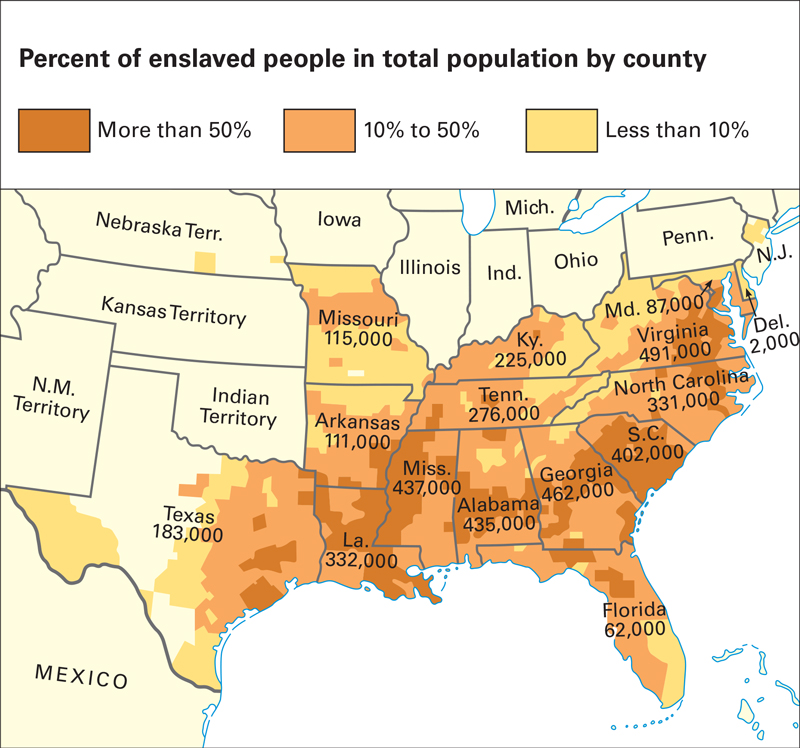
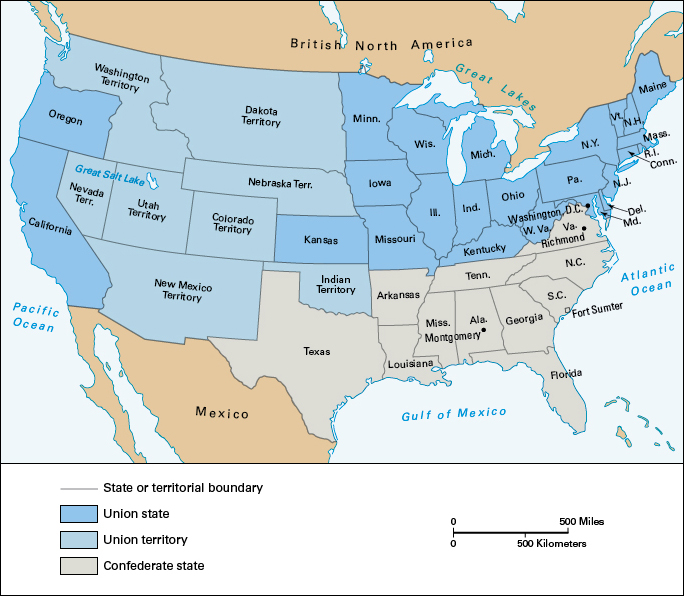
Lincoln took office on March 4, 1861. The new president insisted above all else on the preservation of the Union. He thought the seceded states were still part of the United States and hoped that reconciliation was possible. But a little more than a month later, the North and South went to war.
The American Civil War
began on April 12, 1861, when Southern troops fired on Fort Sumter, a military post in Charleston Harbor. Both sides quickly prepared for battle after the Fort Sumter clash. The North had superior financial and industrial strength, and a larger population than the South. But the South fought strongly for its independence. The South gained the upper hand at first, but the North gradually turned the tide. Finally, Confederate resistance wore down, and Union Armies swept through the South. On April 9, 1865, General Robert E. Lee, the commander of the Confederate Army, surrendered to the Union commander Ulysses S. Grant at Appomattox Court House in Virginia. The last Confederate troops surrendered on May 26.
The four years of bloody fighting between the North and South had devastating effects on the nation. About 360,000 Union troops and 260,000 Confederate troops, all Americans, died in the conflict. No other war in history has taken so many American lives. Property damage was enormous, especially in the South. Southern cities, towns, plantations, and railroads lay in ruin. The war also caused deep, long-lasting feelings of bitterness and division between the victorious North and the defeated South. The Civil War was tragic in many ways, but it had two important outcomes. It led to the abolition of slavery in the United States, and it preserved the Union. For a detailed account of the war, see Civil War, American. 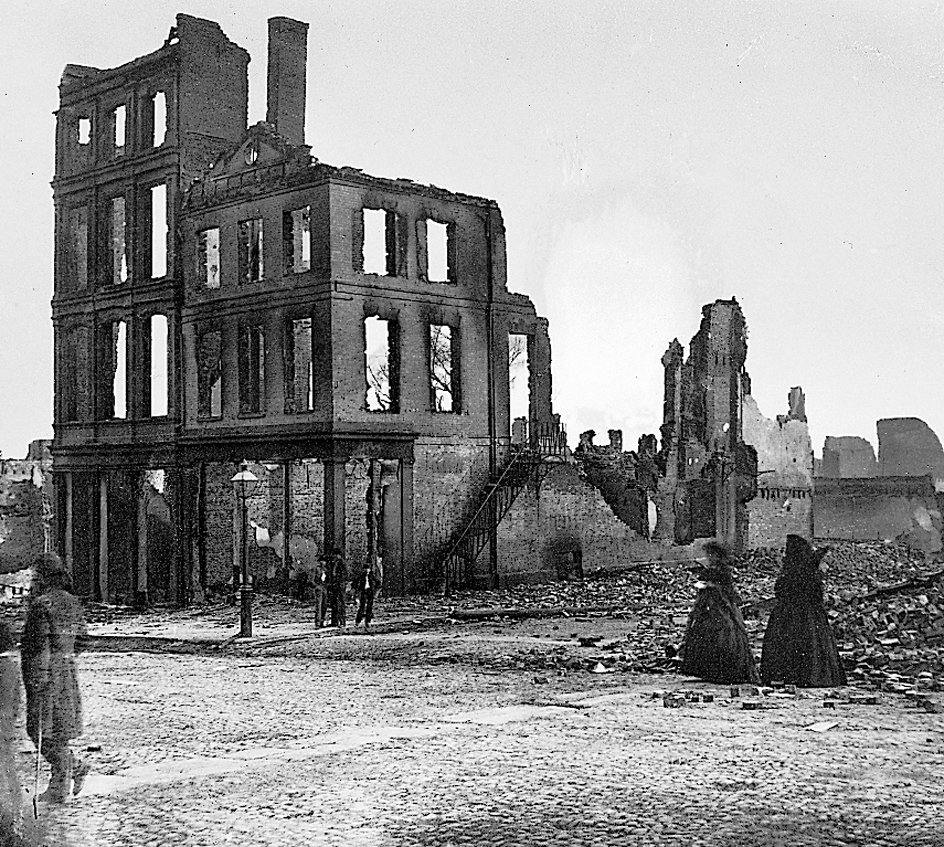
Abolition of slavery.
At the start of the Civil War, Lincoln’s main goal was to save the Union. But enslaved African Americans in the South believed that the war was really about their freedom. Everywhere Union soldiers went in the South, enslaved Black laborers serving for the Confederates deserted to Union lines. Thousands of enslaved men escaped from plantations and tried to join the Union Army. Some Union generals in the field declared the enslaved people to be free, but Lincoln overturned their decisions. Lincoln worried that freeing enslaved African Americans would be unpopular and weaken support for the war in the North. But, as the battlefield casualties mounted and more Black Southerners escaped from slavery, Lincoln realized that he had to act. He decided the huge human cost of the war could be justified only if the United States fought for freedom as well as for Union.
On Jan. 1, 1863, Lincoln issued the Emancipation Proclamation. The proclamation said that enslaved people in all areas of the Confederacy that were still in rebellion were “then, thenceforward, and forever free.” It also invited African American men to join the Union Army. About 180,000 African Americans fought as Union soldiers. Finally, in 1865, the 13th Amendment to the Constitution abolished slavery throughout the United States. See Emancipation Proclamation. 
Reconstruction.
Toward the end of the Civil War, the North set out to establish terms under which Confederate states would be readmitted to the Union. The process through which the South returned, as well as the period following the war, was called Reconstruction.
Northerners divided into two groups over Reconstruction policy. One group, called the moderates, thought the most important task of Reconstruction was to end the bitterness between the North and South. The other group, called the radicals, thought the crucial task was to make emancipation a reality by protecting the rights of African Americans in the South.
Lincoln might have worked out a compromise. But an actor named John Wilkes Booth shot him on April 14, 1865. Lincoln died the next day, less than a week after Lee’s surrender. Vice President Andrew Johnson became president. Johnson vetoed congressional bills that would protect the rights of Black Southerners. He also pardoned wealthy white Southern rebels and urged their return to power. These actions infuriated the moderates in Congress, who joined the radicals to override Johnson’s vetoes. Congress took charge of Reconstruction. Johnson tried to undermine the laws Congress passed. In 1868, the House of Representatives impeached him, but the Senate fell short of removing him from office. For details, see Johnson, Andrew. 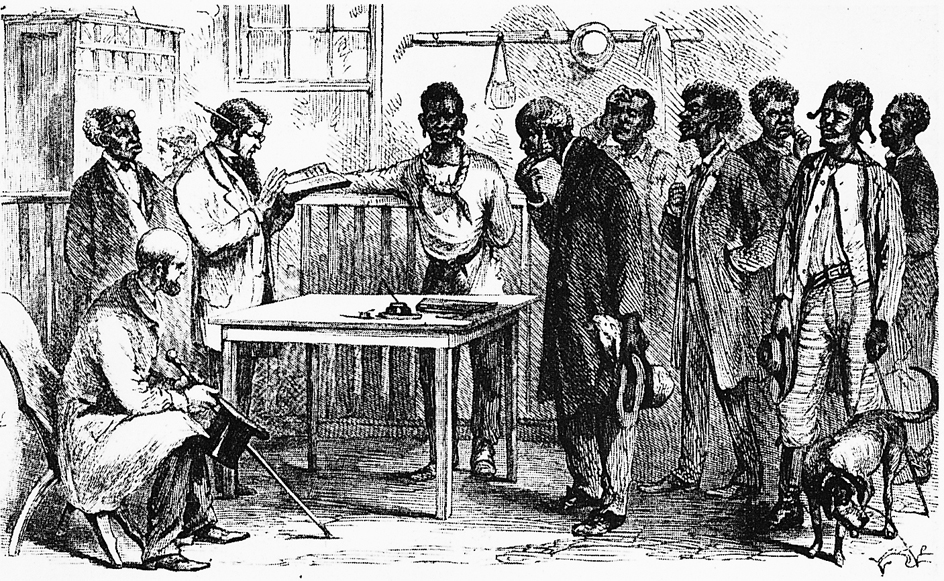
The Reconstruction program drafted by Congress included laws to help Black Southerners make the transition from slavery to freedom. An agency called the Freedman’s Bureau distributed food, helped set up schools, and supervised labor contracts between Black workers and white landowners. The 14th Amendment to the Constitution (1868) established the citizenship rights of African Americans. The 15th Amendment (1870) said that the right to vote could not be denied on account of race, color, or previous condition of servitude. 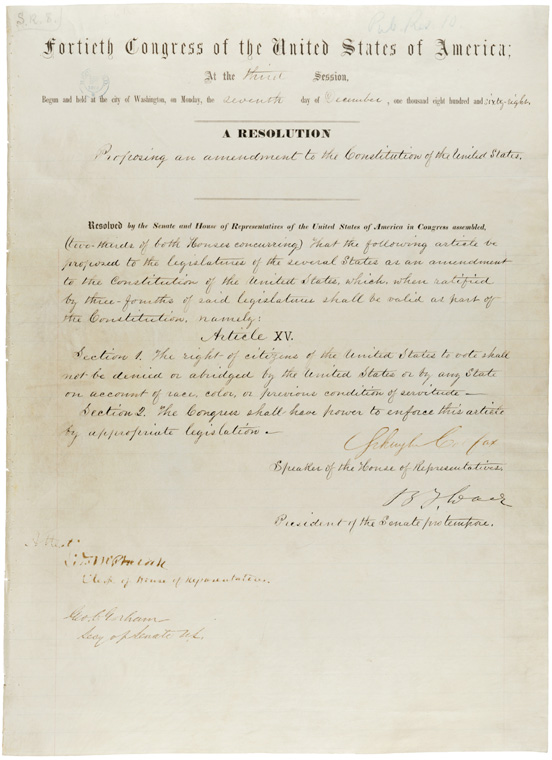
Congress stationed troops in the South. Black and white Republicans, protected by the troops, took control of Southern state and local governments. Hundreds of African Americans won election to office, where they passed laws to expand school systems and protect civil rights. White Southerners loyal to their old traditions bitterly resented the new political system. Many of them joined the Ku Klux Klan, a secret society that used violence to keep Black citizens from voting and trying to achieve equality. Klan terrorism helped drive Black Americans out of Southern political life, thus bringing white Southerners back to power. See Ku Klux Klan.
Congress insisted that the Confederate states ratify the 13th, 14th, and 15th amendments to the Constitution before being readmitted to the Union. Between 1866 and 1870, the Confederate states returned. But Reconstruction did not end formally until 1877, when the last federal troops left the South.
Reconstruction was a period of great hope for African Americans. They made progress toward equality and a better life. But the old social order, based on white supremacy, returned to the South. African Americans lost many of the rights they had gained. They were no longer enslaved, but persecution and terrorism forced them to live in fear and poverty. The fundamental problem of racial inequality remained to haunt future generations of Americans. See Reconstruction.
Industrialization and reform (1870-1916)
After the Civil War, U.S. industry changed dramatically. Machines replaced hand labor as the main means of manufacturing, tremendously increasing the production capacity of industry. A new nationwide network of railroads distributed goods far and wide. Inventors developed new products the public wanted, and businesses made them in large quantities. Investors and bankers supplied the huge sums of money that industrial leaders needed to expand their operations. Many big businesses grew up. They included coal mining, petroleum, and railroad companies; and manufacturers and sellers of such products as steel, automobiles, and clothing.
The industrial growth had major effects on American life. The new business activity centered in cities, and so people moved to urban areas in record numbers. Many Americans amassed huge fortunes from the business boom, but others lived in poverty. The sharp contrast between rich and poor stirred widespread discontent. The discontent led to new reform movements, which, among other things, led to measures to aid the poor and control the size and power of big business. 
The value of goods produced by U.S. industry increased almost tenfold between 1870 and 1916. Rich and varied natural resources aided the business boom. Forests provided lumber for construction and wood products. Miners took large quantities of coal and iron ore from the ground. Andrew Carnegie and other business leaders made steel from these minerals. Steel played a vital role in the industrialization process, going into machines, railroad tracks, bridges, automobiles, and skyscrapers. Other valuable minerals included copper, silver, and petroleum. Petroleum, the source of gasoline, became especially important after cars came into widespread use in the early 1900’s.
Improved production methods.
The use of machines in manufacturing spread throughout U.S. industry after the Civil War. With machines, workers could produce goods many times faster than they could by hand. The new large manufacturing firms hired hundreds, even thousands, of workers. Each worker was assigned a specific job in the production process. This system of organizing laborers, called the division of labor, sped up production. The increased production speed enabled businesses to charge lower prices for products. Lower prices, in turn, meant more people could afford the products, and so sales soared.
New products.
Inventors created, and business leaders produced and sold, a variety of innovative products. In 1876, the Scottish-born inventor Alexander Graham Bell patented the telephone. Bell’s invention, along with the telegraph, provided the quick communication that was vital to the smooth operation of big business. Other new products included the typewriter (1867), barbed wire (1874), the phonograph (1877), the electric light (1879), and the gasoline automobile (1885). Of these, the automobile had the greatest impact on the nation’s economy. In the early 1900’s, the automotive pioneers Ransom Eli Olds and Henry Ford began turning out cars by mass production. Auto prices dropped, and sales soared. The number of automobiles owned by Americans jumped from 8,000 in 1900 to almost 3,500,000 in 1916. Loading the player...
Henry Ford makes an affordable automobile
A growing population.
More than 25 million immigrants entered the United States between 1870 and 1916. Immigration plus natural growth caused the U.S. population to more than double during that period, rising from about 40 million to about 100 million. Population growth increased the number of consumers, and thus enlarged the market for products. It also provided the additional workers needed for the jobs created by the business boom. 
Railroads.
In the late 1800’s, the U.S. railroad system became a nationwide transportation network. The distance of all rail lines in operation in the United States soared from about 9,000 miles (14,500 kilometers) in 1850 to almost 200,000 miles (320,000 kilometers) in 1900. A high point in rail development came in 1869, when workers laid tracks that joined the Central Pacific and Union Pacific railroads near Ogden, Utah. This event marked the completion of the world’s first transcontinental railroad system. Rails linked the United States from coast to coast. 
The new railroads spurred economic growth. Mining companies used them to ship raw materials to factories. Manufacturers distributed their finished products by rail to points throughout the country. The railroads became highly profitable for their owners, including Cornelius Vanderbilt and Jay Gould.
Improved sales methods
also aided economic growth. Owners of big businesses sent salespeople to all parts of the country to promote their products, and company sales staffs began marketing brand-named goods. Enterprising merchants opened huge department stores in the growing cities. They included Marshall Field of Chicago, R. H. Macy of New York, and John Wanamaker of Philadelphia. The stores offered a wide variety of products at reasonable prices. Department stores also introduced set prices for goods, marking the price on the item instead of expecting customers to bargain over every sale.
Other merchants, including Montgomery Ward and Richard Sears, began mail-order companies, chiefly to serve people who lived far from stores. The companies published catalogs from which customers could order goods by mail.
Investment and banking.
The business boom triggered a sharp increase in investments in the stocks and bonds of corporations. As businesses prospered, people eager to share in the profits invested heavily. Their investments provided capital that companies needed to expand their operations.
New banks sprang up throughout the country. Banks helped finance the nation’s economic growth by making loans to businesses. J. P. Morgan and other bankers of the era assumed key positions in the economy because of their ability to provide huge sums of capital. 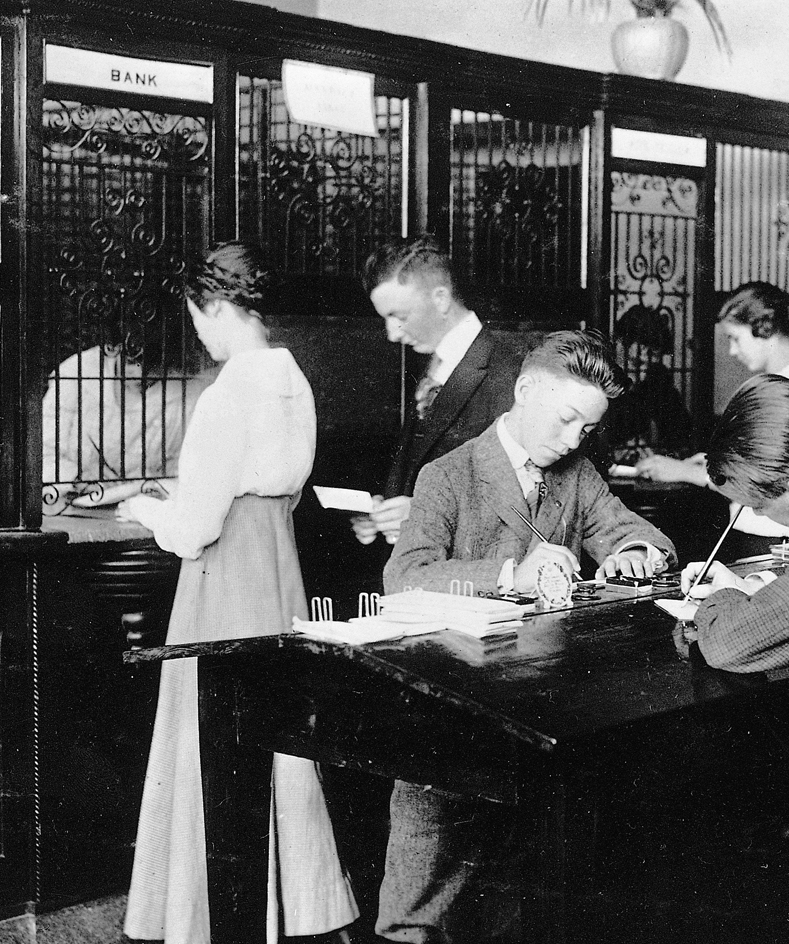
The rise of “trusts.”
The government did little to regulate business during the 1800’s. Unrestricted, business leaders tried to wipe out competition and gain control of their industries by forming various kinds of combinations. In many industries, companies consolidated so that a few large firms dominated the industry. Many of these large firms gained monopolies—that is, nearly exclusive control over a product or service. Some business leaders formed trusts. A trust was a combination in which a group of managers controlled rival businesses without formal ownership of the businesses. Other business leaders formed holding companies, corporations that bought out and operated several businesses as a single firm. In the 1890’s and early 1900’s, Americans often used the term “trust” to refer to all these kinds of large business combinations (see Monopoly and competition; Antitrust laws).
The trusts had some favorable effects on the economy. They helped make possible giant, efficient corporations that contributed greatly to economic growth. They also enabled businesses to avoid sharp fluctuations in price and output, and thus keep sales steady. On the other hand, monopolies gave some companies so much power that they could take unfair advantage of others. A company with little or no competition could demand materials from suppliers at low cost, while charging high prices for the finished product. The company could also save money by reducing a product’s quality.
The rich and the poor.
After the Civil War, most industry developed in the cities of the North. The industrial boom had major effects on the lives of the American people. The availability of jobs in industries drew people from farms to cities in record numbers. In 1870, only about 25 percent of the American people lived in urban areas (defined as communities with populations over 2,500 people). By 1916, the figure had reached almost 50 percent. 
The lives of people in the cities contrasted sharply. A small percentage of them had wealth and enjoyed lives of luxury. Below them economically, a large middle class lived comfortably. At the bottom of the economic ladder, a huge mass of city people suffered in poverty.
The business boom opened up many opportunities. Many people established successful businesses, expanded existing ones, and profited from investments. Some business leaders and investors amassed huge fortunes. Among the millionaires were a small number who accumulated fortunes of more than $100 million each. They included Andrew Carnegie, Marshall Field, J. P. Morgan, John D. Rockefeller, and Cornelius Vanderbilt. The wealthy Americans built enormous mansions, wore the finest clothing, ate in the best restaurants, and could afford to buy almost anything they desired. In the 1930’s, during the troubled times of the Great Depression, the American historian Matthew Josephson looked back at this period and applied the disapproving term robber barons to Carnegie and the others.
Other city people prospered enough to live lives of comfort, if not wealth. They included owners of small businesses, and such workers as factory and office managers. They became part of the growing middle class.
The laborers who toiled in factories, mills, and mines earned only a small share of the benefits of economic growth. They usually worked about 50 hours a week for an average pay of about 20 cents an hour, and had no fringe benefits, such as paid holidays or vacations. They also had little or no job security. In slack times, unemployment was common, and the nation made almost no provision for laid-off workers.
Depressions slowed the nation’s economy to a near standstill in 1873, 1884, 1893, and 1907. Unemployment soared during these depressions. Workers suffered through the periods of idleness without the unemployment benefits that are available today. Such economic hardship meant that, in many cases, every family member except young children had to seek a job.
The everyday life of the city poor was dismal and drab. They lived crowded together in slums. Much of their housing consisted of cheap apartment buildings called tenements. The crowded slum neighborhoods bred crime. Overwork, poor sanitation, and inadequate diet left slumdwellers vulnerable to disease. Many poor children received little or no education because they had to work to contribute to their families’ support. 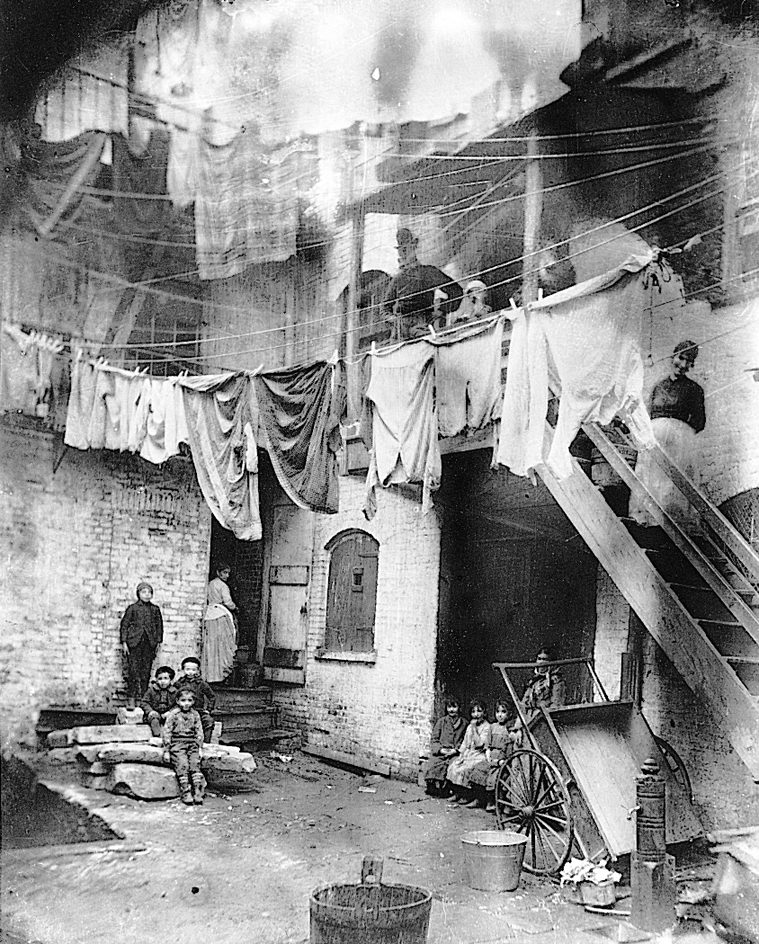
Despite harsh living conditions, hope made the lives of many of the poor tolerable. They knew that advancement was possible in the United States. Some families, through hard work and saving, started small businesses. Even if some workers themselves could not advance economically, they believed that their children would.
The Gilded Age.
The American author Mark Twain called the era of industrialization “The Gilded Age.” Twain used this term to describe the culture of the newly rich of the period. Lacking tradition, the wealthy developed a showy culture supposedly based on the customs of upper-class Europeans. The enormous mansions of the newly rich Americans imitated European palaces. The wealthy filled the mansions with European artworks, antiques, rare books, and lavish decorations. They spent their leisure time attending operas, relaxing at luxurious resorts, or engaging in other activities they believed were signs of refinement.
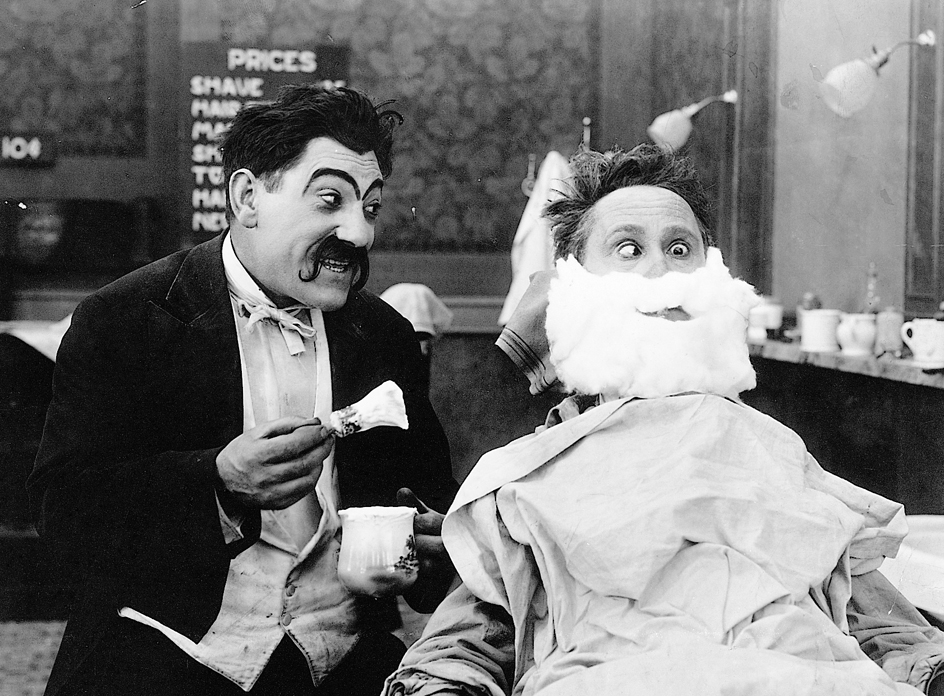
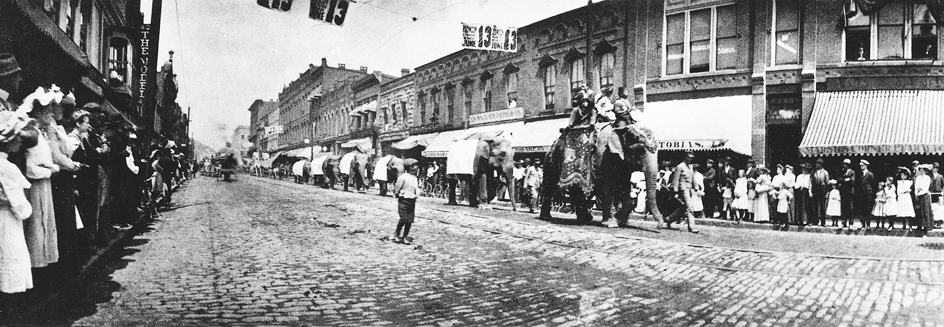

Most Americans, however, preferred different amusements. They enjoyed fairs that exhibited industrial machines, the latest inventions, and other evidence of material progress. The fairs included the Philadelphia Centennial Exposition of 1876, celebrating the 100th anniversary of the founding of the United States, and the Chicago World’s Columbian Exposition of 1893. People eagerly attended circuses; vaudeville (shows consisting of songs, dances, comic skits, and other acts); and sporting events. Baseball became so popular after 1900 that it was called the national pastime. Also after 1900, a new kind of entertainment, the motion picture, began attracting audiences. Many Americans of the era enjoyed playing popular songs from sheet music on parlor pianos, or, after 1877, from records on phonographs. Readers liked illustrated magazines and dime novels, inexpensive books that emphasized adventure and the value of hard work and courage.
The South and white supremacy.
After the Civil War, Americans in the South faced the task of rebuilding their war-torn society. The South lagged behind the rest of the nation economically. Some industry developed in the region, but the South remained an agricultural area throughout the period of industrialization.
White Southerners tried to preserve as much of the old plantation labor system as they could. They wanted to employ newly freed Black people on their farms, paying wages but controlling the land and overseeing Black laborers. The freedmen, however, insisted on control of their own labor and the opportunity to work the land by themselves. The struggle resulted in the emergence of tenant farming and sharecropping, arrangements in which laborers farmed the land and paid rent in money or crops to the owner. 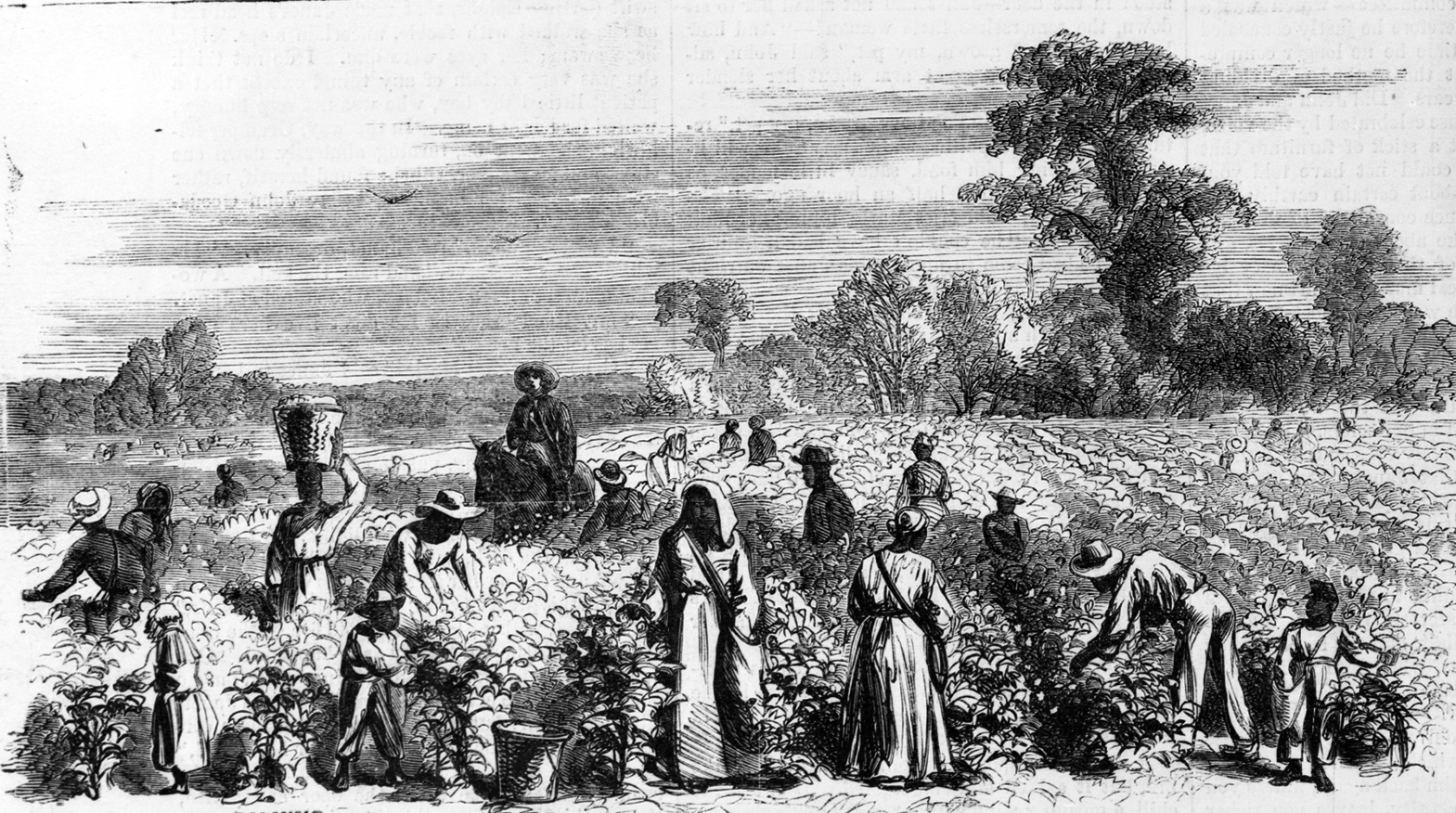
In the 1880’s and 1890’s, white Southerners controlled Black citizens through a series of restrictive laws. They excluded Black people from white-owned hotels and restaurants and confined them to separate libraries, hospitals, and schools. Most facilities for Black residents got little funding and were inferior to those for white people. The Supreme Court of the United States upheld this racial segregation, ruling in Plessy v. Ferguson (1896) that the 14th Amendment did not protect the “social equality” of the races.
Beginning in 1890, all former Confederate states amended their constitutions or used other legal means to restrict Black citizens’ right to vote. Through a series of poll taxes and other requirements for voting, white supremacists substantially barred Black Southerners from political participation. In Alabama, for example, Black voter registration dropped from 100,000 in 1900 to only 3,800 in 1910.
The end of the Western frontier.
The long process of settling the United States from coast to coast drew to a close after the Civil War. In 1862, Congress passed the Homestead Act, which offered public land free or at low cost to anyone who would live on it and improve it. Thousands of Americans and immigrants acquired farms in the West under the act. They settled chiefly on the Great Plains, which, contrary to earlier beliefs, included much excellent farmland. Miners flocked to the West as the demand for minerals soared. Towns sprang up near the mines. Cattle ranching spread throughout the Southwest. 
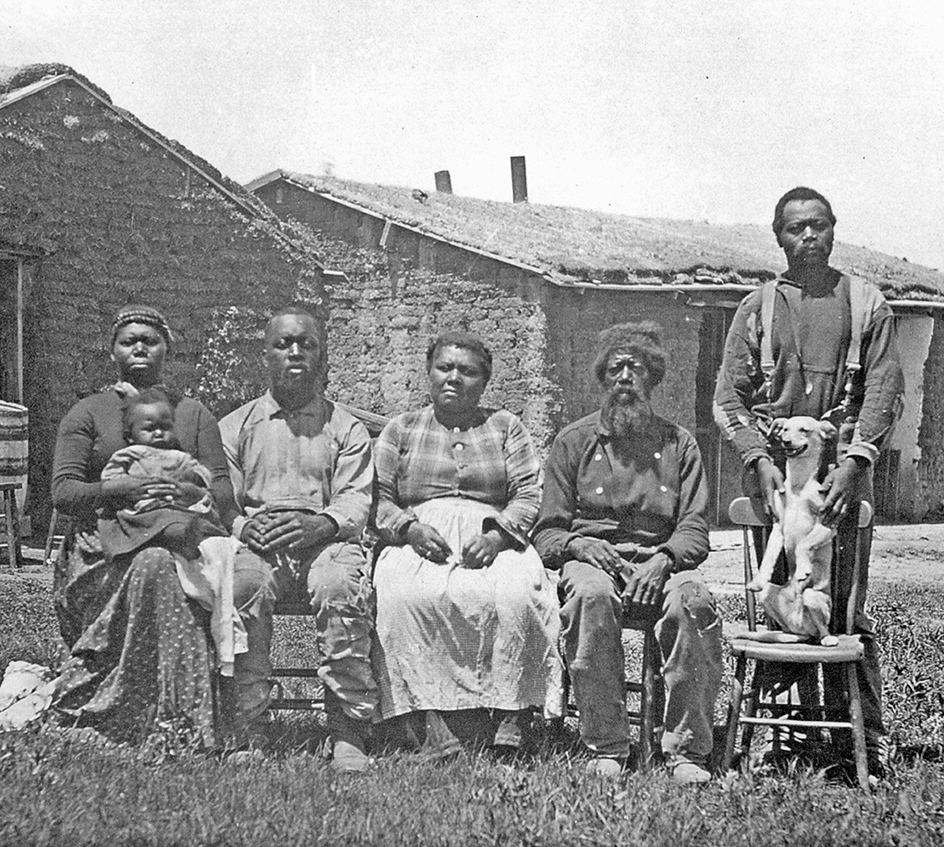
After 1870, settlement became so widespread in the West that it was no longer possible to draw a continuous frontier line. The U.S. Census of 1890 officially recognized the fact that America’s frontier had closed. See Westward movement in America (Settling the Great Plains); Western frontier life in America.
The settlement of the West brought an end to the Native American way of life. Farmers occupied and fenced in much of the land. As white people moved westward, they slaughtered buffalo herds on which Indigenous people depended for survival. Some Native Americans retaliated against the settlers by attacking wagon trains and homes. But as in earlier days, the federal government sent soldiers to crush the uprisings. In the end, the Native American people were no match for the soldiers and their superior weapons. Through the years, the federal government pushed more and more Native Americans onto reservations. Reservation dwellers suffered from poverty and illness, and could not adjust to the new way of life forced upon them. By 1900, the separate Native American way of life had become a thing of the past. For more details, see Indigenous peoples of the Americas (The destruction of Indigenous America); Indian reservation; Indian Territory; Indian wars.
Government and the people.
After the Civil War, the Democratic and Republican parties developed strong political organizations called machines, which did favors for people in return for votes. But in general, political leaders strongly supported business interests. They did little to interfere with business or to close the gap between the rich and the poor.
From the mid-1860’s through the 1880’s, government corruption was widespread. Ulysses S. Grant became president in 1869 and held office until 1877. Members of Grant’s administration used their government positions for their own financial gain. Corruption also flourished in state and local government.
The Spanish-American War
of 1898 marked a turning point in United States foreign policy. Spain ruled Cuba, Puerto Rico, the Philippines, and other overseas possessions. In the mid-1890’s, Cubans revolted against their Spanish rulers. Many Americans demanded that the United States aid the rebels. On Feb. 15, 1898, the United States battleship Maine blew up off Havana, Cuba. No one was certain what caused the explosion, but many Americans blamed the Spaniards. Demands for action against Spain grew, and “Remember the Maine” became a nationwide war cry. 
On April 25, 1898, at the request of President William McKinley, Congress declared war on Spain. The United States quickly defeated Spain, and the Treaty of Paris of Dec. 10, 1898, officially ended the war. Under the treaty, the United States received Guam, Puerto Rico, and the Philippines from Spain. Also in 1898, the United States annexed Hawaii at the urging of sugar cane planters there. See Spanish-American War; Hawaii (History).
A strong spirit of reform
swept through the United States during the late 1800’s and early 1900’s. Many Americans called for changes in the country’s economic, political, and social systems. They wanted to reduce poverty, improve the living conditions of the poor, and regulate big business. They worked to end corruption in government, make government more responsive to the people, and accomplish other goals.
During the 1870’s and 1880’s, the reformers made relatively little progress. But after 1890, they gained much public support and influence in government. By 1917, the reformers had brought about many changes. Some reformers called themselves progressives. As a result, the period of U.S. history from about 1900 to about 1917 is often called the Progressive Era.
Early reform efforts
included movements to organize laborers and farmers. In 1886, skilled laborers formed the American Federation of Labor (AFL), now the American Federation of Labor-Congress of Industrial Organizations (AFL-CIO). Led by Samuel Gompers, a cigar maker, this union bargained with employers and gained better wages and working conditions for its members. Farmers founded the National Grange in 1867 and Farmers’ Alliances during the 1870’s and 1880’s. These groups helped force railroads to lower their charges for hauling farm products and aided farmers in other ways. In 1892, farmers and laborers formed the People’s, or Populist, Party. The Populists called for government action to help farmers and laborers. They gained a large following, and persuaded many Democrats and Republicans to support reforms. See Populism.
Unskilled laborers had less success in organizing than did skilled laborers and farmers. The Knights of Labor, a union open to both unskilled and skilled workers, gained a large membership during the 1880’s. But its membership declined sharply after the Haymarket Riot of 1886. In this incident, someone threw a bomb during a meeting of workers in Haymarket Square in Chicago, and a riot erupted. At least seven police officers and one civilian died. Many Americans blamed the deaths on the labor movement.
Increasingly, unskilled workers resorted to strikes in an attempt to gain concessions from their employers. Often, violence broke out between strikers and strikebreakers hired by the employers. Socialists and others who opposed the U.S. economic system of capitalism supported the strikers and gained a large following.
The drive for woman suffrage
strengthened after the Civil War. In 1869, the suffrage leaders Susan B. Anthony and Elizabeth Cady Stanton founded the National Woman Suffrage Association. The Territory of Wyoming gave women the vote the same year. Soon, a few states allowed women to vote, but only in local elections. 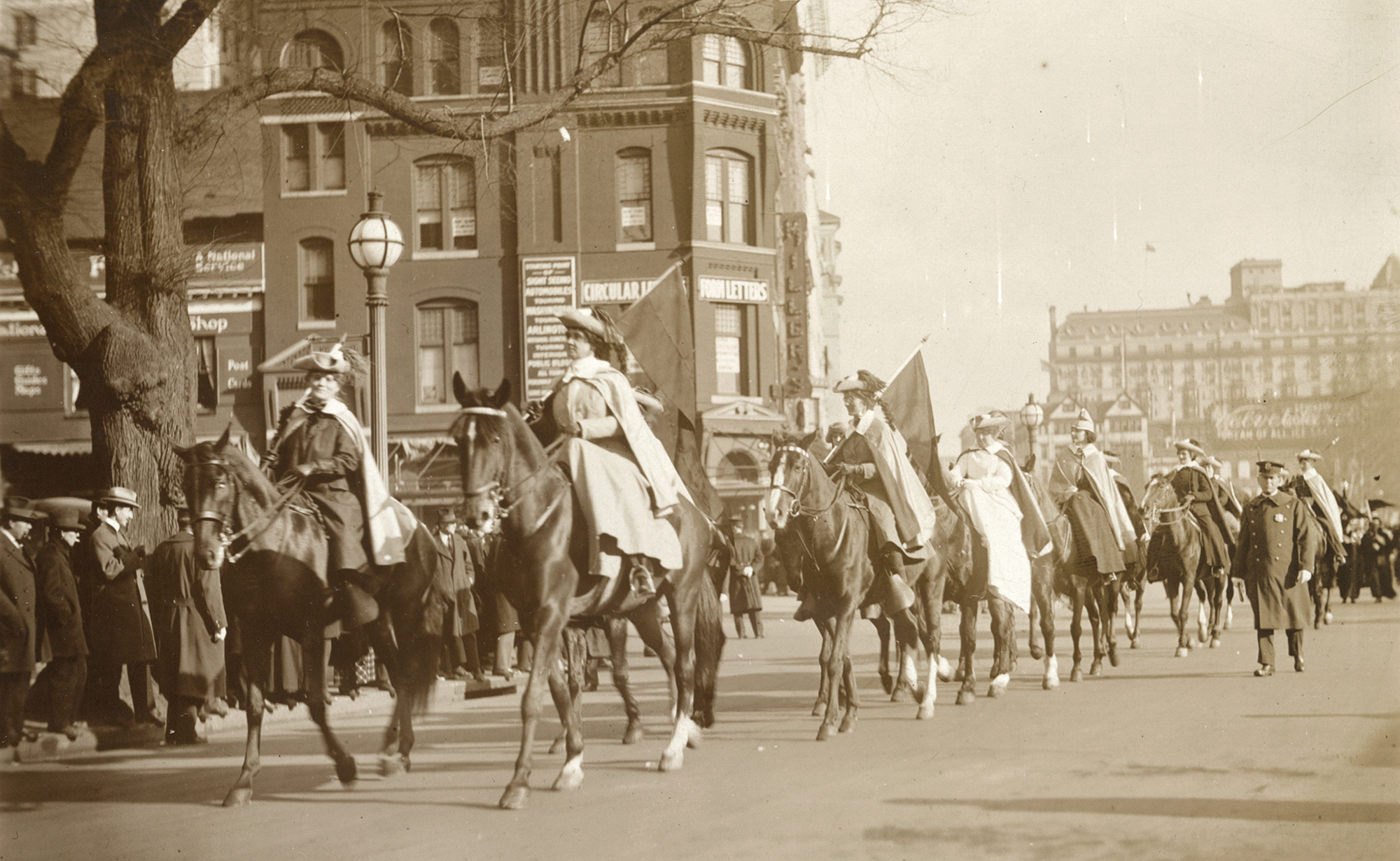
Government and business reforms.
Reformers brought about some changes in government and introduced at least some public supervision of private business. In 1883, their efforts led to passage of the Pendleton, or Civil Service, Act. This federal law established the Civil Service Commission, an agency charged with granting some federal government jobs on the basis of merit, rather than as political favors. The commission was the first federal government regulatory agency in the nation’s history.
In 1887, Congress passed the Interstate Commerce Act. The act created the Interstate Commerce Commission to eliminate unfair business practices and ensure “reasonable and just” shipping rates for interstate railroads. Three years later, the Sherman Antitrust Act prohibited business combinations that resulted in “restraint of trade.” Despite the far-reaching language of these laws, the federal government seldom enforced them. In practice, it did little to regulate business before 1900.
The Progressive Era.
The outcry for reform increased sharply after 1890. Members of the clergy, social workers, and others studied life in the slums and reported on the miserable living conditions there. Educators criticized the nation’s school system. Concerned citizens, led by such educated middle-class women as Jane Addams and Florence Kelly, established facilities called settlement houses in poor neighborhoods. They tried to improve the living conditions of immigrant working-class people. A group of journalists, called muckrakers by their critics, wrote about such evils as corruption in government and how some businesses cheated the public. The writers included Ray Stannard Baker, Lincoln Steffens, and Ida M. Tarbell. 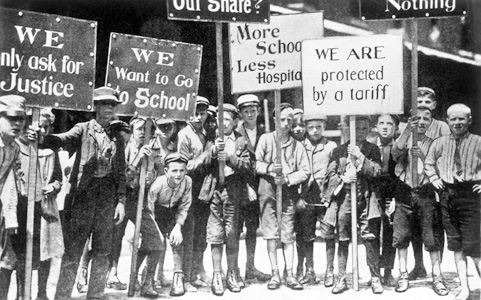
Many middle-class and some upper-class Americans backed reforms. The people wondered about the justice of a society that tolerated such extremes of poverty and wealth. More and more, the power of big business, corruption in government, violent strikes, and inroads by socialism seemed to threaten the American way of life.
Reformers won control of many city and some state governments. They also elected many people to Congress who favored their views. In addition, the first three presidents elected after 1900—Theodore Roosevelt, William Howard Taft, and Woodrow Wilson—supported certain reform laws. These political developments resulted in a flood of reform legislation on the local, state, and federal levels.
Goals of progressivism.
Progressivism embraced many different causes and was backed by a varied and shifting group of supporters. Nonetheless, Progressives shared certain goals. Progressivism was a reform movement and did not seek revolutionary change. Instead, it sought peaceful reforms to existing institutions and improvement of social problems.
Progressivism also remained basically a political movement. Reformers believed in using government power to promote the general welfare but called for fundamental changes in how government exercised its power. Such governmental changes took many forms. On the national level, the executive branch of government expanded through the creation of independent regulatory commissions and such new agencies as the Department of Labor and the Forest Service. On the state level, three measures increased the power of voters: (1) the initiative, which gave voters the right to introduce new laws; (2) the referendum, under which laws could be submitted to a direct vote of the people; and (3) the recall, which enabled voters to remove public officials from office. On the local level, campaigns for efficiency and honesty led to creation of the city manager and commission forms of urban government and other efforts to reduce the power of the political machines.
Theodore Roosevelt
became president in 1901. Roosevelt was a liberal Republican who called for a “square deal” for all Americans. He won fame as a “trust buster.” He did not oppose monopolies altogether, but he believed they should be regulated whenever they operated against the public interest. During Roosevelt’s presidency, the government brought lawsuits against more than 40 companies. The most famous suit, filed in 1906, broke up John D. Rockefeller’s Standard Oil Company in 1911.
Roosevelt became the first president to aid laborers in a strike against employers. In 1902, the United Mine Workers struck for better wages and working conditions. Roosevelt asked the miners and the mine owners to settle their differences through arbitration, but the mine owners refused. Angered, the president threatened to have the Army take over the mines. The owners gave in and reached a compromise with the miners.
In 1906, Upton Sinclair wrote The Jungle, a novel about unsanitary conditions in meat packing. Roosevelt ordered an investigation of Sinclair’s charges and found they were true. At Roosevelt’s urging, Congress passed the Meat Inspection Act and the federal Food and Drugs Act to regulate food and drug processing.
Roosevelt expressed his foreign policy strategy with the slogan, “Speak Softly and Carry a Big Stick.” He meant that the country must back up its diplomatic efforts with military strength. The United States built up its armed forces under Roosevelt. In 1902, Germany, Italy, and the United Kingdom blockaded Venezuela in an attempt to collect debts from that South American nation. Citing the Monroe Doctrine, Roosevelt forced the Europeans to withdraw. In 1903, the president used a threat of force to gain the right to dig the Panama Canal.
Taft and Wilson.
Republican William Howard Taft succeeded Roosevelt in 1909. Although a conservative, Taft helped further the cause of reform. He brought twice as many suits against businesses as Roosevelt did. He also extended the civil service and called for a federal income tax.
In 1912, conservative Republicans backed Taft for their party’s presidential nomination, and liberal Republicans supported Roosevelt. Taft won the nomination. The liberals then formed the Progressive, or “Bull Moose,” Party and nominated Roosevelt for president. The Republican split enabled Woodrow Wilson, a Democrat who favored reform, to win the presidency. The Democrats also gained control of Congress.
The reform movement flourished under Wilson. Two amendments to the Constitution proposed during Taft’s administration were ratified in 1913. The 16th Amendment gave the federal government the power to levy an income tax. The 17th Amendment provided for the election of U.S. senators by the people, rather than by state legislatures. In 1913, the government set up the Federal Reserve System to supervise the nation’s banking and financial service industries. One year later, Wilson signed the Federal Trade Commission (FTC) Act, creating a new government agency to oversee big business. For more details on this era of reform in the United States, see Progressive Era.
During the 1870’s and 1880’s, the United States had paid relatively little attention to foreign affairs. In comparison to such European nations as France, Germany, and the United Kingdom, the United States was weak militarily and had little influence in international politics. During the 1890’s and early 1900’s, however, the United States developed into a world power and took a leading role in international affairs. In 1916, during Wilson’s administration, U.S. troops occupied the Dominican Republic to keep order. These and other actions showed that the United States had emerged as a world power.
World War I and postwar growth (1917-1929)
In 1914, long-standing problems among European nations led to the outbreak of World War I. In this fierce, destructive struggle, the Central Powers (Germany and a few other nations) lined up against the Allies (France, Italy, Russia, the United Kingdom, and many smaller countries). Finally, events dragged the United States into the war on the side of the Allies and tested its new role as a world power. For the first time in its history, the United States mobilized for a full-scale war on foreign territory.
The United States in the war.
After World War I began in 1914, the United States repeatedly stated its neutrality. But increasingly, German acts of aggression brought the United States closer to joining the Allies. In 1915, a German submarine sank the British passenger ship Lusitania. The attack killed 1,201 people, including 128 American passengers. Wilson and other Americans bitterly protested this killing of defenseless civilians, and Germany agreed to stop such attacks. 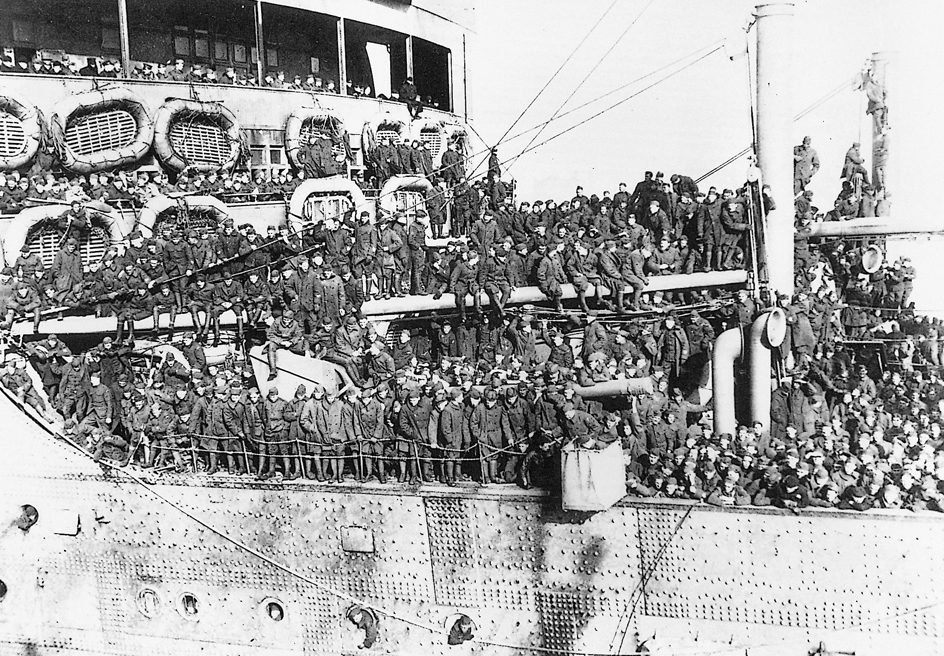
Wilson won reelection as president in November 1916, using the slogan, “He Kept Us Out of War.” Three months later, German submarines began sinking U.S. merchant ships. These and other acts of aggression convinced Wilson and other Americans of the need to join the war against Germany to make the world “safe for democracy.” The United States declared war on Germany on April 6, 1917.
The American people rallied around their government’s decision to go to war. Almost 2 million men volunteered for service, and about 3 million were drafted. About 2 million U.S. fighting men crossed the Atlantic in troopships. American troops, known as doughboys, fought valiantly in the trenches, forests, and fields of Belgium and France, and helped the battered Allies turn back a major German offensive.
On the home front, the spirit of patriotism grew to a fever pitch. Americans bought billions of dollars worth of Liberty Bonds to help pay the cost of the war. Fiery patriotic songs, such as George M. Cohan’s “Over There” and “You’re a Grand Old Flag,” gave a lift to the spirits of the doughboys and the public alike. Patriotism sometimes overflowed into acts of violence against Americans of German descent and repression of radicals, pacifists, and other critics of the war.
World War I ended in an Allied victory. The two sides signed an armistice on Nov. 11, 1918. For a detailed account of the conflict, see World War I.
The peace treaty.
In 1919, the Allies held the Paris Peace Conference to draw up the terms of the peace with Germany. Wilson viewed the conference as an opportunity to establish lasting peace among nations. He proposed a list of terms called the Fourteen Points to be used as a guide for the peace settlement. The terms included arms reductions and settlement of disputed territorial claims (see Fourteen Points). But the other leading Allies were chiefly interested in gaining territory and war payments from Germany. They adopted the Treaty of Versailles, which embodied many of Wilson’s proposals for trade, freedom of the seas, and independence for the peoples of Central and Eastern Europe. But the treaty stripped Germany of its armed forces and much territory, and forced it to pay high war damages.
The Treaty of Versailles also made provision for Wilson’s most ambitious proposal, an association of nations, later called the League of Nations, that would work to maintain peace. But Wilson suffered a final blow to his peace plans when the United States Senate failed to ratify the Treaty of Versailles. Thus, the Senate rejected U.S. participation in the League of Nations. See League of Nations; Versailles, Treaty of; Wilson, Woodrow (Wilson’s second administration (1917-1921)).
The Roaring Twenties.
The decade following World War I brought sweeping changes to American life. The economy entered a period of spectacular, though uneven, growth. Spurred on by the good times and a desire to be “modern,” large numbers of Americans adopted new attitudes and lifestyles. The booming economy and fast-paced life of the decade gave it the nickname of the Roaring Twenties.
In many ways, the 1920’s marked the point at which the United States began developing into the modern society it is today. During and after World War I, people continued to move from farms to cities in record numbers. The 1920 United States Census reported that, for the first time, a majority of Americans lived in urban areas. By the end of the Roaring Twenties, such features of modern life as the automobile, telephone, radio, and electric washing machine had become part of millions of American households. 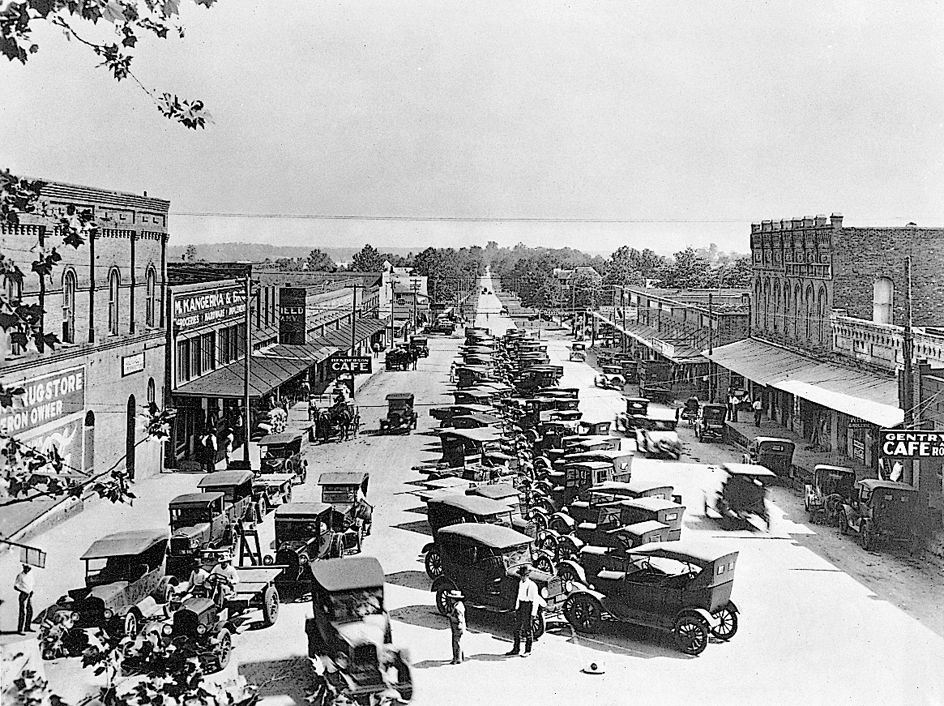
The role of American women changed greatly in the 1920’s. The 19th Amendment to the Constitution, which became law on Aug. 26, 1920, gave women the right to vote in all elections. In addition, many new opportunities for education and careers opened to women. Many women found careers outside the home and began thinking of themselves as the equal of men.
Developments of the 1920’s broadened the experiences of millions of Americans. The mass movement to cities meant more people could enjoy such activities as movies, plays, and sporting events. Radio broadcasting began on a large scale during the 1920’s. It brought news of the world and entertainment into millions of homes. The automobile gave people a new way to get around. In 1927, the aviation pioneer Charles A. Lindbergh helped launch the modern air age when he made the first solo flight across the Atlantic.
The new trends of the 1920’s brought about problems as well as benefits. Many Americans had trouble adjusting to the impersonal, fast-paced life of cities. This led to a rise in juvenile delinquency, crime, and other antisocial behavior. City life also tended to weaken the strong family ties that had long been part of American society.
Prohibition.
The 18th Amendment to the Constitution, the Prohibition amendment, caused unforeseen problems. It outlawed the sale of alcoholic beverages throughout the United States as of Jan. 16, 1920. Many otherwise law-abiding citizens considered Prohibition a violation of their rights. They ignored the law and bought liquor provided by underworld gangs. The supplying of illegal liquor was called bootlegging because smugglers sometimes hid liquor in boot legs. The profitable bootlegging business helped many gangs prosper, but competition for control of the business led to gang wars. See Prohibition.
The Lost Generation and Flaming Youth.
A number of the nation’s most prominent authors explored the discontent underlying the glamorous surface of American life. This Lost Generation of writers, many of whom went into self-imposed exile in Europe, included F. Scott Fitzgerald, whose alienated fictional characters pursued lives of empty pleasure-seeking. Another prominent author, Sinclair Lewis, won fame for novels that portrayed the “average American” as narrow-minded and dull.
In an effort to be modern, many young men and women of the Roaring Twenties adopted a lifestyle that earned them the nickname of Flaming Youth. Women began wearing new clothing styles. Short skirts, rolled-down stockings, and short “bobbed” hair replaced the full-length dresses and long hair of earlier days. Women who wore such clothes became known as flappers. The flappers and their escorts enjoyed such new thrills as speeding around in cars. They, along with many of their elders, visited supposedly secret nightclubs called speakeasies. At the speakeasies, people drank bootleg liquor; listened to jazz, the latest craze in popular music; and danced the Charleston and other modern steps. 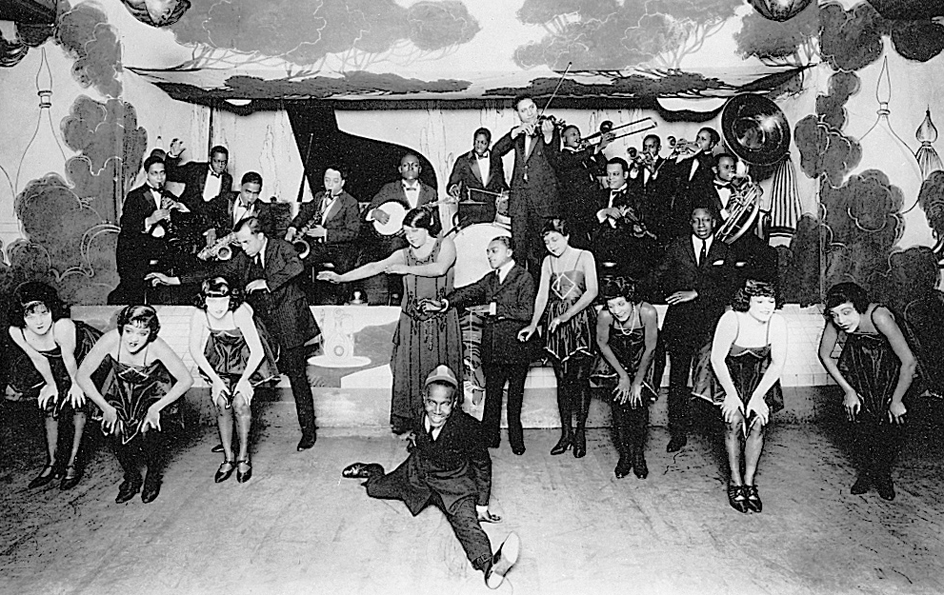
Heroes.
Americans of the Roaring Twenties developed strong admiration for individual accomplishment. Lindbergh’s transatlantic flight made him a national hero. Sports superstars of the 1920’s won the public’s admiration for their talent. The stars included Red Grange of football, Jack Dempsey of boxing, Bobby Jones of golf, Bill Tilden and Helen Wills of tennis, and—most of all—baseball’s Babe Ruth. The movies provided the public with daring fictional heroes, including good cowboys who always defeated bad Indians or outlaws.
Looking backward.
Not all Americans saw the changes brought by the Roaring Twenties as desirable. Many people yearned for a return to old traditions, a trend reflected in many areas of life. In politics, it led to the return of a conservative federal government. In his successful presidential campaign of 1920, Warren G. Harding used the slogan “A Return to Normalcy.” But, in 1923, investigators revealed widespread corruption in his administration (see Harding, Warren Gamaliel (Government scandals); Teapot Dome). The enthusiasm for reform that marked the Progressive Era lessened after World War I. American voters elected to Congress conservatives who promised to reduce the role of government. All three presidents elected during the 1920’s—Harding, Calvin Coolidge, and Herbert Hoover—were Republicans who agreed with that policy.
In religion, the trend toward tradition led to an upsurge of revivalism (emotional religious preaching). Revival meetings were most common in rural areas, but also spread to cities. The preacher Billy Sunday drew wildly enthusiastic crowds to his revivals in big cities. 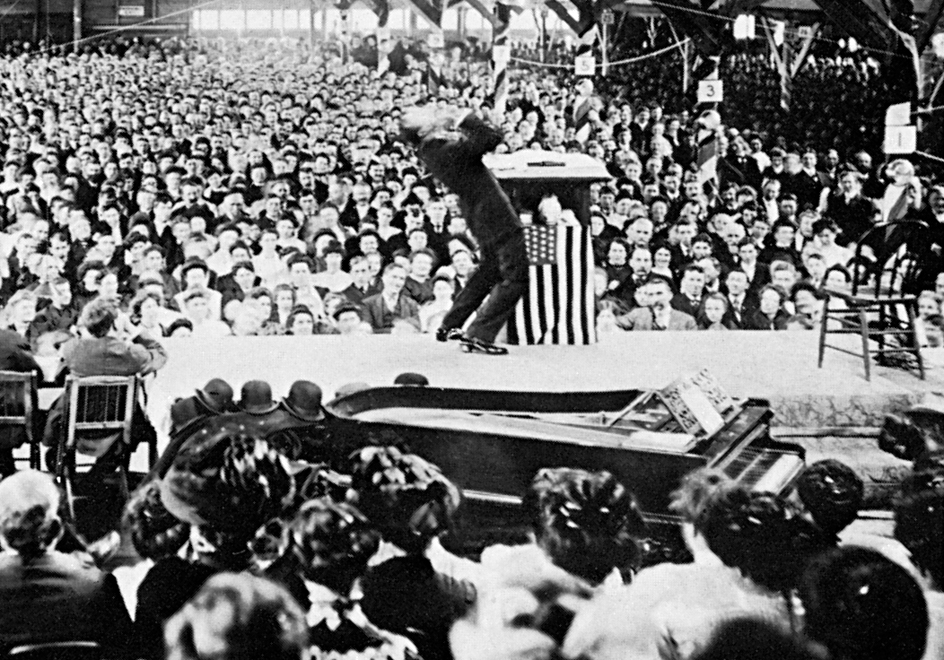
The Ku Klux Klan had died out in the 1870’s, but a new Klan gained a large following during the 1920’s. The new Klan had easy answers for Americans who were troubled by modern problems. It blamed the problems on “outsiders,” including Black people, Jews, Roman Catholics, foreigners, and political radicals. Both Northerners and Southerners joined the Ku Klux Klan. At its height, the organization had more than 2 million members.
The fear of outsiders also led to the passage of the National Origins Act (1924), also known as the Immigration Act of 1924. The law severely restricted legal immigration to the United States and established quotas for new arrivals based on their country of origin.
The economy—boom and bust.
During the 1920’s, the U.S. economy soared to spectacular heights. Republicans gained control of the federal government and adopted policies that aided big business. In 1922, the government passed the Fordney-McCumber Act. The law raised tariff duties to the highest level ever to keep foreign goods from competing with American products. This and other measures did much to help American business flourish.
Technological developments contributed to economic growth. Technology enabled U.S. manufacturers to develop new products, improve existing ones, and turn out goods faster and more cheaply than ever before. Sales of such items as electric washing machines, refrigerators, and radios soared. But the manufacturing boom depended most heavily on the growth of the automobile industry. Before and during the 1920’s, Henry Ford and others refined car manufacturing to a science. The cost of automobiles continued to drop, and sales soared. In just 10 years between 1920 and 1930, the number of cars registered in the United States almost tripled, from about 8 million to 23 million. The thriving auto industry triggered growth in such related industries as steel, roadbuilding, gasoline sales, and tourism.
Despite its growth and apparent strength, the economy was on shaky ground. Only one segment of the economy, manufacturing, prospered. The distribution of wealth grew lopsided. Business executives grew rich, but agriculture and labor did not share in the prosperity. A shrunken market for farm goods in war-torn Europe and a slowdown in U.S. population growth reduced demand for farm products. As a result, farmers became worse off than before the war. Labor unions suffered major setbacks during the 1920’s. A lack of government support reduced unions’ power in dealing with employers, and workers in many new industries remained unorganized. Widespread poverty among farmers and laborers cut into the demand for manufactured goods, a contributing factor to the upcoming depression. For more details on the decade of the 1920’s, see Roaring Twenties.
The stock market crash of 1929.
The economic growth of the 1920’s led more Americans than ever to invest in stocks. The investments, in turn, provided companies with a flood of new capital for business expansion. As investors poured money into the stock market, the value of stocks soared. The upsweep led to widespread speculation, pushing the value of stocks far beyond the level justified by earnings and dividends. Much speculation involved buying stocks on margin—that is, paying a fraction of the cost and borrowing the rest of the purchase price. 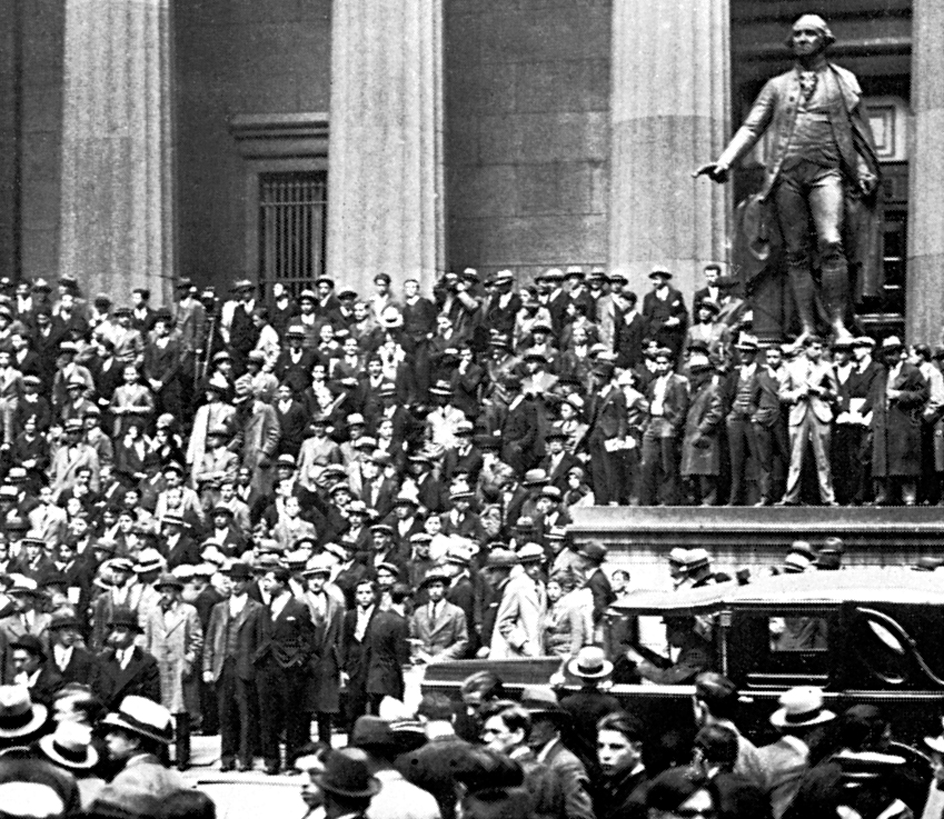
Finally, in 1929, wild speculation led to a stock market crash that toppled the economy. In late October, a decline in stock prices set in. Panic selling followed, lowering stock prices drastically and dragging investors to financial ruin. When the year ended, the government estimated that the crash had cost investors $40 billion.
The stock market crash sent shock waves through the financial community. Banks reduced their loans to businesses, and businesses then cut back on production. Millions of people lost their jobs because of the cutbacks. Spending dwindled, and businesses suffered even more. Factories and stores shut down, causing higher unemployment. Demand for farm products declined, and farmers became even worse off. Thousands of banks failed, and foreign trade decreased sharply. By the early 1930’s, the nation’s economy was paralyzed.
Depression and world conflict (1930-1959)
The stock market crash of 1929 combined with the other weaknesses in the nation’s economy to bring on the Great Depression of the 1930’s, the worst and longest depression in U.S. history. The Great Depression was not limited to the United States. It struck almost every country in the world. In some countries, the hard times helped bring to power dictators who promised to restore the economy. The dictators included Adolf Hitler in Germany and a group of military leaders in Japan. Once in power, both Hitler and the Japanese rulers began seizing neighboring lands. Their actions led to World War II, the most destructive conflict in history.
The United States in the Great Depression.
The United States suffered through the Great Depression for more than 10 years. During the Depression, millions of workers lost their jobs, and large numbers of farmers were forced to abandon their farms. Poverty swept through the nation on a scale never before experienced. Loading the player...
Great Depression
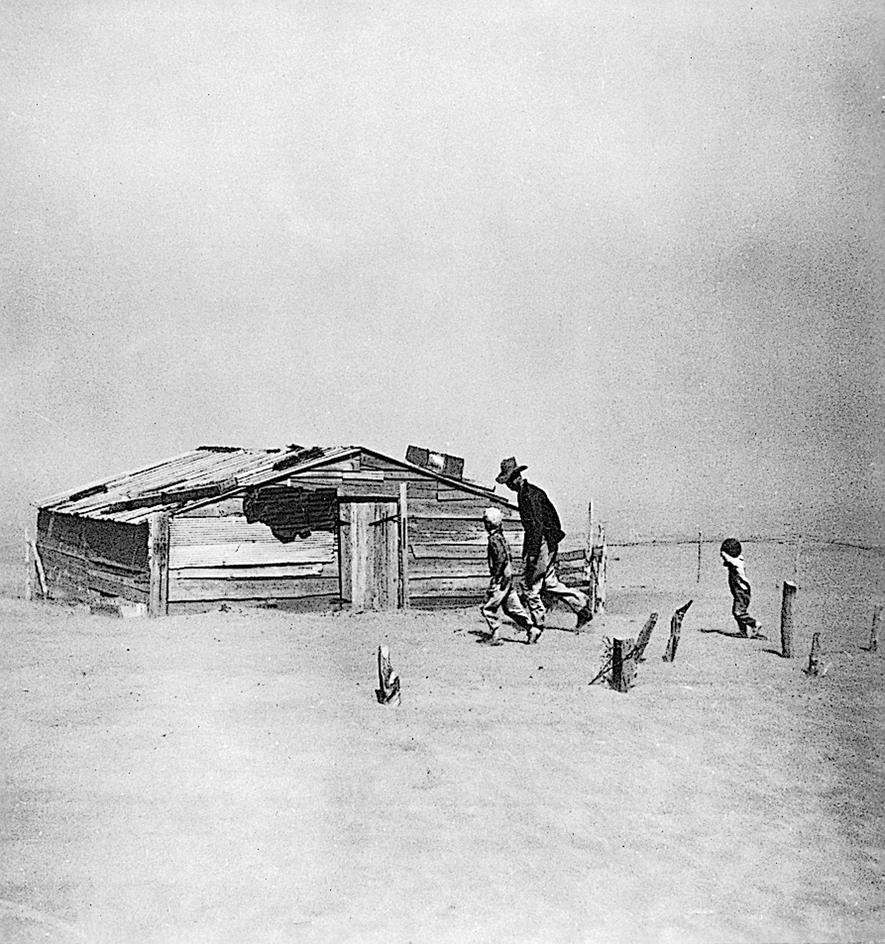
At the height of the Depression in 1933, about 13 million Americans were out of work, and many others had only part-time jobs. Farm income declined so sharply that more than 750,000 farmers lost their land. The Dust Bowl, the result of a terrible drought on the western Great Plains, wiped out many farmers (see Dust Bowl). Hundreds of thousands of people lost their life savings as a result of bank failures.
Throughout the Depression, many Americans went hungry. People stood in “bread lines” and went to “soup kitchens” to get food provided by charities. Often, two or more families lived crowded together in a small apartment. Some homeless people built shacks of tin and scraps of wood in vacant areas. They called these clumps of shacks Hoovervilles, a scornful reference to Herbert Hoover, president when the Depression struck.
Recovery and reform.
Early in the Great Depression, Hoover promised that prosperity was “just around the corner.” But the Depression deepened as the election of 1932 approached. The Republicans slated Hoover for reelection. The Democrats chose Franklin D. Roosevelt. In his campaign, Roosevelt promised government action to end the Great Depression and reforms to avoid future depressions. He won a landslide victory.
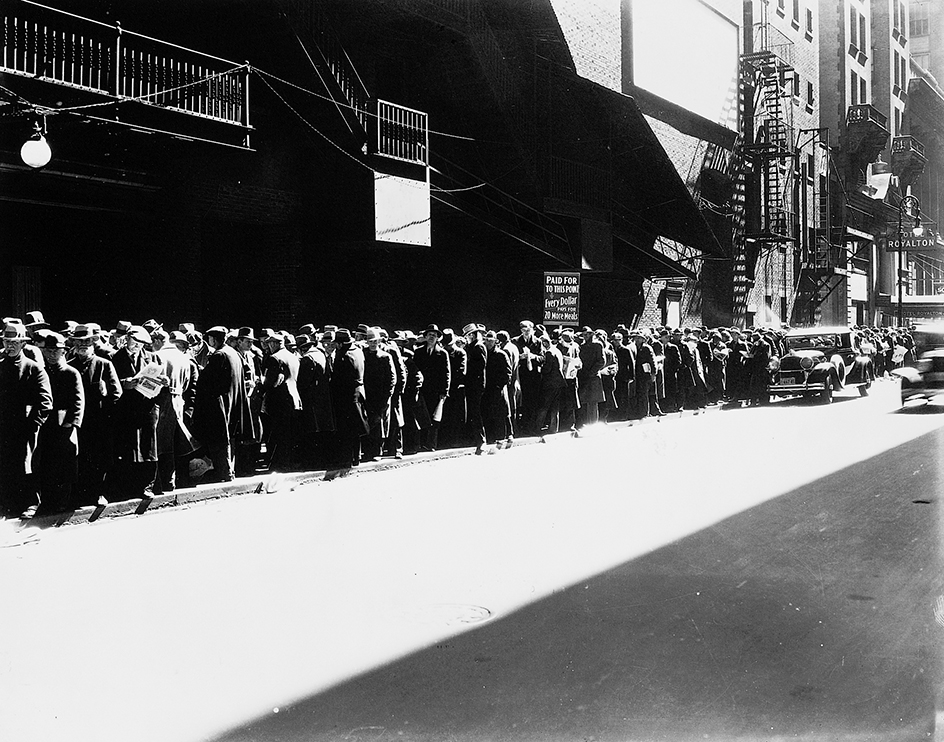

Roosevelt’s program for recovery was called the New Deal. Its many provisions included public works projects to provide jobs, relief for farmers, aid to manufacturing firms, and regulation of banks. A solidly Democratic Congress approved almost every measure Roosevelt proposed. Many new government agencies were set up to help fight the Depression. They included the Civilian Conservation Corps and the Works Progress Administration (later the Work Projects Administration), both of which provided jobs; the Farm Credit Administration, which extended credit to farmers; and the Social Security Board, which developed the Social Security system of payments to retired workers and workers with disabilities.
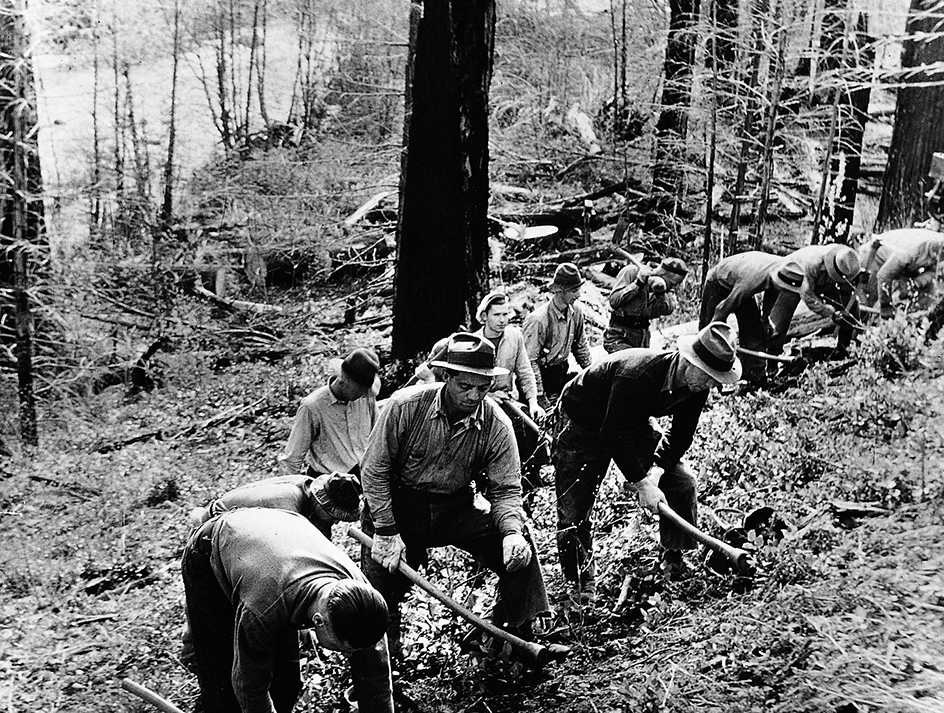
The New Deal offered direct aid to the American people. It provided subsidies (payments) for farmers, tuition grants for needy students, public works jobs for the unemployed, pensions for the elderly, electric power for rural homes, and food for the desperate and hungry.
Roosevelt’s efforts to end the Depression made him one of the most popular U.S. presidents. The voters elected him to four terms. No other president had ever won election more than twice, and in 1951 the 22nd Amendment to the Constitution provided that no one could be elected to the presidency more than twice.
The New Deal helped relieve the hardship of many Americans. However, hard times dragged on until World War II military spending stimulated the economy. See Great Depression; New Deal.
World War II
began on Sept. 1, 1939, when German troops overran Poland. The United Kingdom, France, and other countries (called the Allies) went to war against Germany. At first, the United States stayed out of the war. But on Dec. 7, 1941, Japanese planes bombed the U.S. military base at Pearl Harbor, Hawaii. The United States declared war on Japan on December 8. Three days later Germany and Italy, Germany’s chief ally, declared war on the United States. Loading the player...
Attack on Pearl Harbor
The American people backed the war effort with fierce dedication. About 15 million American men served in the armed forces. They ranged from teenagers to men well over 40. About 338,000 women served in the armed forces. At home, automobile plants and other factories were converted into defense plants where airplanes, ships, weapons, and war supplies were made. The country had a shortage of civilian men, and so thousands of women worked in the defense plants. “Rosie the Riveter,” described in a popular song as “making history working for victory,” became the symbol of women workers. Even children took part in the war effort. Boys and girls collected used tin cans, old tires, and other “junk” that could be recycled and used for war supplies. 
On May 7, 1945, after a long, bitter struggle, the Americans and other Allies forced the mighty German empire to surrender. Vice President Harry S. Truman had become president after Roosevelt’s death about a month earlier. The Allies demanded Japan’s surrender, but Japan continued to fight. Truman then made one of the major decisions in history. He ordered the use of the atomic bomb, a weapon many times more destructive than any previous weapon. An American plane dropped the first atomic bomb used in warfare on Hiroshima, Japan, on Aug. 6, 1945. A second atomic bomb was dropped on Nagasaki on August 9. Japan formally surrendered on September 2, and the war ended. For more details, see World War II. 
Postwar prosperity.
After World War II, the United States entered the greatest period of economic growth in its history. Periods of inflation (rapidly rising prices) and recession (business slumps) occurred. But overall, businesses and people prospered. Prosperity spread to more Americans than ever before, resulting in major changes in American life. However, not all people shared in the prosperity. Millions of Americans, including a high percentage of the nation’s Black citizens, lived in poverty. The persistence of poverty amid prosperity brought on a period of active social protest and sparked an ambitious and controversial series of reforms.
Military spending during World War II drew the United States out of the Great Depression. Major industries, such as automobile manufacturing and housing construction, had all but stopped during the war. After the war, these industries resumed production on a much larger scale than ever. Such relatively new industries as electronics, plastics, frozen foods, and jet aircraft became booming businesses.

The shortage of goods during the war and other factors combined to create a vast market for American products. A population boom increased the number of consumers. Between 1950 and 1960 alone, the population of the United States grew by about 28 million. Labor unions became stronger than ever, and they gained high wages and other benefits for their members. Minimum wage laws and other government regulations also helped give workers a greater share of the profits of business. These developments also meant that more Americans had more money to spend on goods. 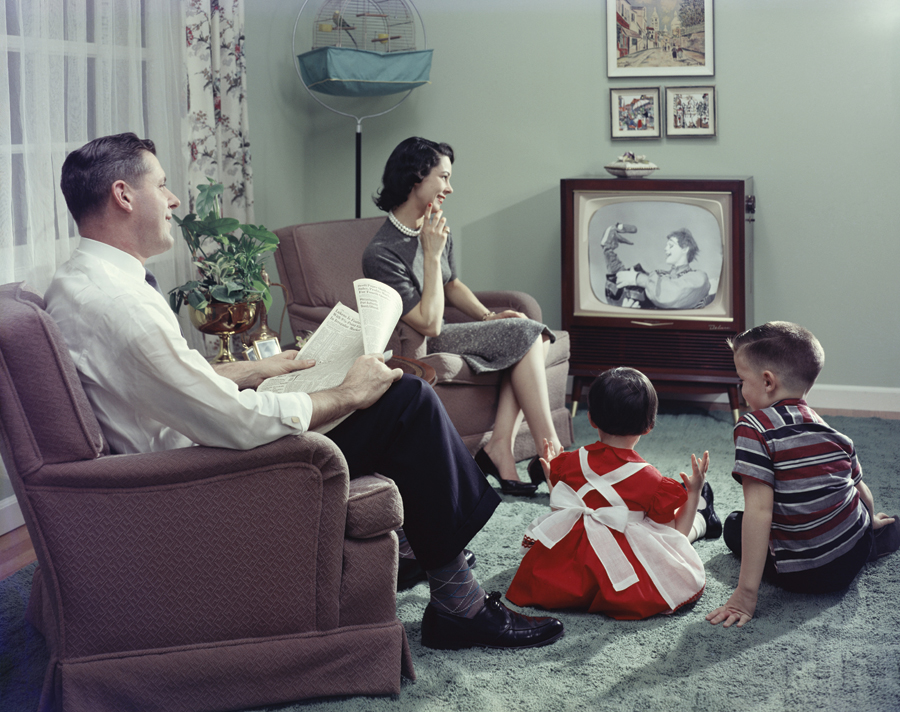
Prosperity and technological advances changed American life in other ways. Television, an experimental device before the war, became a feature of most American homes during the 1950’s. This wonder of modern science brought scenes of the world into American living rooms at the flick of a switch. Fascinated, large numbers of people made watching TV one of their main leisure-time activities. New appliances made household work easier. They included automatic washers, driers, dishwashers, and garbage disposals.
Suburban growth.
After the war, millions of people needed, and could afford, new housing. Construction companies built huge clusters of houses in suburbs around the nation’s cities. The suburbs attracted people for many reasons. They offered newer housing, more open space, and—usually—better schools than the central cities could provide. 
The growth of suburbs also deepened racial divisions. Between 1950 and 1970, about 7 million white Americans left central cities for overwhelmingly white suburban communities. In the same period, almost 3 million African Americans moved from the South to northern cities.
A rise in automobile ownership accompanied the suburban growth. The majority of suburbanites worked in the central cities and depended on cars to get to and from work. Most suburbs lacked good local transportation systems, and so families relied on cars to go shopping or almost anywhere else. By 1960, over three-fourths of all American families owned a car, and almost a fifth owned more than one. Increased automobile traffic led to the building of a nationwide network of superhighways. Increased car ownership and greater prosperity enabled more people than ever to take vacation trips. New motels, fast-service restaurants, and gas stations sprang up to serve the tourists.
Poverty and discrimination.
Despite the general prosperity, millions of Americans still lived in poverty. The poor included members of all ethnic groups, but the plight of the nation’s poor Black people seemed especially bleak. Ever since emancipation, Black citizens in both the North and South had faced discrimination in jobs, housing, education, and other areas. A lack of education and jobs made poverty among African Americans widespread.
During the early 1900’s, Black citizens, joined by many white people, had begun a movement to extend civil rights to Black people. The movement gained momentum after World War II. Efforts of civil rights leaders resulted in several Supreme Court decisions that attacked discrimination. In the best-known case, Brown v. Board of Education of Topeka (1954), the court ruled compulsory segregation in public schools illegal. 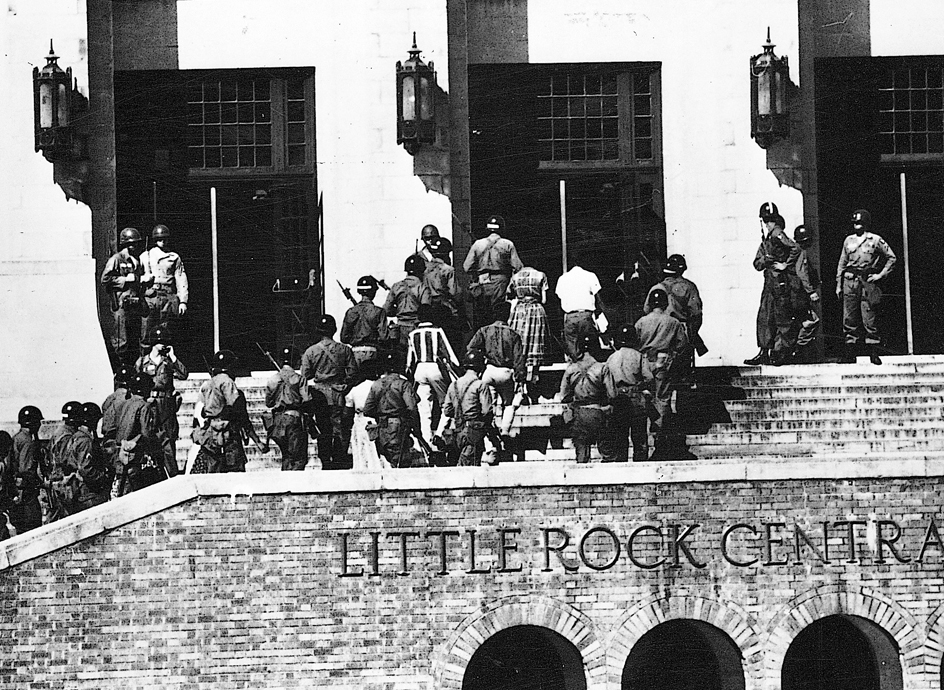
Despite the gains, many civil rights leaders became dissatisfied with the slow progress of their movement. In the mid-1950’s, Black Southerners began organizing demonstrations protesting discrimination. In 1955, Martin Luther King, Jr., a young Baptist minister, led a successful bus boycott in Montgomery, Alabama. A supporter of nonviolent civil disobedience, King became a prominent leader of the emerging civil rights movement. Public protests soon became a major tool of Americans seeking change.
The Cold War.
The United States and the Soviet Union both fought on the side of the Allies during World War II. But after the war, the two countries became bitter enemies. The Soviet Union, as a Communist country, opposed democracy. It helped Communists take over most of Eastern Europe and also aided Communists who seized control of China.
The Soviet Union and China then set out to spread Communism to other lands. The United States, as the world’s most powerful democratic country, took on the role of defending non-Communist nations threatened by Communist take-over. The containment of Communism became the major goal of postwar U.S. foreign policy.
The struggle between the U.S.-led non-Communist nations and the Soviet Union and its Communist allies became known as the Cold War. The conflict was so named because it did not lead to fighting, or a “hot” war, on a major scale.
Both the United States and the Soviet Union built up arsenals of nuclear weapons. The nuclear weapons made each nation capable of destroying the other, and the threat of nuclear war made both sides cautious. As a result, Cold War strategy emphasized propaganda, threats of force, and aid to weak nations. The United Nations (UN), founded in 1945, provided a forum where the nations could try to settle their Cold War disputes.
Truman and Dwight D. Eisenhower, the first two presidents of the Cold War era, pledged U.S. military support to any nation threatened by Communism. In 1949, the United States and 11 other nations established the North Atlantic Treaty Organization (NATO), a military alliance designed to discourage Soviet attack. In addition, the United States provided billions of dollars to non-Communist nations. See Cold War. Loading the player...
Dwight Eisenhower
The Korean War
resulted from the Cold War friction. On June 25, 1950, troops from Communist North Korea, equipped by the Soviet Union, invaded South Korea. The UN called on member nations to help restore peace. Truman sent U.S. troops to aid South Korea, and the UN sent a fighting force made up of troops from many nations. The war lasted three years, ending in a truce on July 27, 1953. See Korean War.
McCarthyism.
The spread of Communism caused deep divisions within the United States. Conservatives blamed the Roosevelt and Truman administrations for allowing Communism to make its postwar gains. Senator Joseph R. McCarthy, a Wisconsin Republican, made numerous charges—usually with little evidence—that Communists had infiltrated the government, the entertainment industry, and other fields. The charges led to widespread accusations and investigations of suspected Communist activities in the United States. Conservatives believed the investigations were needed to save the country from Communist control. Liberals charged McCarthy and his followers with conducting “witch hunts”—that is, trying to fix guilt on people without evidence. See McCarthyism.
Protests and progress (1960-1999)
World and national events brought dramatic social changes to the United States after 1960. The space race turned Americans’ attention to new frontiers beyond their own planet. The Black civil rights movement grew in intensity. Many other groups, including Native Americans, Mexican Americans, and women, also began demanding fuller rights. Protesters of all kinds staged demonstrations seeking change. Most demonstrations were conducted peacefully, but some led to violence.
The space race.
The Cold War led the United States and the Soviet Union to compete with each other in developing space programs. On April 12, 1961, the Soviet cosmonaut Yuri A. Gagarin became the first person to orbit Earth. The United States quickly matched the Soviet achievement. On May 5, 1961, astronaut Alan B. Shepard, Jr., became the first American space traveler. He made a 15-minute flight in a Mercury capsule but did not go into orbit. On Feb. 20, 1962, John H. Glenn, Jr. became the first American to orbit Earth. His Friendship 7 spacecraft circled the planet three times. The United States and the Soviet Union then matched their technological skills in a race to the moon. On July 20, 1969, millions of people watched on TV as U.S. astronaut Neil A. Armstrong climbed down from his spacecraft and became the first person to set foot on the moon. The space race faded by the late 1970’s, when the two countries began to pursue independent goals in space.
The civil rights movement
became the main domestic issue in the nation in the early 1960’s. Black people, joined by many white people, staged demonstrations to dramatize their demands for rights and equality. One of the highlights of the movement came on Aug. 28, 1963, when about 250,000 people took part in a civil rights march called the March on Washington in Washington, D.C. 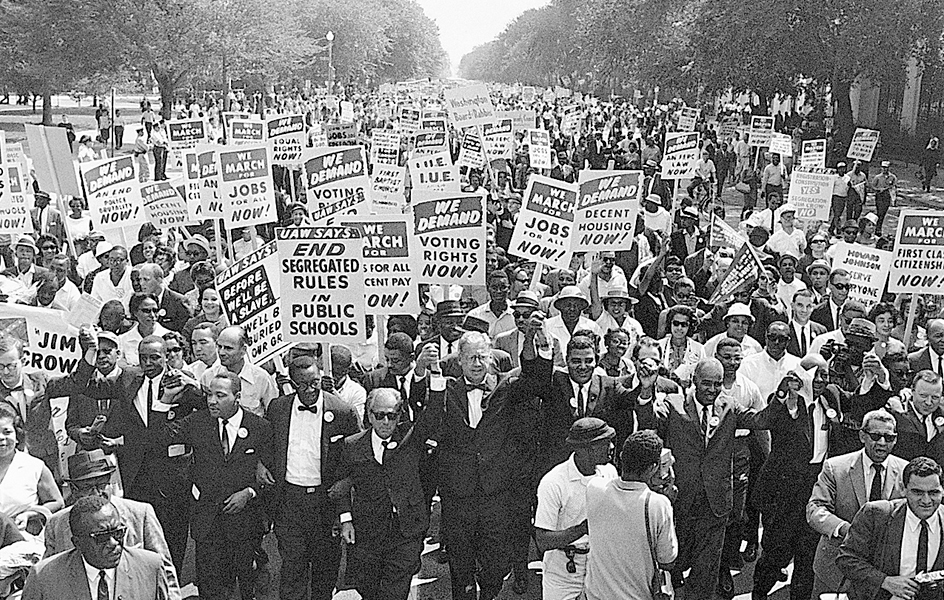
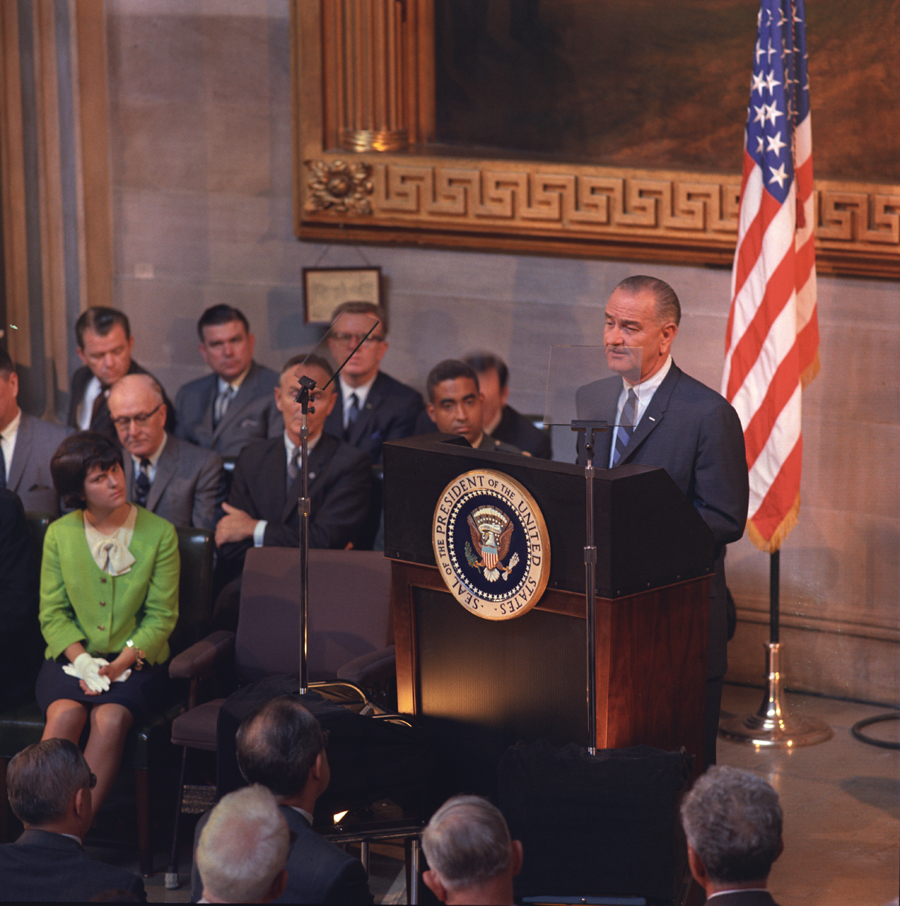
John F. Kennedy, who became president in 1961, urged Congress to pass legislation outlawing discrimination on the basis of race. An assassin killed Kennedy on Nov. 22, 1963, and Vice President Lyndon B. Johnson became president. Johnson, a former U.S. senator skilled in dealing with legislators, persuaded Congress to pass many major civil rights laws. The Civil Rights Act of 1964 outlawed discrimination in employment, voter registration, and public accommodations. The Voting Rights Act of 1965 removed barriers to Black voter registration and political participation. The Civil Rights Act of 1968 was designed to end discrimination in the sale and rental of housing. Congress, at Johnson’s urging, also provided financial aid for the needy as part of a program that Johnson called the War on Poverty. For a detailed account of the Black civil rights movement, see African Americans.
Despite government aid and a generally booming economy, poverty remained a major problem in the central cities. Discontent grew among African Americans in poor, decaying neighborhoods. In the mid-1960’s, Black Americans rioted in poverty-stricken areas of Chicago, Cleveland, Detroit, Los Angeles, New York City, Newark, and other cities. Many rioted again in 1968, following the assassination of Martin Luther King, Jr. Racial tension also erupted into riots in Miami in 1980, Los Angeles in 1992, and other cities at other times.
The drive for equality that began with African Americans spread to other minority groups. Native Americans, Mexican Americans, and others organized drives for equality. In addition, large numbers of women began calling for an end to discrimination based on sex. Their activities became known as the women’s rights movement. The movement helped bring about greater equality for women in employment and other areas.
Environmental and energy concerns.
As the country’s industry and population grew, so did the pollution of its environment. Smoke from factories and fumes from cars filled the air with dangerous gases. Wastes from factories and other sources polluted rivers and lakes. Americans began demanding government action to control environmental pollution. In response, the government passed a number of antipollution laws.
The energy crisis became another pressing problem. The nation’s many industries, households, cars, and other energy users strained its limited energy supply. The energy crisis was highlighted in 1973, when an oil shortage reduced the supply of heating oil and gasoline.
The Vietnam War
(1957-1975) was actually the second phase of fighting in Vietnam. The first phase had begun in 1946 as Vietnamese rebels fought for independence from France, the region’s colonial ruler. The United States backed the French until they met defeat in 1954. After the French withdrew, the United States intervened even more forcefully for the non-Communist government of South Vietnam in its struggle against Communist North Vietnam and Communist rebels in the South. In the late 1950’s and early 1960’s, Presidents Eisenhower and Kennedy sent military aid and advisers to support the government of South Vietnam. Soon after Johnson became president, the Communists threatened to topple the South Vietnamese government. Johnson responded by sending hundreds of thousands of U.S. combat troops to help South Vietnam fight the Communists. By the mid-1960’s, the United States was deeply involved in the Vietnam War. 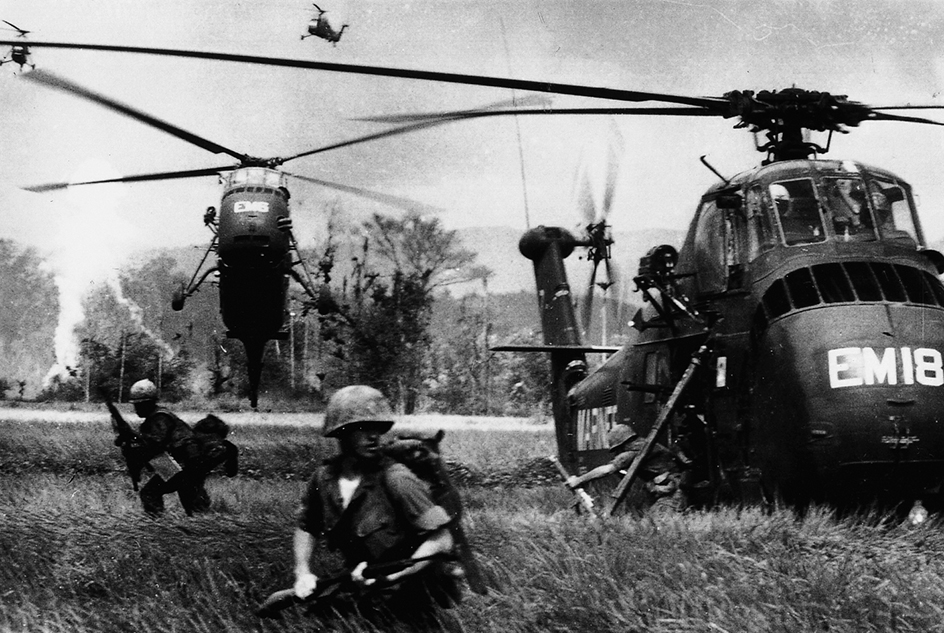
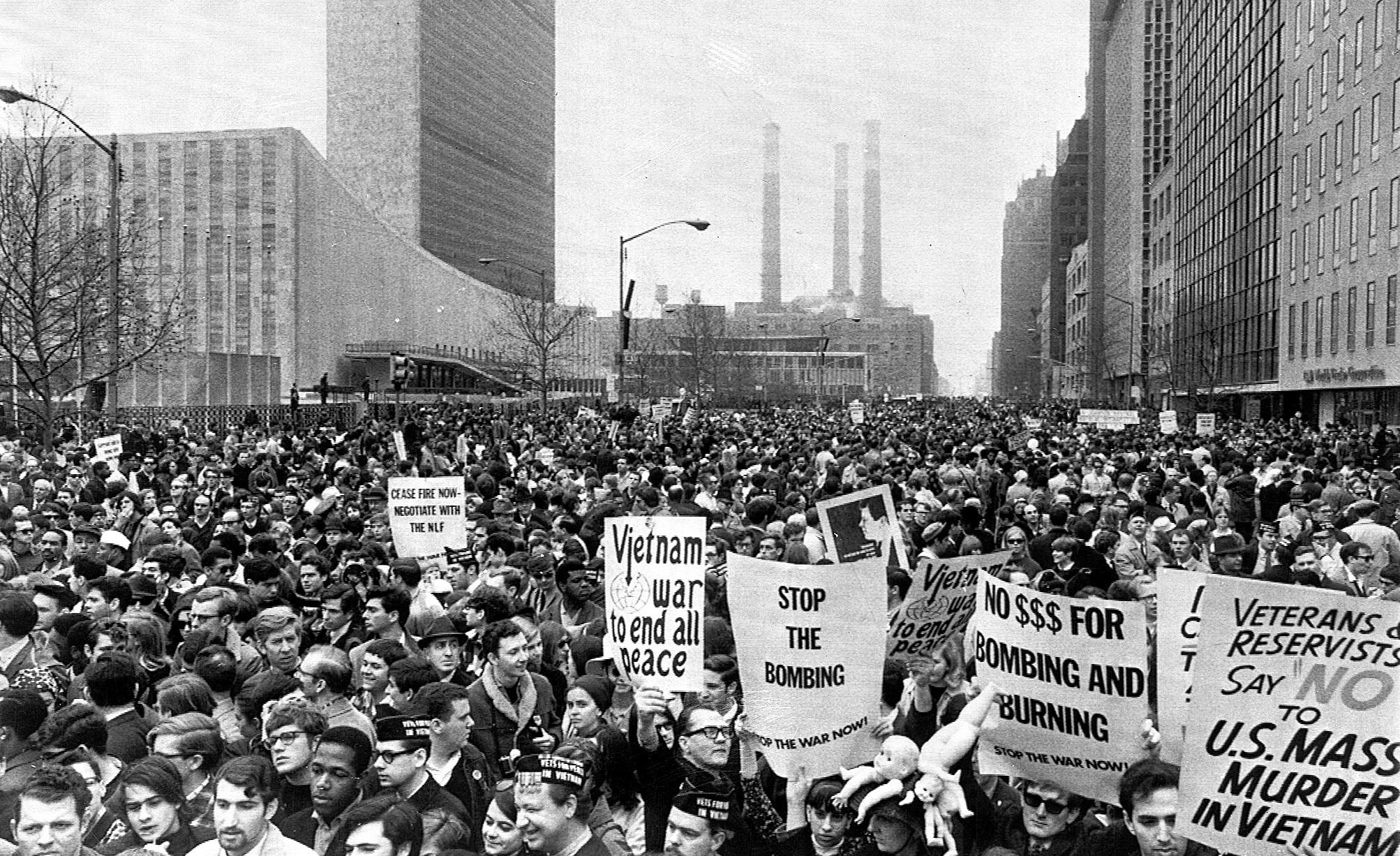
Public response to the Vietnam War differed from the near-unanimous support in World Wars I and II. Most Americans supported the war effort at first. But opposition to the war grew in the late 1960’s. Opponents of the war argued that the United States had no right to interfere in Vietnamese affairs. Throughout the nation, college students and others demonstrated against the war.
Richard M. Nixon, who became president in 1969, planned to withdraw U.S. troops and turn the fighting over to the South Vietnamese. In the process, however, Nixon escalated the war and spread the conflict into the neighboring country of Cambodia. He did not remove the last U.S. ground forces from Vietnam until 1973. Two years later, South Vietnam fell to the Communists.
United States participation in the Vietnam War had lasted through most of the third quarter of the 1900’s. The Vietnam War was one of the longest wars in which the United States took part. Only the Afghanistan War (2001-2021) was longer. The Vietnam War was also the first foreign war in which the United States failed to achieve its objectives.
Political scandals
in the 1970’s dismayed many Americans and damaged public regard for the country’s highest leaders. In 1973, Spiro T. Agnew, Nixon’s vice president, came under criminal investigation. A federal grand jury began hearing charges that he had participated in graft as an officeholder in Maryland. Agnew resigned from the vice presidency on Oct. 10, 1973.
In 1972, campaign workers for President Nixon’s reelection committed a burglary at the Democratic political headquarters in the Watergate building complex in Washington, D.C. Nixon was later charged with covering up the burglary and with other illegal activities. In July 1974, the Judiciary Committee of the House of Representatives adopted three articles of impeachment against the president. Evidence against Nixon mounted until it became apparent that the full House would impeach him and that the Senate would remove him from office. On Aug. 9, 1974, Nixon resigned as president. He was the only U.S. president ever to resign. See Watergate. 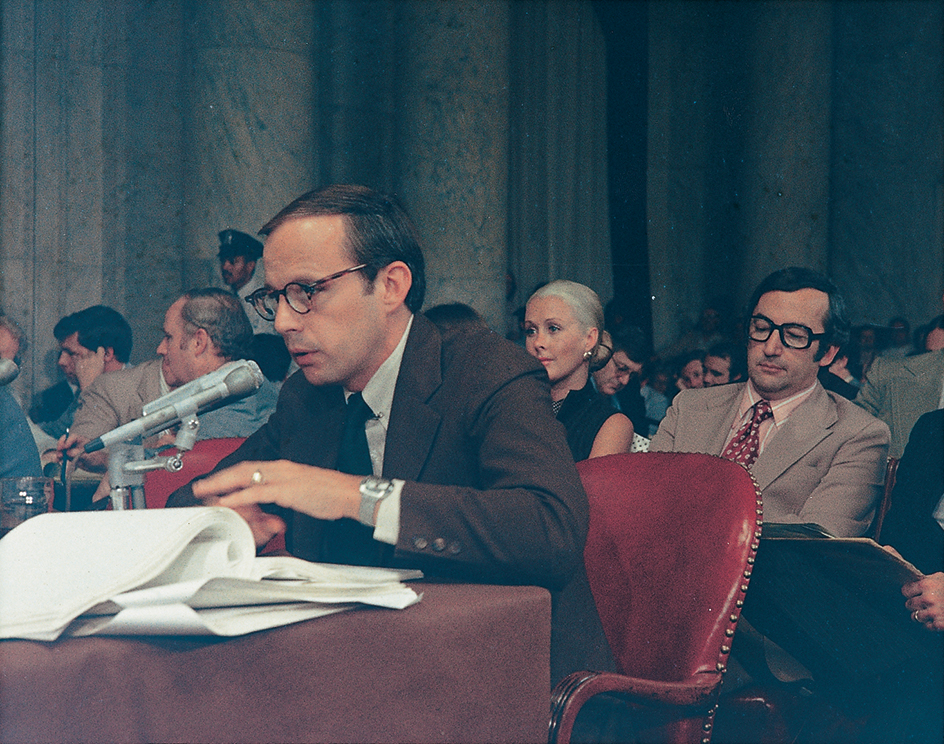
The hostage crisis.
A revolution overthrew the government of the shah of Iran in February 1979. In November of that year, Iranian revolutionaries took over the U.S. Embassy in Tehran, Iran’s capital, to protest American aid to the deposed shah. The revolutionaries held a group of U.S. diplomats as hostages and demanded that the United States return the shah to Iran for trial. The U.S. government refused to do so. The shah died in July 1980, but the revolutionaries held the hostages until January 1981. Many people thought that the United States failed to deal effectively with the crisis, particularly after an armed rescue attempt failed in April 1980.
The revival of conservatism.
During the 1970’s and 1980’s, numerous factors led to a revival of conservatism. Many formerly Democratic voters opposed such policies as court-ordered busing to integrate public schools; affirmative action, which increased opportunities for women and members of minority groups; and legalized abortion. Economic problems strengthened the appeal of lower taxes and of reduced government regulation. The hostage crisis and other setbacks in international affairs heightened fears about a decline of American power.
To convert this widespread discontent into support for their candidates and policies, conservatives organized the New Right network. Supporters of the New Right included millions of conservative Protestants called evangelical Christians, who previously had been disorganized and largely nonpolitical.
With the support of the New Right, Ronald Reagan won the presidency in 1980. Reagan, a conservative Republican, promised to scale back the role of government, cut taxes, rebuild the nation’s military strength, and unleash the energy of the marketplace to solve economic and social problems. Although Reagan did not accomplish all of his objectives, he made conservatism a powerful force in American life.
The Information Age.
The 1970’s had ushered in the spread of computers to homes, schools, and businesses throughout the land. Early computers, called mainframes, were large machines stored in special climate-controlled rooms. These early computers had few users, chiefly large businesses and governments. Computers quickly became more compact and able to do much more than the early models could. In the mid-1970’s, manufacturers introduced the personal computer (PC), and the use of computers began to soar. Schools and small businesses that could not afford big mainframes bought many of these compact machines. People throughout the country began buying PC’s for home use. By the 1980’s, computers were cheaper, easier to operate, and more useful than ever. The “computer revolution” had taken hold. 

New methods of communication changed the way people lived and worked in the 1980’s and 1990’s. The first commercial cellular telephone system went into operation in 1983. Fax machines, which had been invented much earlier, became common in business. Personal computers continued to grow smaller and more affordable. Notebook computers and tiny handheld computers became popular.
A network of computers called the Internet revolutionized life in the United States and elsewhere. It enabled computer users to exchange email messages and to share information in a variety of forms. The Internet and other technological marvels provided such a wealth of information that the period became known as the Information Age.
Economic changes.
High-technology industries grew tremendously. These industries manufactured advanced technology products, such as computers and aircraft. High-tech industries themselves used the most advanced and sophisticated electronics and other modern technology. Jobs in high-tech industries generally paid more than those in traditional industries and required advanced training and skills.
Service industries, those that provided services rather than agricultural products or manufactured goods, also took on a larger role in the economy. Meanwhile, the importance of mining, steel production, and automobile manufacturing declined. In agriculture, the family farm and tenant farming lost importance. These older systems were replaced by large, mechanized farms.
A painful adjustment followed the displacement of old forms of employment. Many people who lost their jobs in mining, manufacturing, and agriculture found it difficult to find new ones.
During the 1980’s and 1990’s, the economy of the United States became more integrated with those of other nations. The country’s economic partners included not only many European nations, as in the past, but also many Asian nations, such as Japan, Singapore, South Korea, Taiwan, and Thailand.
In 1989, a trade agreement between the United States and Canada began reducing trade barriers between the two countries. The North American Free Trade Agreement (NAFTA), which took effect in 1994, built on the 1989 pact. Under NAFTA, the United States, Canada, and Mexico gradually eliminated tariffs, import quotas, and other barriers to trade between the three countries. As a result of these changes, markets for United States goods and services expanded.
The end of the Cold War.
The containment of Communism had dominated U.S. foreign policy since the mid-1940’s. In the early 1970’s, President Nixon took steps to reduce tensions between the United States and the two leading Communist powers, China and the Soviet Union. He visited these two countries in 1972. Jimmy Carter, who became president in 1977, also tried to improve U.S. relations with China and the Soviet Union. In early 1979, the United States and China established normal diplomatic relations. Later that year, Carter and Leonid I. Brezhnev, leader of the Soviet Communist Party, signed a treaty that limited the use of U.S. and Soviet nuclear arms.
At the request of President Reagan, the United States sharply increased military spending in the 1980’s. But in 1987, Reagan and Soviet leader Mikhail Gorbachev signed a treaty to eliminate many of the ground-launched nuclear missiles of both nations. Gorbachev and George H. W. Bush, who became president in 1989, met several times and worked to increase cooperation between their countries. 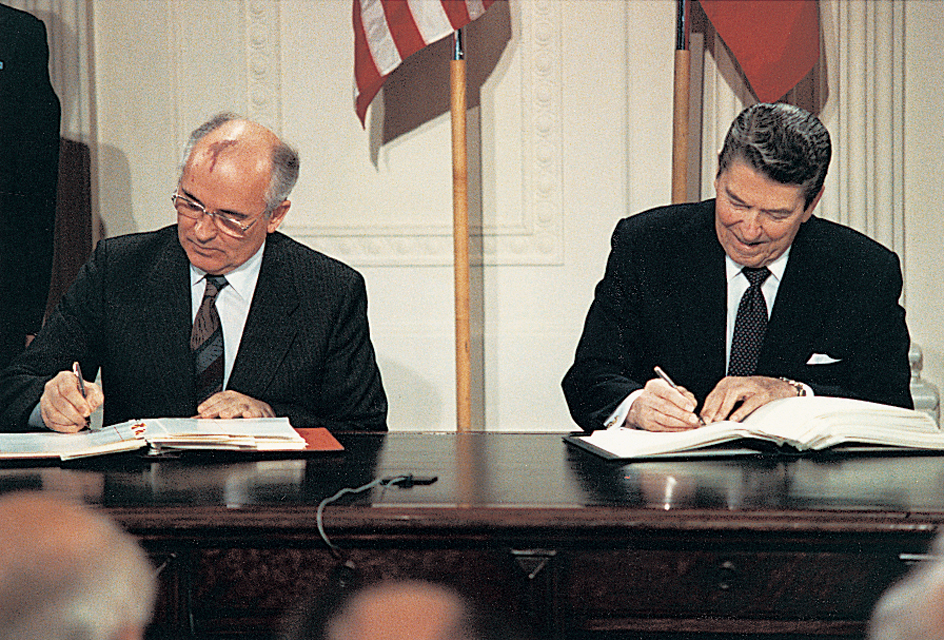
Discontent in the republics that made up the Soviet Union grew in the late 1980’s and early 1990’s. On Dec. 25, 1991, the Soviet Union was dissolved, and its republics became independent non-Communist nations. Russia was by far the largest of the nations. During the same period, Eastern European countries that had been part of the Soviet bloc experienced changes that led to the end of Communist rule in those countries. These events marked the end of the Cold War and left the United States as the world’s only superpower.
The Persian Gulf War.
United States foreign policy after the Cold War made increasing use of coalitions of nations and of cooperation with the United Nations. One of the largest efforts of this type was the Persian Gulf War of 1991. In 1990, Iraq invaded Kuwait, an oil-rich Arab country between the Arab countries of Iraq and Saudi Arabia. President George H. W. Bush ordered tens of thousands of U.S. troops to Saudi Arabia, largely to help defend that country against a possible Iraqi attack. Saudi Arabia was a U.S. ally and a major source of oil for the United States and other industrialized nations.
Bush put together a coalition of nations to oppose Iraq, including Arab and Western European states. The UN authorized the United States and other UN members to “use all necessary means” to expel Iraq from Kuwait if Iraq did not withdraw. Iraq refused to withdraw. The United States and its coalition partners then drove Iraq out of Kuwait in 1991. See Persian Gulf War of 1991.
The Balkan conflicts.
The European nation of Yugoslavia broke up in 1991, and a series of conflicts began on the Balkan Peninsula. In 1992, a civil war began in Bosnia-Herzegovina, formerly a republic of Yugoslavia. The war broke out between Bosnian Serb rebels and the country’s government, which was dominated by Bosniaks (also called Bosnian Muslims). The United States attacked Serb forces to help the Bosniaks. In December 1995, representatives of Bosnia, Croatia, and Serbia signed a peace plan that included a cease-fire policed by NATO. The United States sent troops to serve in the NATO peacekeeping force.
In 1999, the United States took part in NATO air strikes against Serbia. The purpose of the strikes was to halt Serbian attacks against ethnic Albanians in Serbia’s province of Kosovo. After Serbian leaders agreed to withdraw from Kosovo, NATO stopped the bombing and sent an international peacekeeping force. The United States also provided troops for that NATO force.
The Clinton impeachment.
Bill Clinton had taken office as president in 1993. In August 1998, he admitted to having a sexual affair with Monica Lewinsky, a White House intern, from late 1995 to 1997. In December 1998, the Judiciary Committee of the House of Representatives recommended several articles of impeachment against the president involving attempts to conceal his affair with Lewinsky. The House then impeached Clinton on charges of perjury (lying under oath) and obstruction of justice. In February 1999, the United States Senate held a trial on the impeachment and found Clinton not guilty. For more details, see Clinton, Bill (Domestic events).
The United States in the 2000’s (2000-…)
In the early 2000’s, the United States ranked as the most powerful country in the world. It had the world’s strongest military force, the richest economy, and the most influential popular culture. Americans had one of the highest standards of living in the world. Despite its power and influence, the United States faced many challenges. In particular, U.S. leaders grappled with decisions on when and where to involve U.S. military forces in international disputes.
Election of 2000.
Texas Governor George W. Bush was elected president in 2000 in one of the closest presidential elections in U.S. history. He narrowly defeated his Democratic opponent, Vice President Al Gore. The outcome was in doubt for several weeks after the vote. Delays resulted from recounts of the ballots in Florida and court challenges to the recounts. See Bush, George Walker; Bush v. Gore; United States presidential election of 2000. 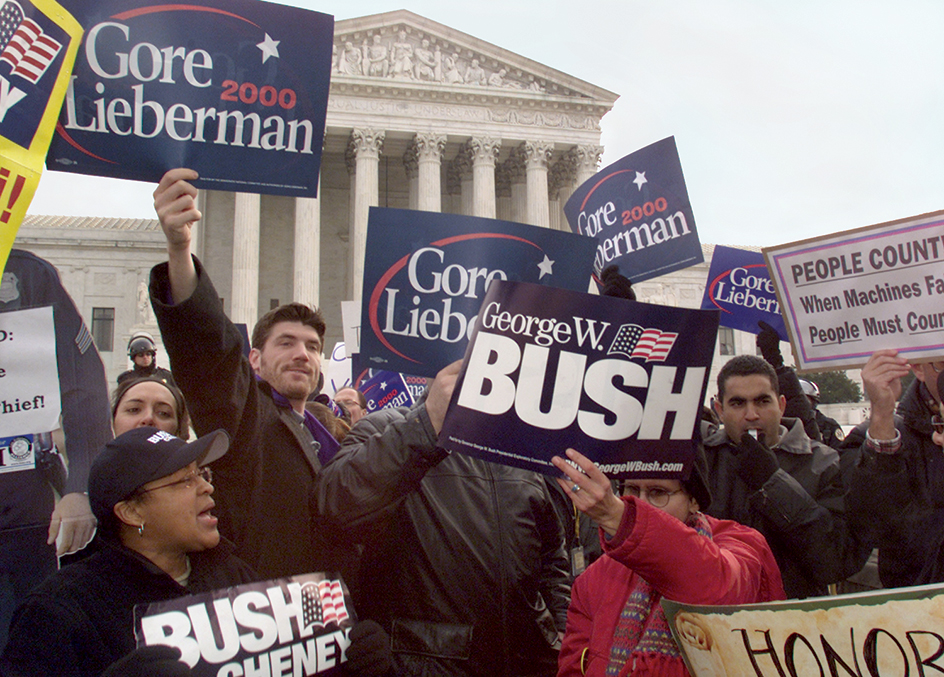
September 11 terrorist attacks.
On Sept. 11, 2001, the United States suffered the worst attack of terrorism in its history. Terrorists hijacked four commercial jets and crashed two of them into the two towers of the World Trade Center in New York City and a third into the Pentagon Building near Washington, D.C. The fourth hijacked plane crashed in Pennsylvania. The twin towers collapsed to the ground, and part of the Pentagon was destroyed. About 3,000 people were killed. President Bush called the attacks acts of war and called for a global “war on terror.” The United States and its allies launched a military campaign against Afghanistan, the headquarters of the terrorists responsible for the attacks. The campaign overthrew the Taliban—the Afghan government that had sheltered and aided the terrorists. See Afghanistan War; September 11 terrorist attacks. 

Later in 2001, Congress passed the Patriot Act to help prevent further terrorism. The act greatly expanded the powers of law enforcement officials to investigate the lives and actions of U.S. citizens and noncitizens. Supporters of the Patriot Act argued that the expanded powers were necessary to defend against terrorist threats. Opponents charged that many of its provisions unnecessarily restricted the rights of U.S. citizens. In 2003, Congress established the Cabinet-level Department of Homeland Security to improve the country’s defense against future terrorist attacks.
Afghanistan War.
United States and allied forces toppled Afghanistan’s Taliban government in fighting that began in October 2001. In November, Afghan anti-Taliban forces captured the capital, Kabul. However, the war did not end. Throughout the first decade of the 2000’s, insurgent fighters launched attacks against Afghan security forces and their allies. In 2003, Bush administration officials declared that “major combat” in Afghanistan had ended. Between 2005 and 2010, however, the American troop presence in the country increased from about 20,000 to 100,000. In 2011, NATO began transferring most security responsibilities to Afghan forces. The U.S. military operation to Afghanistan formally concluded at the end of 2014, replaced by a new operation to assist, train, and support Afghan government forces. In 2021, American leaders withdrew remaining U.S. troops from Afghanistan, and the Taliban quickly regained control of most parts of the country.
Iraq War.
Under the cease-fire agreement that ended the Persian Gulf War of 1991, Iraq had agreed to destroy its facilities for producing chemical, biological, and nuclear weapons. In 1993, Iraq formally agreed to a permanent ban on such weapons and to long-term monitoring of its weapons programs by UN inspectors. However, Iraq repeatedly clashed with the UN and refused to comply with the agreements.
In March 2003, a U.S.-led coalition of countries launched military action against Iraq. Bush said that Iraq possessed weapons of mass destruction—that is, biological, chemical, or nuclear weapons—and threatened the security of the United States and other countries. In April 2003, U.S.-led forces seized Baghdad, Iraq’s capital, causing the fall of Saddam Hussein’s government.
After major combat ended, the U.S.-led coalition forces remained in Iraq to provide security during Iraq’s transition to a constitutional government. Militant groups carried out attacks against coalition forces and Iraqi police and civilians. In the United States, opposition to continued U.S. presence in Iraq increased as insurgents killed more Americans and as other countries withdrew from the coalition. 
Bush faced increasing criticism as U.S. weapons inspectors failed to find weapons of mass destruction in Iraq. In 2004, Bush formed a commission to focus on finding out why federal intelligence agencies had provided him with apparently inaccurate information about Iraq’s weapons. The commission’s report in 2005 blamed faulty gathering of intelligence for the misleading information.
American combat operations in Iraq formally ended on Aug. 31, 2010. Thousands of U.S. troops remained, however, to fight terrorism and train Iraqi forces. On Dec. 15, 2011, a U.S. military ceremony in Baghdad marked the official end of the Iraq War. See Iraq War.
Hurricane Katrina.
In 2005, the United States suffered one of the worst natural disasters in its history when Hurricane Katrina struck the Gulf Coast. The hurricane caused about 1,800 deaths and widespread destruction in coastal areas from Louisiana to Florida. In New Orleans, flood defenses failed, and floodwaters covered most of the city for weeks. Officials estimated recovery costs would exceed by far those of any other disaster in U.S. history. See Hurricane Katrina. 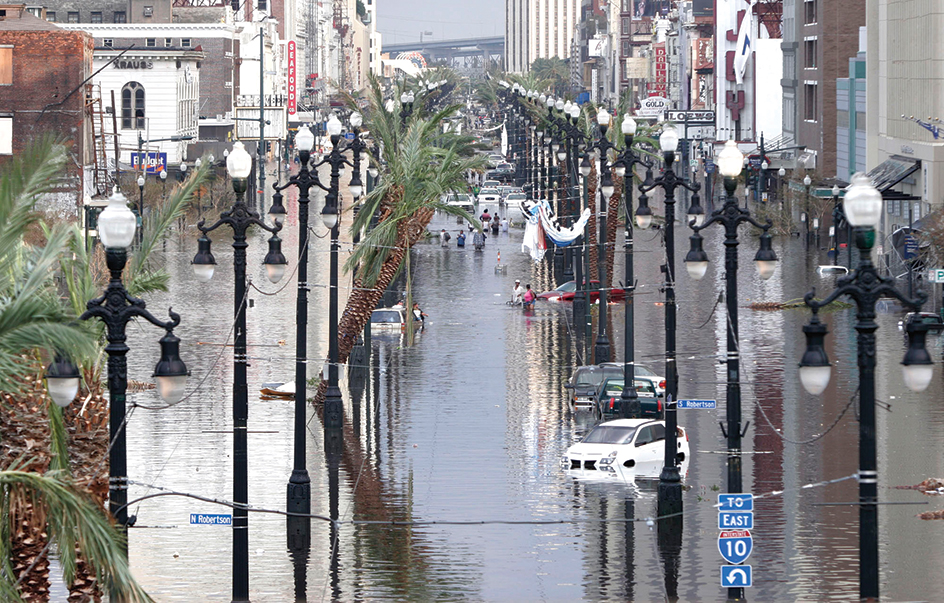
Immigration.
During the spring of 2006, millions of immigrants and their supporters held rallies in several U.S. cities to protest a proposed federal law that would increase penalties for undocumented immigration. In October, President Bush signed into law a bill that authorized the building of new fences along the United States-Mexico border.
In May 2007, tens of thousands of people in several U.S. cities participated in rallies for immigrant rights. The demonstrations, which were smaller than the immigration rallies of 2006, largely focused on the federal government’s failure to pass significant immigration reform legislation. Experts estimated that in the late 2010’s, about 11 million illegal immigrants lived in the United States, most from Mexico and other Latin American countries.
Mass shootings.
In the late 1900’s and early 2000’s, gun attacks on schools, workplaces, and entertainment venues increased in frequency, leaving the country awash in feelings of grief and helplessness. Shooting rampages occurred in dozens of places, including Columbine High School in Colorado in 1999; Virginia Tech University in 2007; Binghamton, New York, and Fort Hood (now Fort Cavazos), Texas, in 2009; Aurora, Colorado, and Sandy Hook Elementary School in Connecticut in 2012; the Washington Navy Yard in Washington, D.C., in 2013; the “Mother Emanuel” church in Charleston, South Carolina, and San Bernardino, California, in 2015; an Orlando, Florida, nightclub in 2016; a country music concert in Las Vegas, Nevada, and a Baptist church in Sutherland Falls, Texas, in 2017; Marjory Stoneman Douglas High School in Parkland, Florida, in 2018; stores in El Paso, Texas, in 2019 and Buffalo, New York, in 2022; an elementary school in Uvalde, Texas, in 2022; and Lewiston, Maine, in 2023. 
The shootings led many to call for authorities to enact measures to help prevent such attacks, such as stricter regulation of firearms and increased funding to treat mental illness. Many gun-rights proponents, however, framed any calls for increased gun control—such as expanded background checks on gun purchasers and limits on especially deadly “assault weapons”—as unconstitutional attacks on the Second Amendment to the U.S. Constitution. The amendment protects citizens’ rights to own firearms for such purposes as self-defense and hunting.
Financial troubles.
In the early 2000’s, a series of corporate financial scandals severely damaged the confidence of investors in U.S. businesses and U.S. stocks. Several corporations—including Enron Corporation, a leading energy company, and WorldCom Inc., a global telecommunications firm—were found to have used dishonest accounting practices. In 2002, Bush signed into law a corporate reform bill that called for increased punishments for corporate fraud and established an independent board to oversee the accounting industry.
The nation’s economy took a sharp downturn in 2008. Many financial firms suffered huge losses, largely related to risky mortgages called subprime mortgages. In September, several large firms failed or were bailed out by the U.S. government. The stock market plunged. In October, Congress passed a law that provided up to $700 billion for the government to purchase bad debts from troubled lenders. Bush administration officials hoped the bailout would restore confidence in the financial markets and make it easier for businesses and individuals to obtain bank loans.
Historic election.
Voters in the United States made history on Nov. 4, 2008, by electing Senator Barack Obama, a Democrat from Illinois, the nation’s first African American president. Obama defeated Senator John McCain, a Republican from Arizona. See Obama, Barack. 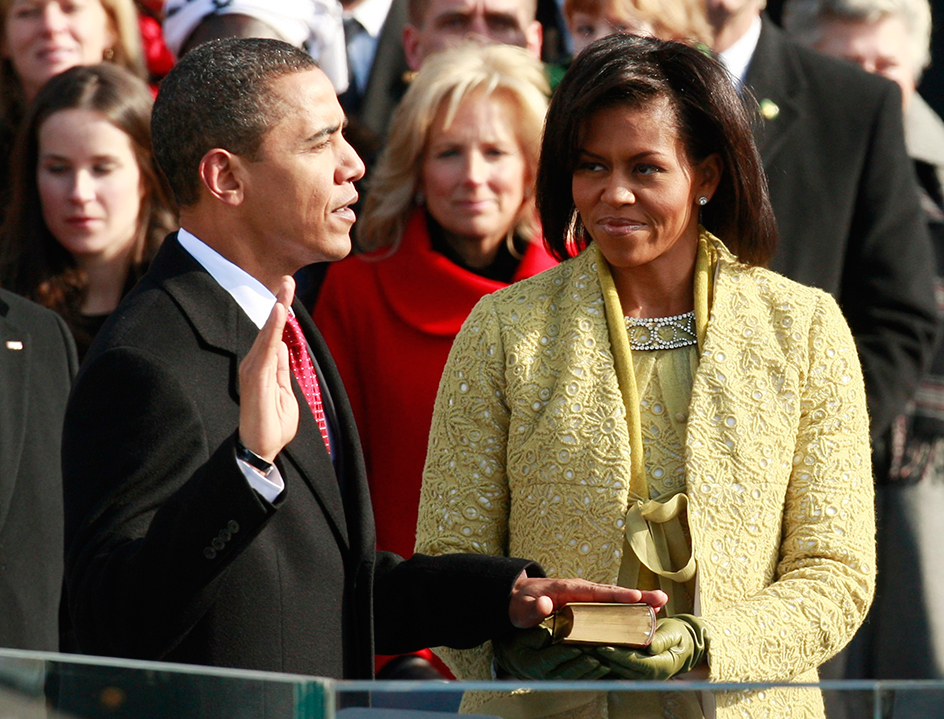
Obama’s first major challenge as president was to deal with the economic crisis. In February, he signed a nearly $800-billion economic stimulus bill to shore up an economy reeling from high unemployment and slumping financial markets. In foreign affairs, Obama eased restrictions on family travel to Cuba and pledged to end all U.S. combat operations in Iraq by 2010. By the end of August 2010, all U.S. combat troops had left Iraq. Thousands of soldiers remained in the country to provide security and train Iraqi forces.
In March 2010, Congress passed, and Obama signed, a historic health insurance reform act that extended coverage to about 30 million uninsured Americans. The Patient Protection and Affordable Care Act expanded Medicaid coverage and prevented insurers from dropping patients with preexisting medical conditions. It created a system of health insurance exchanges in which insurance providers offer plans for uninsured and self-employed people to purchase. The law also contained measures to decrease long-term expenditures on health care.
Obama was reelected in 2012. He defeated his Republican opponent, former Massachusetts Governor Mitt Romney.
Environmental disaster.
In April 2010, an explosion on an offshore oil rig killed 11 people and caused a huge oil spill. About 134 million gallons (507 million liters) of oil from an underwater well poured into the Gulf of Mexico, about 50 miles (80 kilometers) off Louisiana. For nearly three months, the U.S. Coast Guard and BP, the rig’s operator, worked to stop the flow of oil. Within a month of the explosion, the oil had contaminated coastal marshes and harmed sea birds and marine life. BP engineers capped the well in July and permanently sealed it in September. Officials called the spill one of the worst environmental disasters in U.S. history. See Gulf oil spill of 2010. 
Death of bin Laden.
On May 1, 2011, President Obama announced on national television that the terrorist leader Osama bin Laden had been killed. Bin Laden was the leader of the al-Qa`ida terrorist network, the group responsible for the attacks of Sept. 11, 2001. Early on the morning of May 2, 2011 (May 1 in the United States), a team of Navy SEALs shot and killed bin Laden in a nighttime helicopter raid on the terrorist leader’s compound in northern Pakistan.
Hurricane Sandy.
In late October 2012, Hurricane Sandy struck the eastern United States after causing great destruction in the Caribbean Islands. More than 100 people were killed, and millions of homes lost power. Coastal areas, particularly the New Jersey shore and New York City, suffered severe flooding and widespread damage. See Hurricane Sandy.
Devastating explosions.
Terrorist violence marred the running of the Boston Marathon on April 15, 2013. Two homemade bombs exploded near the finish line of the historic race, killing 3 and injuring more than 200. After the bombing, two terrorist suspects killed a law enforcement officer and wounded several others. On April 19, one of the suspects was killed. The other was captured and later found guilty of the crimes and sentenced to death. On April 17, a fire and explosion at a fertilizer plant in the town of West, Texas, killed 15 and wounded 260. In 2016, investigators with the federal Bureau of Alcohol, Tobacco, Firearms and Explosives determined that the fire had been intentionally set. See Boston Marathon bombing. 
Government shutdown.
In September, Republicans in the House of Representatives passed a federal budget that stripped funding from the Affordable Care Act, the 2010 health insurance law commonly known as Obamacare. The Senate, at that time controlled by Democrats, rejected the House’s insistence that the budget defund the health law. The two chambers thus failed to agree to a government funding plan for the fiscal year beginning Oct. 1, 2013, resulting in a partial shutdown of many federal agencies. The shutdown ended early on October 17, when Obama signed a bill that offered few concessions to his Republican opponents.
Islamic State.
The advances of an extremist militant group known as the Islamic State raised alarm internationally in the summer of 2014. The group has also been known as the Islamic State in Iraq and Syria (ISIS) or the Islamic State in Iraq and the Levant (ISIL). In August, the United States and its international allies began air strikes against Islamic State targets in Iraq. Strikes against Islamic State targets in Syria began the following month. In September, Congress approved President Obama’s plan to train and arm moderate Syrian rebels fighting the militants. The moderate rebels were also fighting against the government forces of Syrian President Bashar al-Assad.
Relations with Cuba.
In the summer of 2015, President Obama announced that the United States had restored diplomatic relations with Cuba. The countries reopened embassies in Washington, D.C., and Havana, Cuba, that had been closed since 1961. In 2016, Obama became the first U.S. president to visit Cuba since Calvin Coolidge made a journey there in 1928.
Succeeding Obama.
During the first half of 2016, political candidates competed for the opportunity to shape domestic and foreign policy following Obama’s presidency. His second term as president was scheduled to end in January 2017. In July 2016, the Republican Party officially nominated Donald J. Trump, a reality television star and New York-based real estate developer, for president. Later that month, Democrats nominated Hillary Rodham Clinton, a former first lady, senator, and U.S. secretary of state. Throughout the fall, the candidates appealed to voters at campaign rallies and at three nationally televised presidential debates. As citizens prepared to vote in the November 8 election, they considered the candidates’ positions on such issues as immigration reform, international trade, national security, taxes, and civil rights. 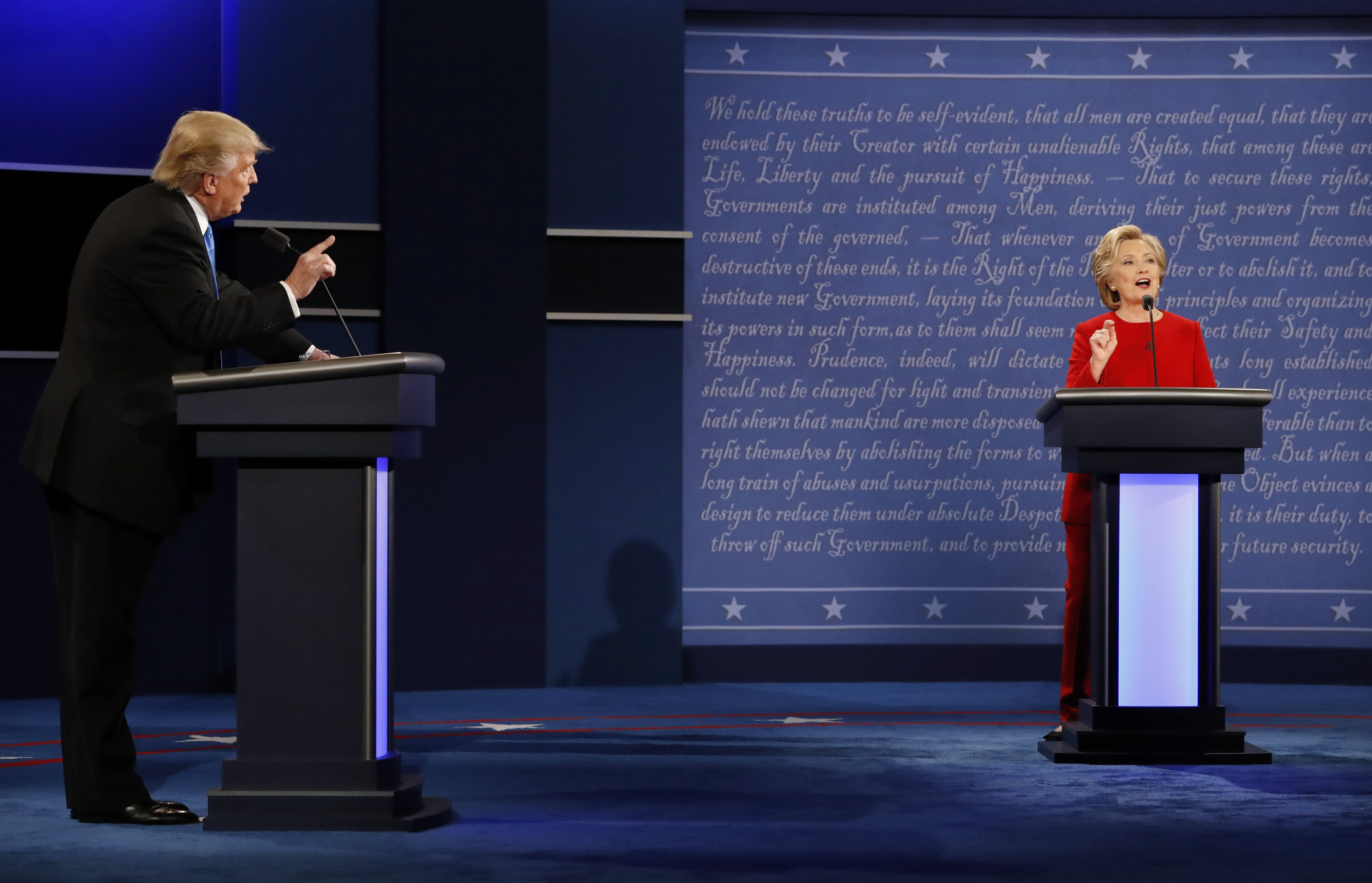
On November 8, Trump defeated Clinton. Polls had given Clinton a high chance of winning the presidency, but Trump won narrow victories in each of the so-called swing states (states that do not vote predictably Democratic or Republican) en route to victory in the Electoral College. However, Clinton captured the popular vote by nearly 3 million votes. Trump was sworn in as president on Jan. 20, 2017.
Hurricanes
caused great destruction in the Caribbean Sea and the Southern United States in late summer 2017. Hurricane Harvey set rainfall records and caused catastrophic flooding in Texas. Hurricane Irma—one of the strongest and longest-lasting hurricanes ever recorded—left millions without electric power after striking Florida. Each storm killed scores of Americans. Soon afterward, Hurricane Maria devastated Puerto Rico. Dozens of people were killed as a direct result of the storm, and damage to the island’s water, electric, and health care infrastructure contributed to the deaths of thousands more. 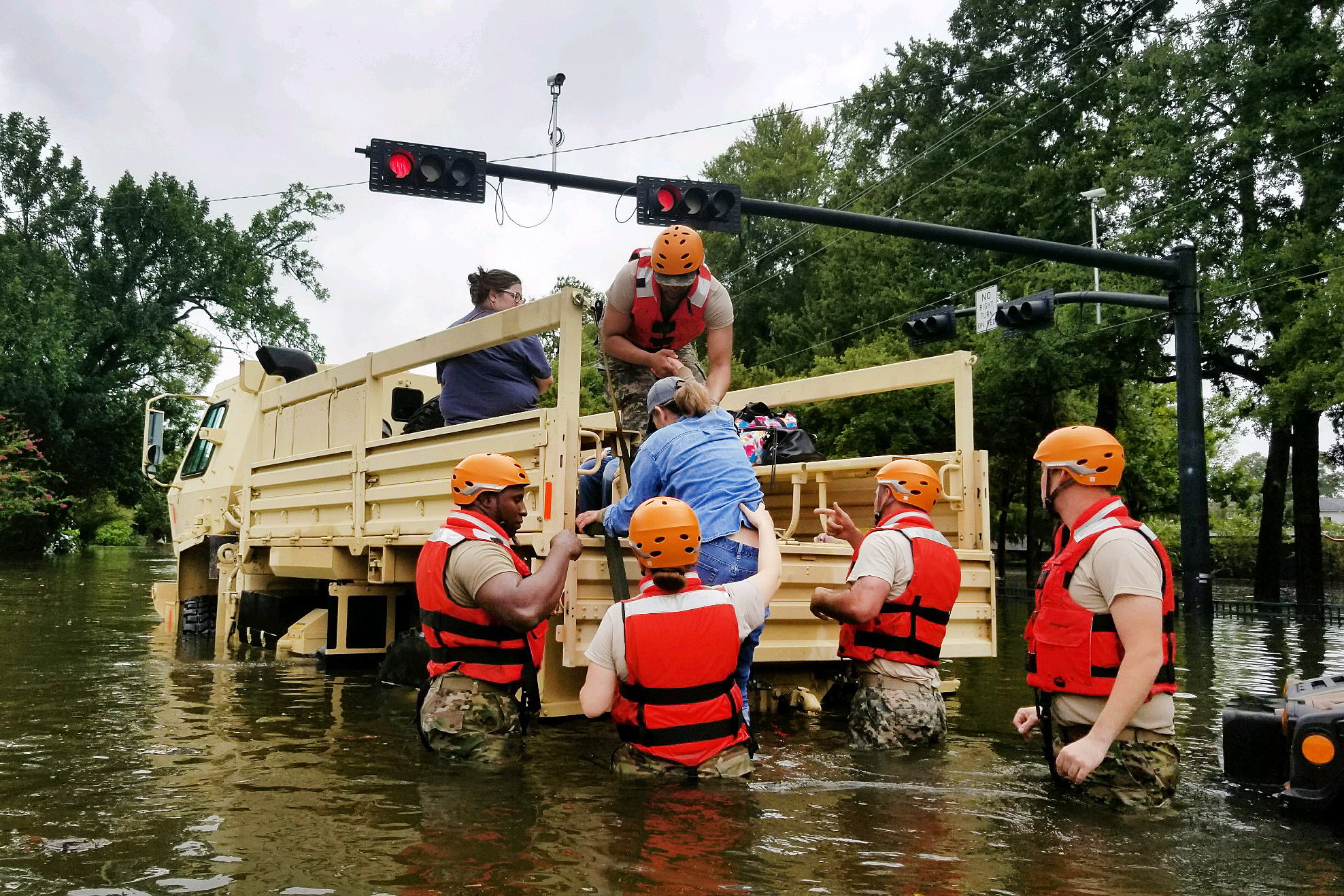
The Trump impeachment.
In December 2019, the House of Representatives impeached President Trump. The Democrat-controlled House approved two articles of impeachment: (1) abuse of power, for urging a foreign power—Ukraine—to investigate a domestic political rival; and (2) obstruction of Congress, for blocking administration witnesses from speaking to investigators. Trump admitted that he had pressured Ukraine to investigate political rival Joe Biden but insisted he had done nothing wrong. In January 2020, a trial began in the Republican-controlled Senate. In February, the Senate, voting almost entirely along party lines, acquitted Trump on both charges.
COVID-19.
In early 2020, the spread of the contagious respiratory disease COVID-19 became a matter of urgent concern around the world. The disease, caused by a type of coronavirus, first caused an outbreak in Wuhan, China, late in 2019. It quickly spread to other nations. In January 2020, residents of such states as California, Illinois, and Washington became some of the first Americans to be infected by the virus. State and local leaders throughout the country called for residents to take extra precautions, including the frequent washing of hands and avoiding large gatherings. In the following weeks, schools closed and public events were canceled.
As the number of infections spiked overseas, President Trump issued restrictions on some travel from China and Europe. By mid-March, infections had occurred in every U.S. state. Many governors directed residents to stay in their homes. In many areas, businesses—with the exception of grocery stores, banks, gas stations, and other establishments considered essential to the public—were ordered to close.
The metropolitan areas of Seattle, San Francisco, and New York City were among the first U.S. cities hard-hit by the virus. Major outbreaks soon occurred in Chicago, Detroit, Los Angeles, and New Orleans. Hospitals reported shortages of virus tests, protective masks and gowns, ventilators, and other supplies. The World Health Organization labeled the COVID-19 outbreak a pandemic (global epidemic). On March 13, Trump declared a “national emergency,” enabling authorities to direct more than $40 billion toward fighting the pandemic. Congress, in efforts to stabilize the economy, considered proposals to provide financial aid to vulnerable individuals and businesses.
On March 27, the House passed, and Trump signed, a $2-trillion economic relief bill to help the nation withstand the downturn in economic activity caused by the spread of COVID-19. The Senate had approved the bill two days earlier. The measure—known as the Coronavirus Aid, Relief, and Economic Security Act, or CARES Act—became by far the largest stimulus package in U.S. history. It contained $100 billion for health care facilities; relief funds for state and local governments; and more than $800 billion in loans for small businesses and distressed industries. The act also extended unemployment benefits and included one-time payments to millions of Americans.
Over the six-week period that ended April 25, more than 30 million people filed unemployment claims. Also in late April, Congress passed, and Trump signed, another relief measure. The $484-billion package contained more than $300 billion in small business loans. It also contained funds for hospitals and the expansion of virus testing.
In April, conservative demonstrators began holding protests against coronavirus restrictions in Michigan, Oregon, Virginia, and a number of other states. Trump signaled his support of the protests in his comments on Twitter (now called X). By May, a number of states had lifted some restrictions on business activity and began planning for an eventual return to normalcy. Coronavirus infection rates, however, remained high in many parts of the country. In early summer, spikes in infections occurred in a number of states, prompting officials to pause or reverse some of their reopening plans. Later in the year, state and local authorities raised or eased restrictions on business and social activity based on the severity of local infection rates. U.S. officials approved a COVID-19 vaccine for emergency use in December.
In late December, Congress passed, and Trump signed, a $900-billion pandemic relief bill that included emergency funds for hospitals, nursing homes, schools, and businesses. The measure also provided for the purchase and distribution of vaccines, extended unemployment benefits, continued a moratorium (suspension) on evictions, and authorized $600 payments to millions of Americans. The distribution of vaccines to the general population became a major priority of President Joe Biden and of federal, state, and local governments in 2021. Higher vaccination rates led to lower infection and death rates in the first half of the year. In late 2021 and early 2022, however, the spread of new, more contagious variants of the virus led to increases in infection rates. Most of the severe cases occurred among people who chose to remain unvaccinated.
By early 2022, a large majority of U.S. adults had been vaccinated against COVID-19. Many Americans received regular COVID-19 booster shots—that is, additional vaccine doses that help the body maintain immunity. However, people who refused to be vaccinated formed a sizable and vocal minority. After another decline in infection rates, authorities began to treat COVID-19 as a threat that could be managed, but not eliminated. Most jurisdictions ended requirements that people wear face masks indoors in public places. By early 2023, more than 1.1 million Americans had died from COVID-19.
Protests and violence.
In May 2020, demonstrators in Minneapolis and many other U.S. cities protested the death of George Floyd, an unarmed African American man, while in police custody. Graphic video footage had shown a white Minneapolis police officer kneeling on Floyd’s neck following Floyd’s arrest for alleged forgery. The police officer was fired and charged with third-degree (not intentional or premeditated) murder and second-degree manslaughter days after Floyd’s killing. Following days of mostly peaceful protests, some demonstrations turned violent and destructive. In Minneapolis; Chicago; Washington, D.C.; New York City; Atlanta; Las Vegas; Portland, Oregon; and a number of other cities, some people took advantage of the police focus on protests to loot and destroy businesses. In many places, authorities set curfews and called in National Guard troops to help police restore order. In some instances, authorities accused outside political or criminal groups of exploiting the protests to fuel unrest.
In June, Minnesota prosecutors added felony murder in the second degree (unintentional murder while committing a felony) to the officer’s charges. Charges were also filed against three other officers for aiding and abetting (encouraging) second-degree murder. Protests against racial injustice continued across the country and in many other places around the world. In April 2021, a jury found Floyd’s killer guilty of all three charges.
The 2020 presidential campaign
pitted President Trump against Democrat Joe Biden. Biden had served as vice president in the administration of Barack Obama. Trump and Biden sparred over the administration’s record on COVID-19, policy toward strategic rivals China and Russia, and the intent of the protests against racial injustice. Election day was November 3. Trump’s chances seemed favorable on election night, when voting tallies remained incomplete. In some states, however, state law prohibited the counting of mail-in ballots until polls closed on the night of the election. Millions of vote-by-mail ballots were counted in the following days, and Biden pulled ahead of Trump in such key states as Pennsylvania and Georgia. On November 7, major news outlets called the election for Biden. Trump refused to concede, however, and challenged several state results via lawsuit. On November 23, following a string of legal defeats, the Trump administration authorized the start of the formal transition to a Biden administration. The Electoral College confirmed Biden’s victory on December 14. Both Biden—with about 81 million votes—and Trump—with 74 million—received more popular votes than any presidential candidate in U.S. history.
On Jan. 6, 2021, pro-Trump protesters stormed the U.S. Capitol while Congress was in session to certify the Electoral College result. Lawmakers, including Vice President Pence, were ushered to safety as some protesters looted offices and caused other damage. Many police officers suffered injuries. Police shot and killed one protester, and dozens of others were arrested. Hours before, Trump had held a rally near the White House in which he repeated unsubstantiated claims of election fraud. Trump later recorded a video message declaring his affection for protesters before requesting they “go home in peace.” Washington, D.C., issued a nightly curfew, and National Guard troops were deployed in the city. Congress reconvened later in the evening after law enforcement personnel secured the Capitol. After some debate, members voted to certify the electoral vote. At about 3:30 a.m. on January 7, Pence formally confirmed Biden’s victory in the election.
On January 13—one week after the mob attack on the Capitol and a week before the president was due to leave office—the House impeached Trump for a second time. Representatives, voting 232 to 197, approved a single article of impeachment—incitement of insurrection—for “inciting violence against the government of the United States.” Trump’s second impeachment trial took place in the Senate in February. Seven Republican senators joined Democrats in voting to convict the former president on the charge of incitement of insurrection. The 57-to-43 vote fell 10 votes short, however, of the 67 votes required for a conviction.
The Biden presidency.
Biden was inaugurated as the nation’s 46th president on Jan. 20, 2021. Early priorities for Biden’s presidency included accelerating the distribution of COVID-19 vaccines and negotiating a new stimulus bill to address the continuing health and economic challenges posed by the pandemic. In March, Biden signed a $1.9-trillion coronavirus relief bill—the first major legislation of his presidency. The relief package included funding for vaccine distribution, schools, and local governments; tax credits for child care; and stimulus payments for low- and middle-income Americans. Republicans in the House and Senate had favored a much smaller stimulus package, and none of them supported the bill.
In April, Biden announced that he was ending the “forever war” in Afghanistan and removing the last U.S. troops from the country by September. Taliban forces retook several major cities in the weeks following the announcement. Many Afghans had relied on U.S. and NATO forces for protection from the Taliban, and thousands fled to Kabul’s airport. United States and allied personnel evacuated about 124,000 people from the country. Biden drew widespread criticism in August, however, after broadcasts showed desperate Afghans rushing to overcrowded evacuation planes. Later in the month, a terrorist bombing at the Kabul airport killed at least 170 people, including 13 U.S. troops. The last U.S. soldiers left Afghanistan on August 30.
Negotiations in Congress over the size and scope of a major infrastructure bill extended through the summer and fall of 2021. In November, the House passed, and Biden signed, a $1-trillion infrastructure bill to upgrade the electricity grid, expand high-speed internet access, and repair aging roads, bridges, and rail lines.
War in eastern Europe became a top concern of the American public in 2022. Russian forces, under the orders of Russian President Vladimir Putin, invaded Ukraine in February. The United States condemned Russia’s aggression and provided Ukraine with billions of dollars in economic assistance, military equipment, and humanitarian aid. The Biden administration also imposed strict economic sanctions on Russia and sent thousands of additional U.S. soldiers to NATO bases in Europe.
In August 2022, Congress passed, and Biden signed, the Inflation Reduction Act. The law provided funding to reduce health care costs, invest in clean energy projects, collect taxes from high earners and large corporations, and reduce the federal budget deficit. The legislation passed in both the House of Representatives and the Senate with no support from Republicans.
Republicans captured the House in the November 2022 elections . Democrats maintained control of the Senate. The remainder of Biden’s legislative agenda had poor chances of advancing through the divided Congress. In 2024, however, Congress passed a Biden-supported measure providing military aid to Ukraine, Israel, and Taiwan.
Biden and Trump both sought renomination for president by their respective parties in 2024. They encountered few difficulties in securing the required number of delegates for nomination. By March, each candidate had become his party’s presumptive (likely) nominee. At that time, Trump was the target of numerous criminal investigations, and civil judgments had required him to pay hundreds of millions of dollars in damages and penalties. Despite Trump’s legal difficulties, support for him remained strong in the Republican Party. Immigration and foreign policy ranked among the top concerns of voters.
Trump became the official Republican nominee in July 2024. He chose J. D. Vance, a U.S. senator from Ohio, as his vice presidential running mate. Later that month, Biden ended his reelection campaign amid widespread concern about his age and health. Biden recommended that the Democratic Party choose Vice President Kamala Harris as its nominee for president. Harris became the party’s official nominee in August. She picked Tim Walz, governor of Minnesota, as her vice presidential running mate.
